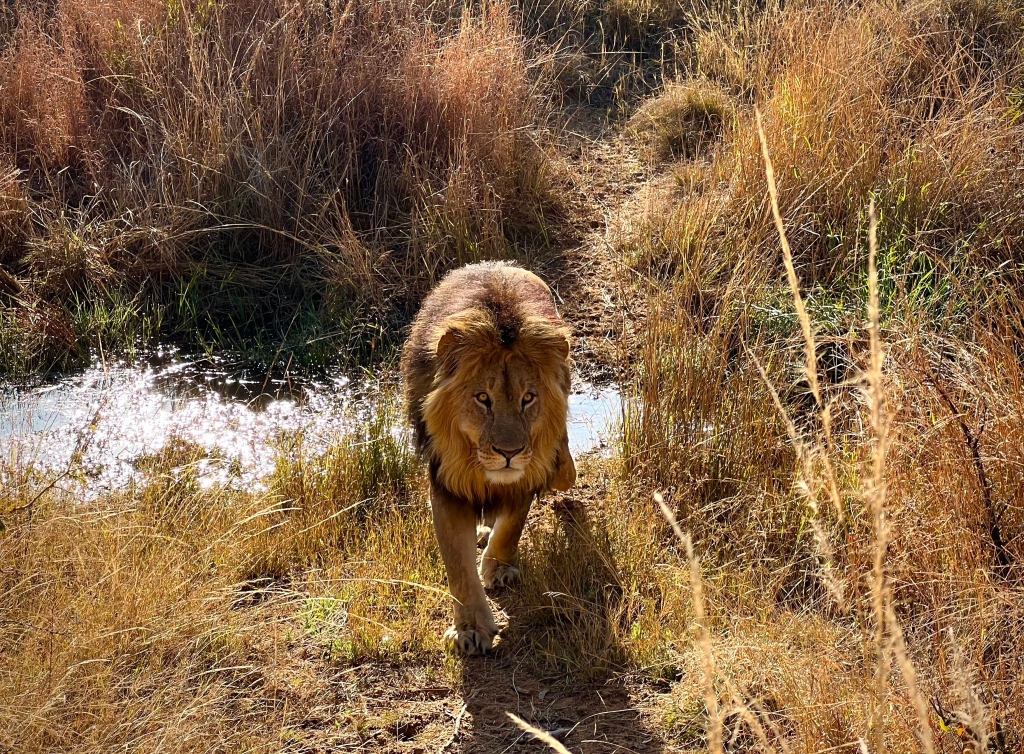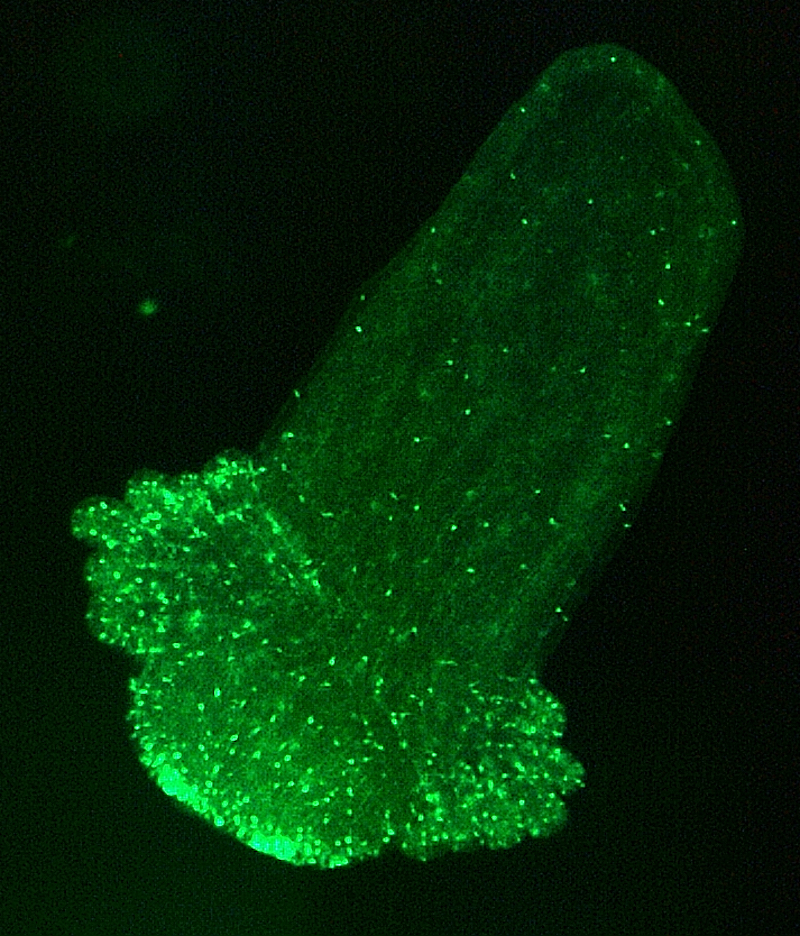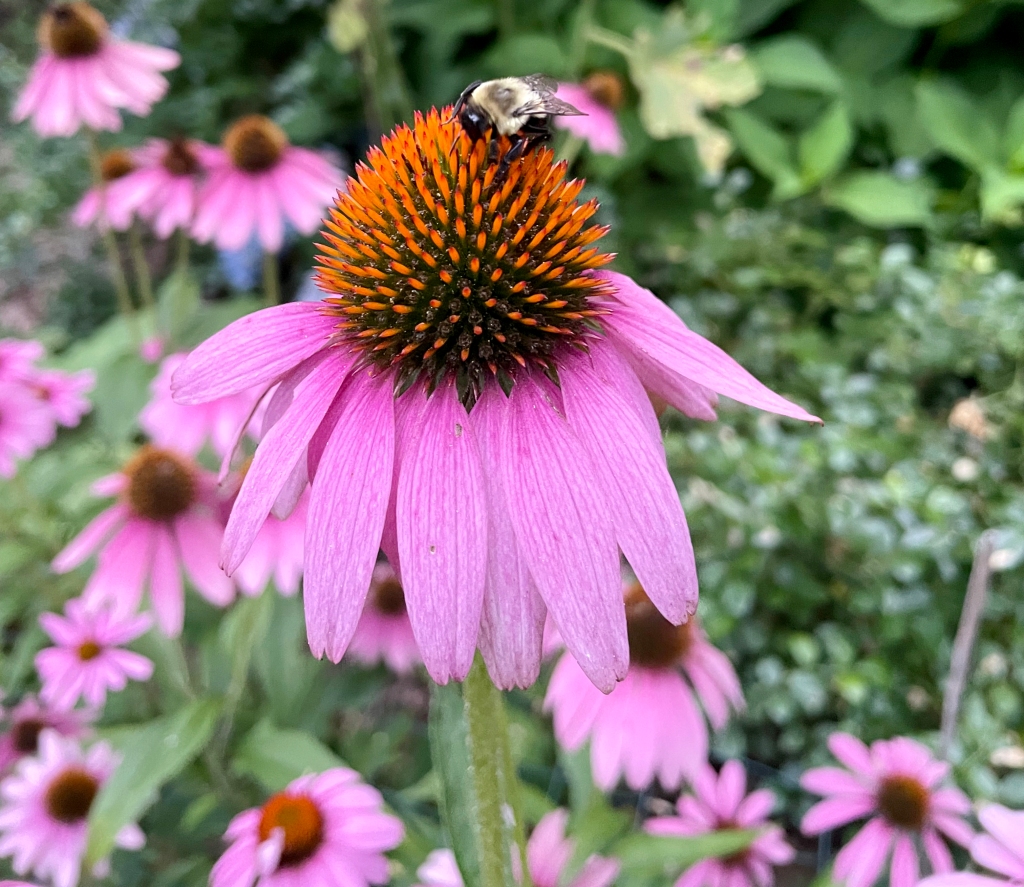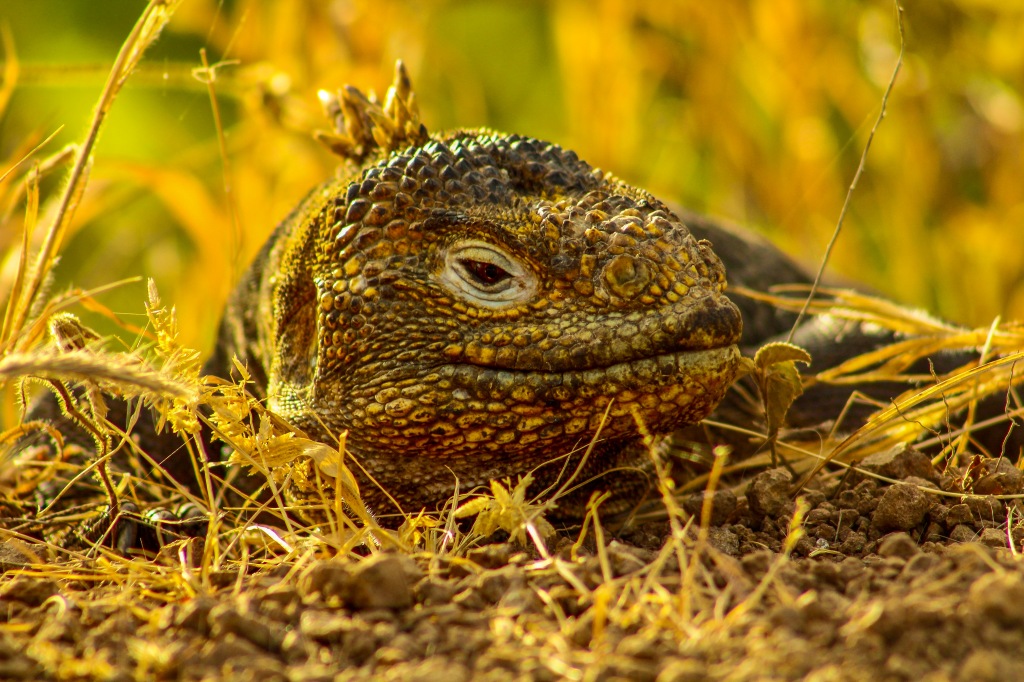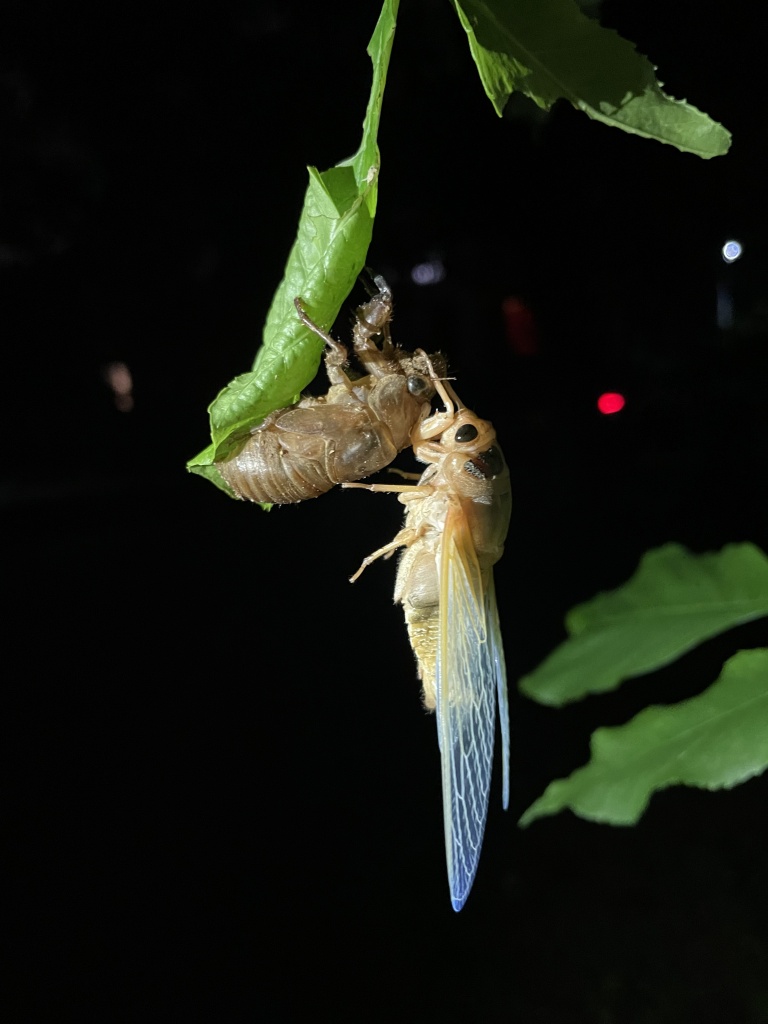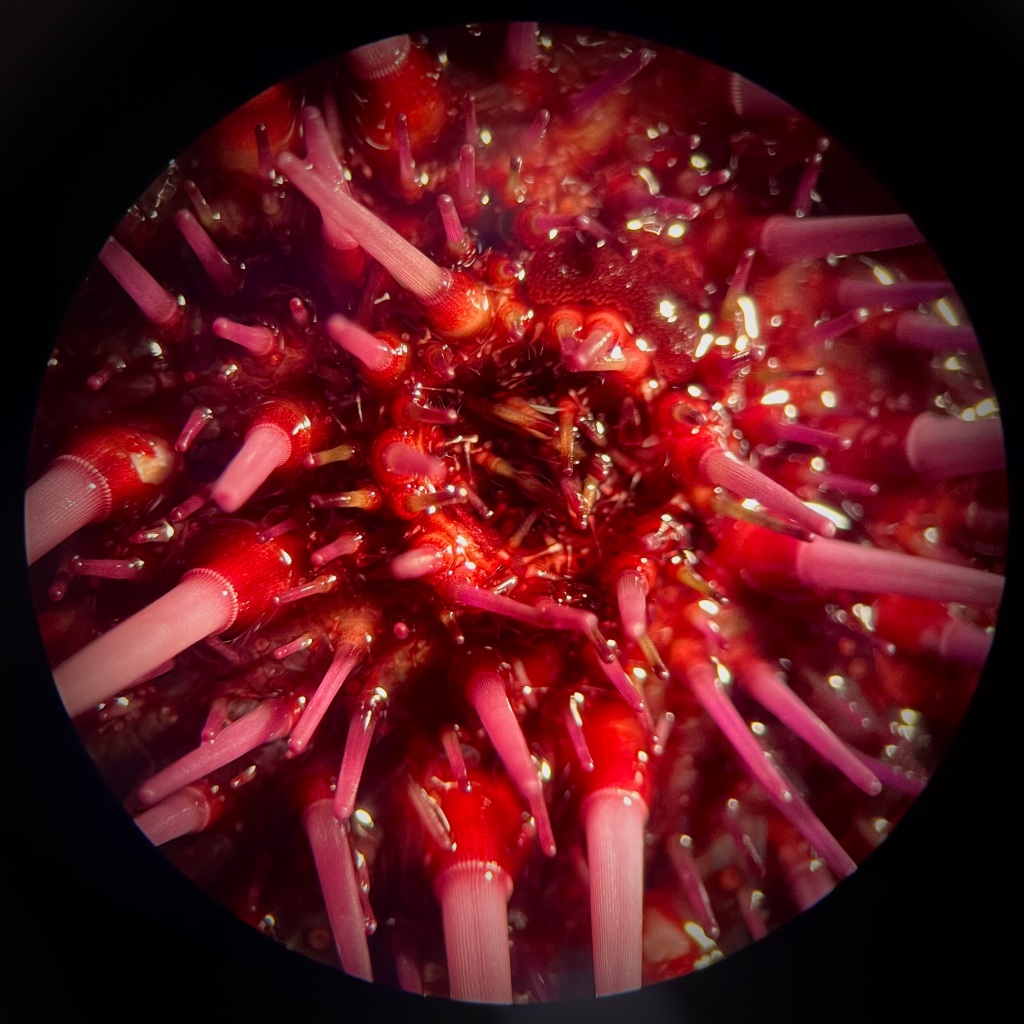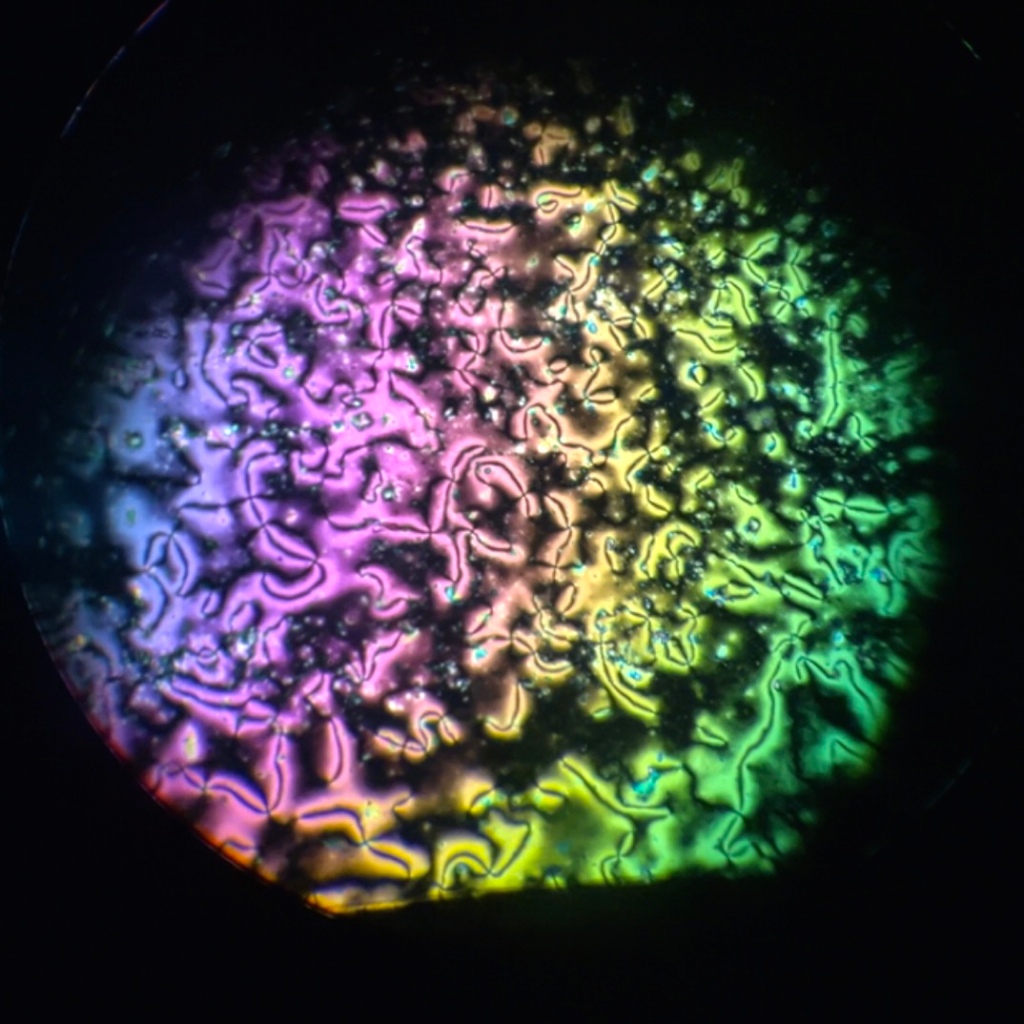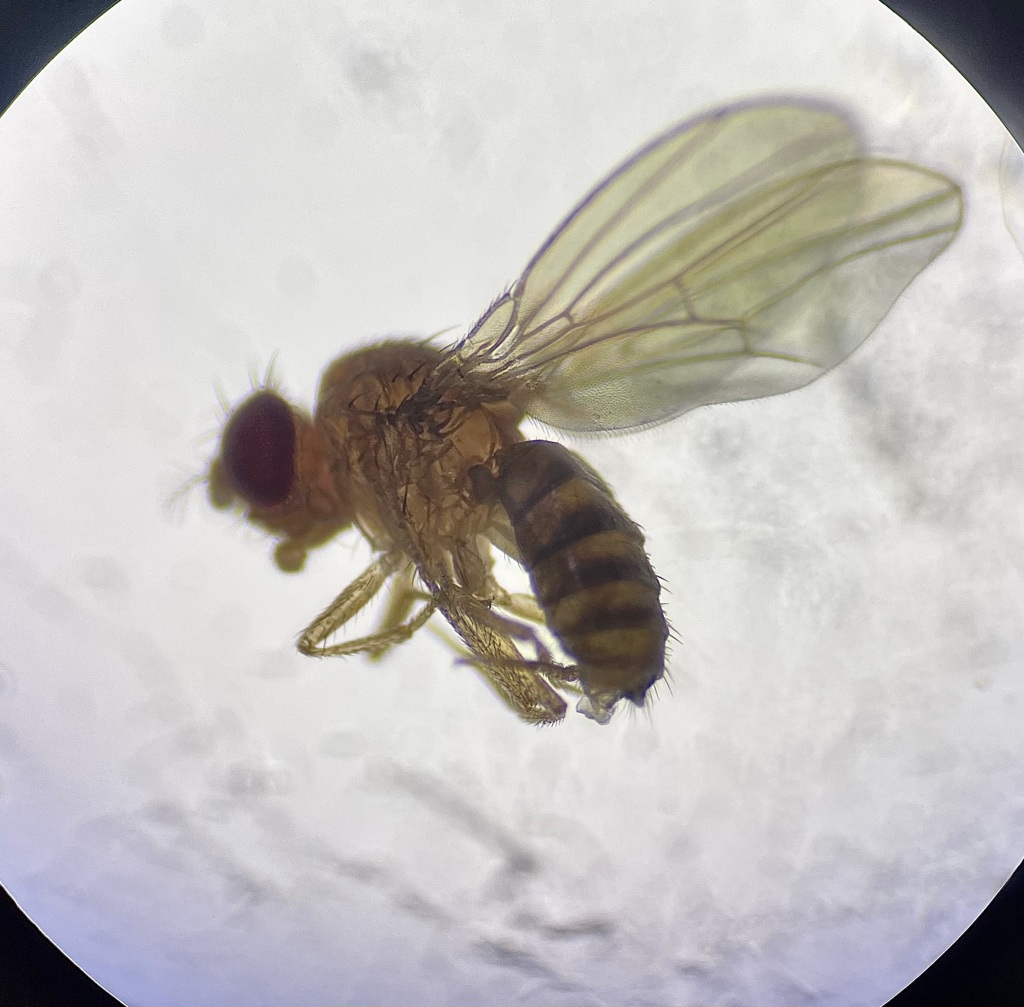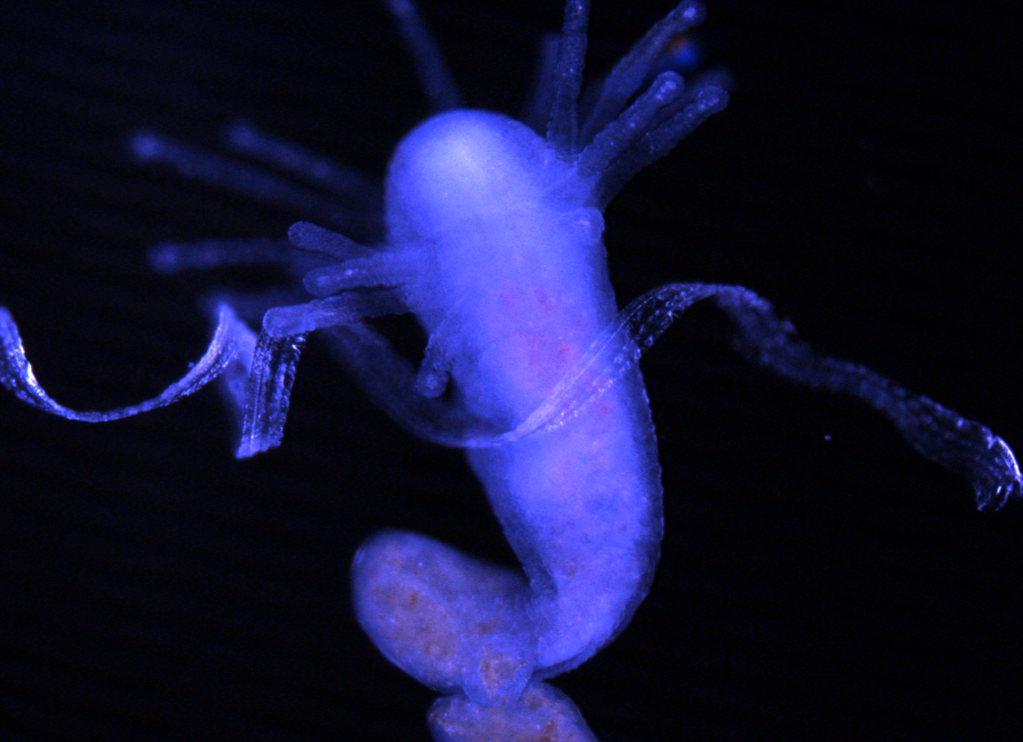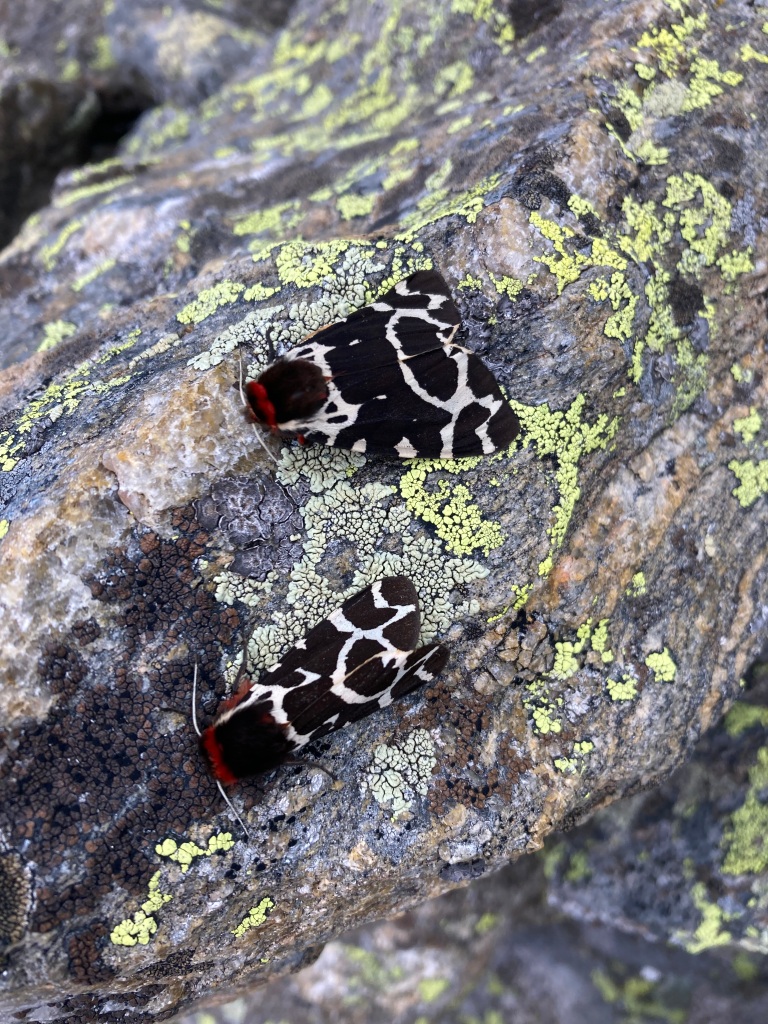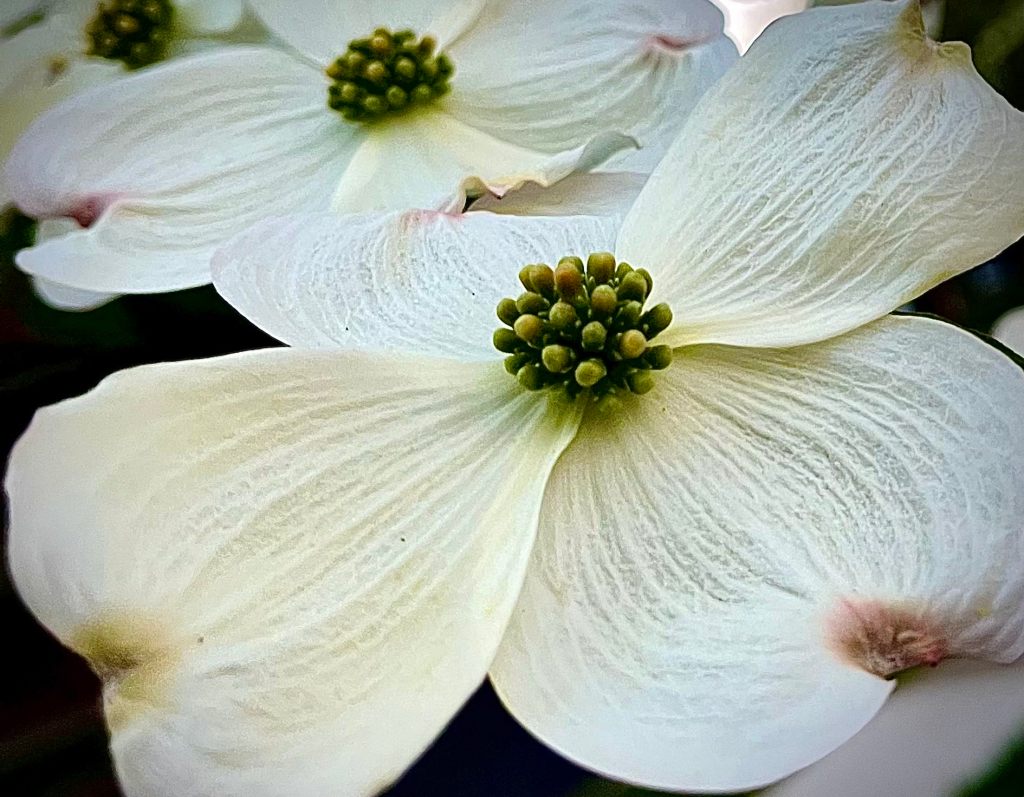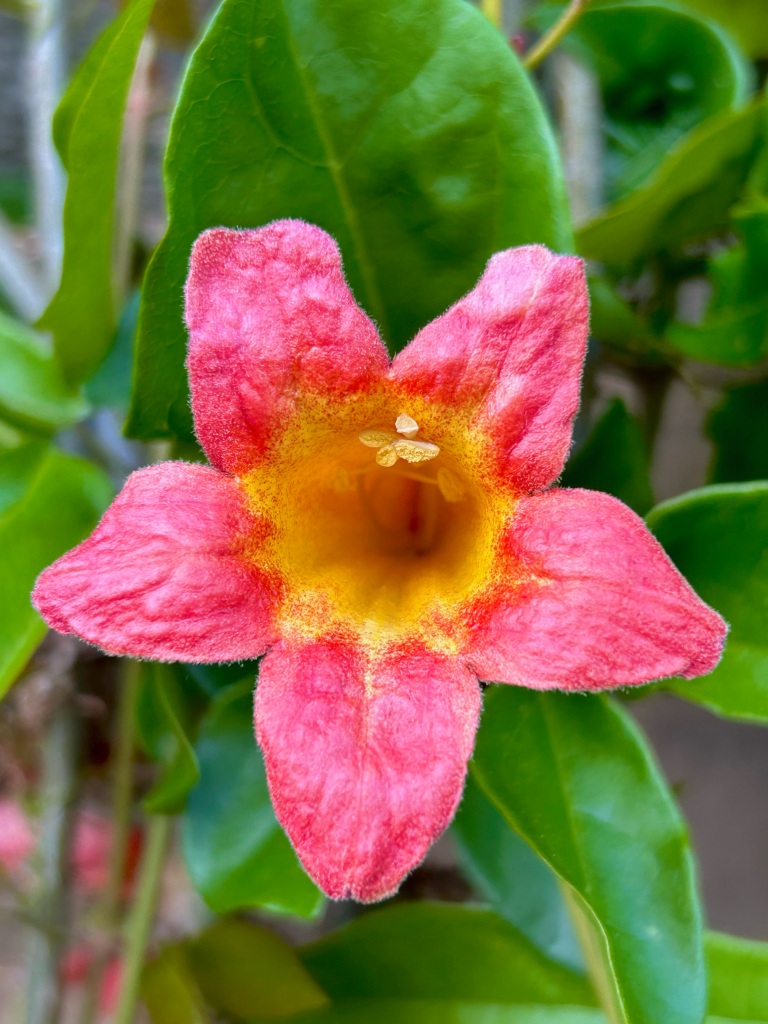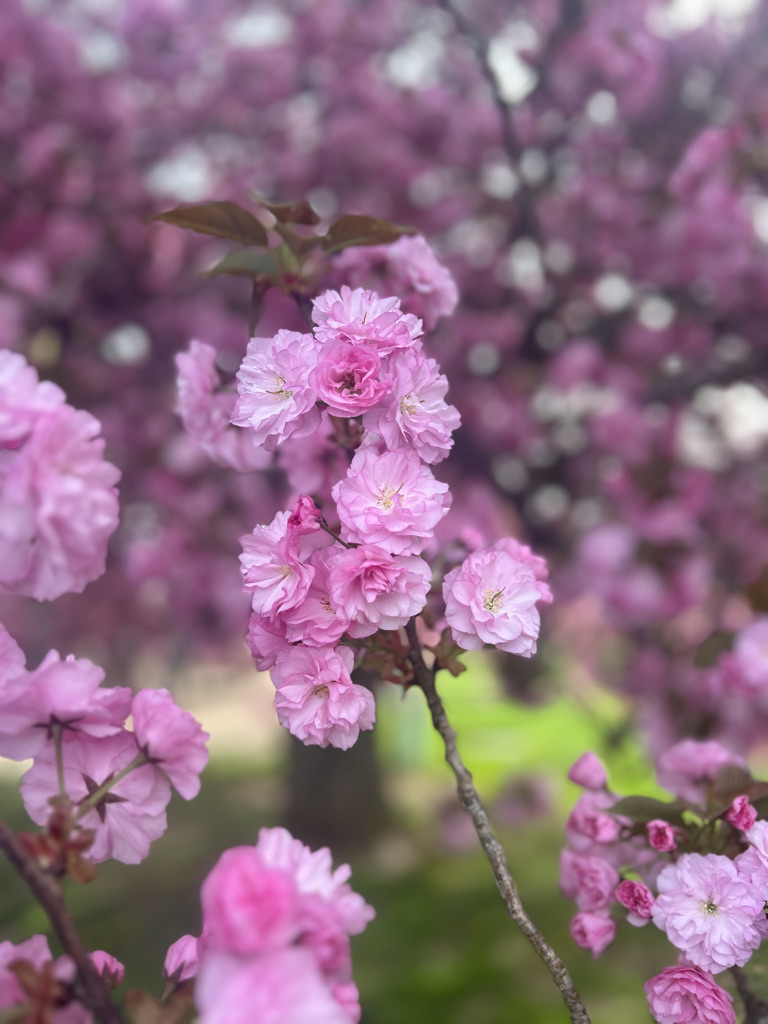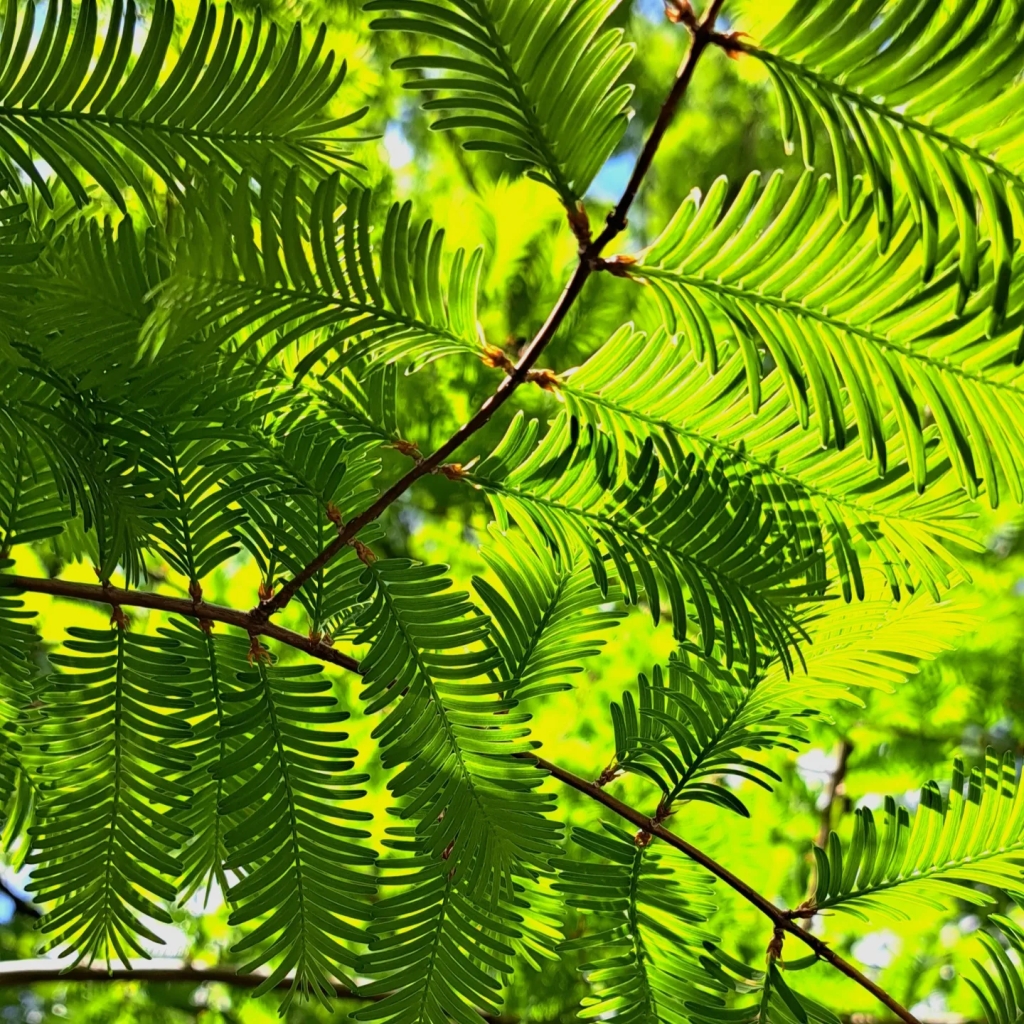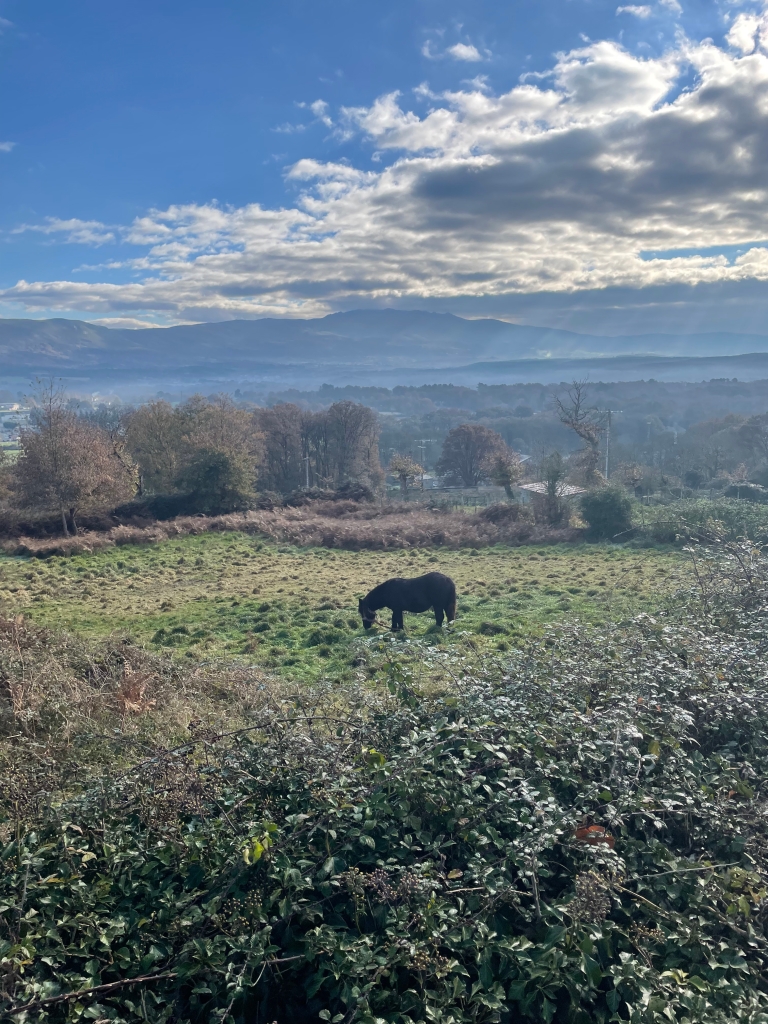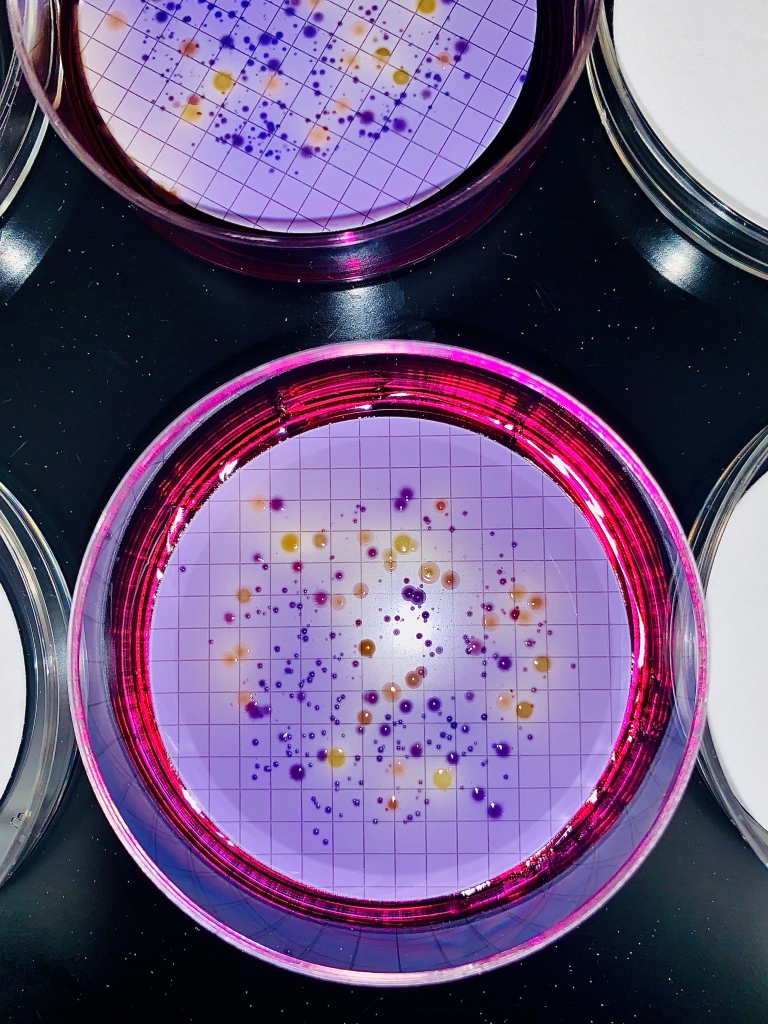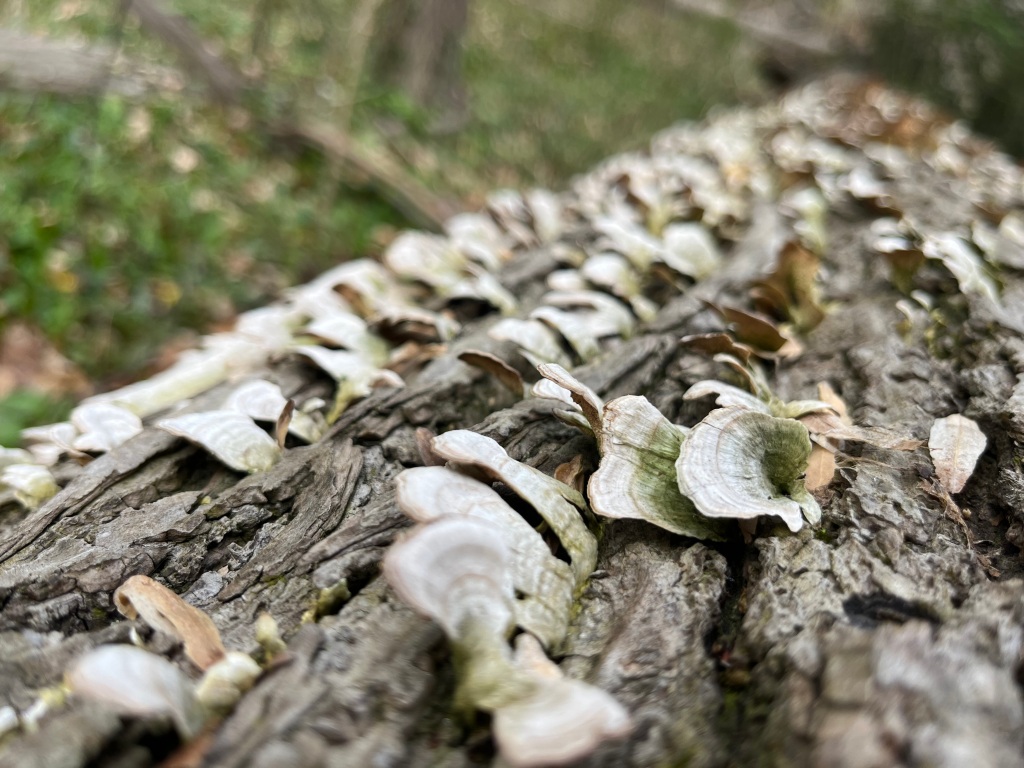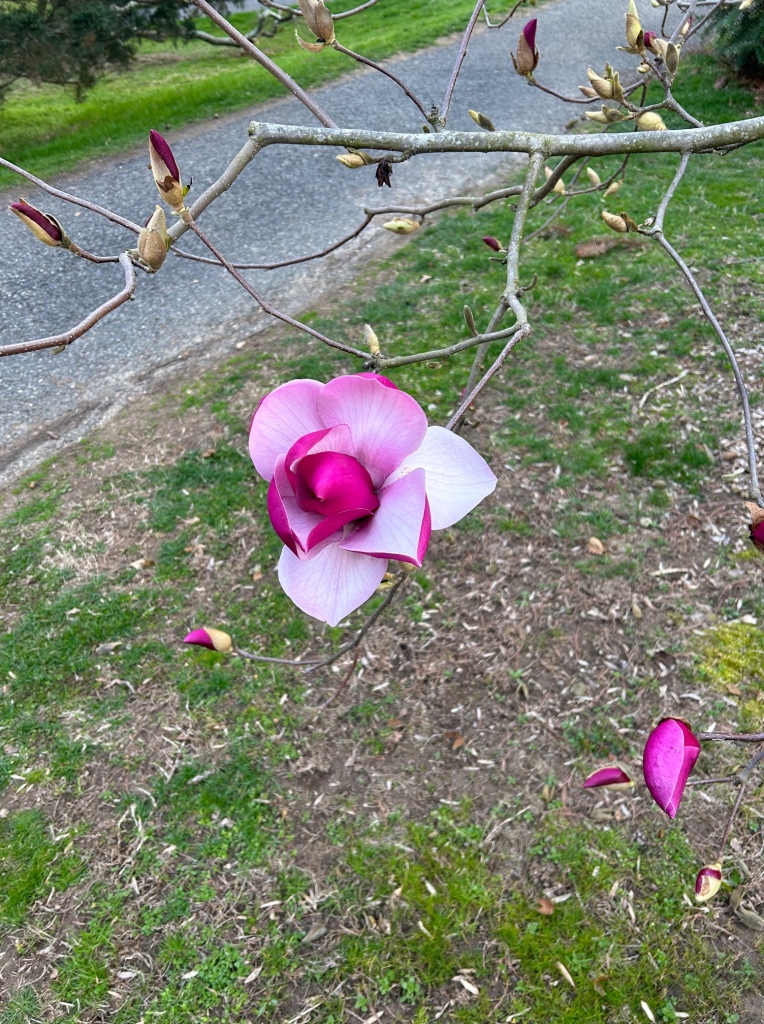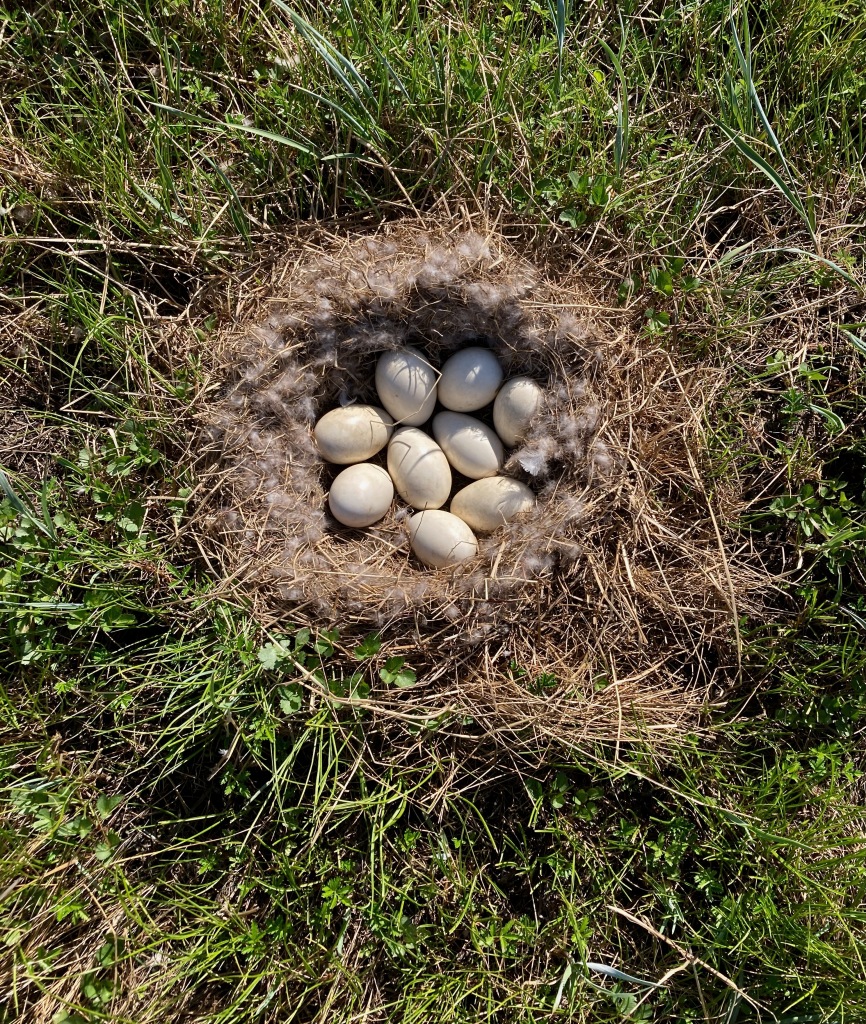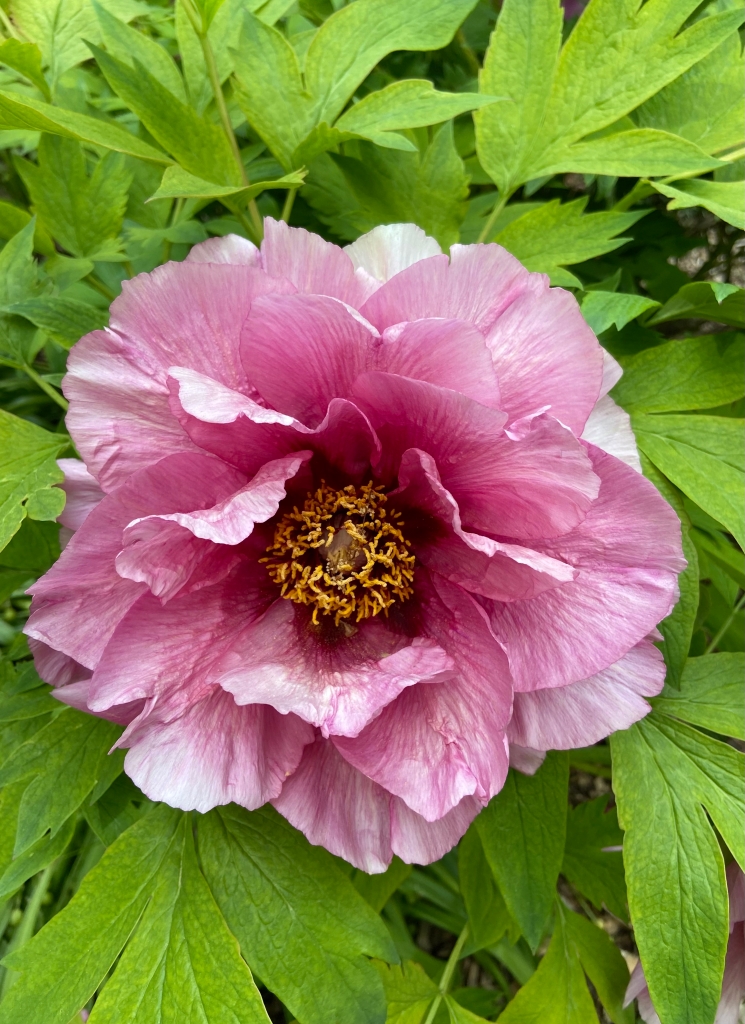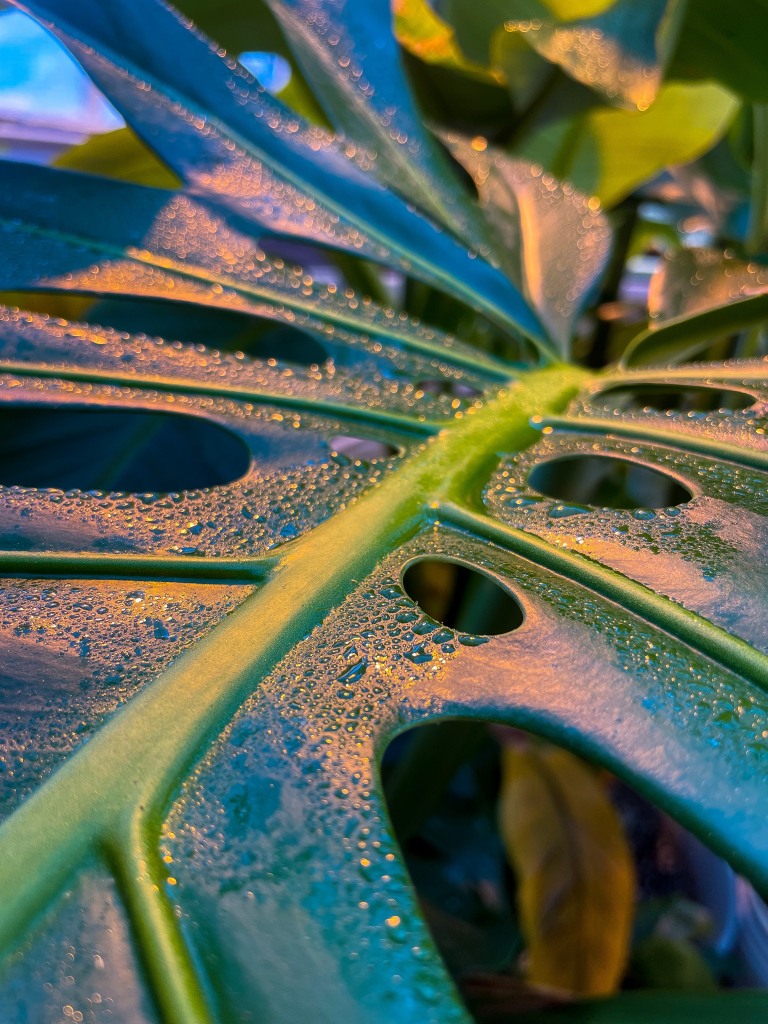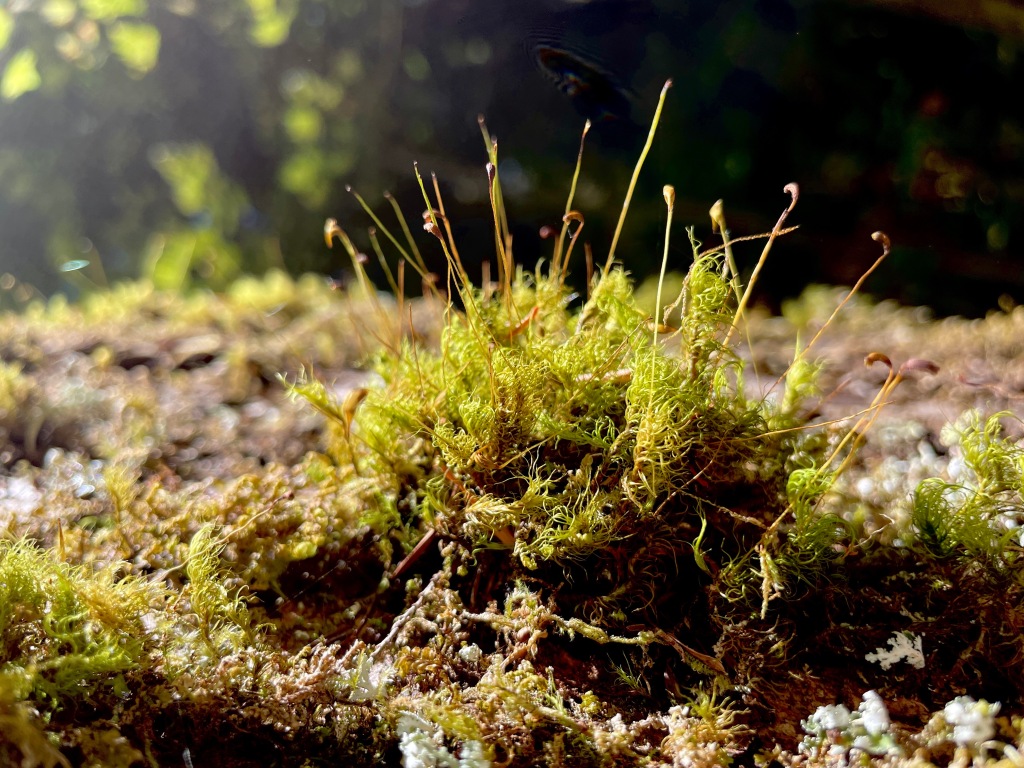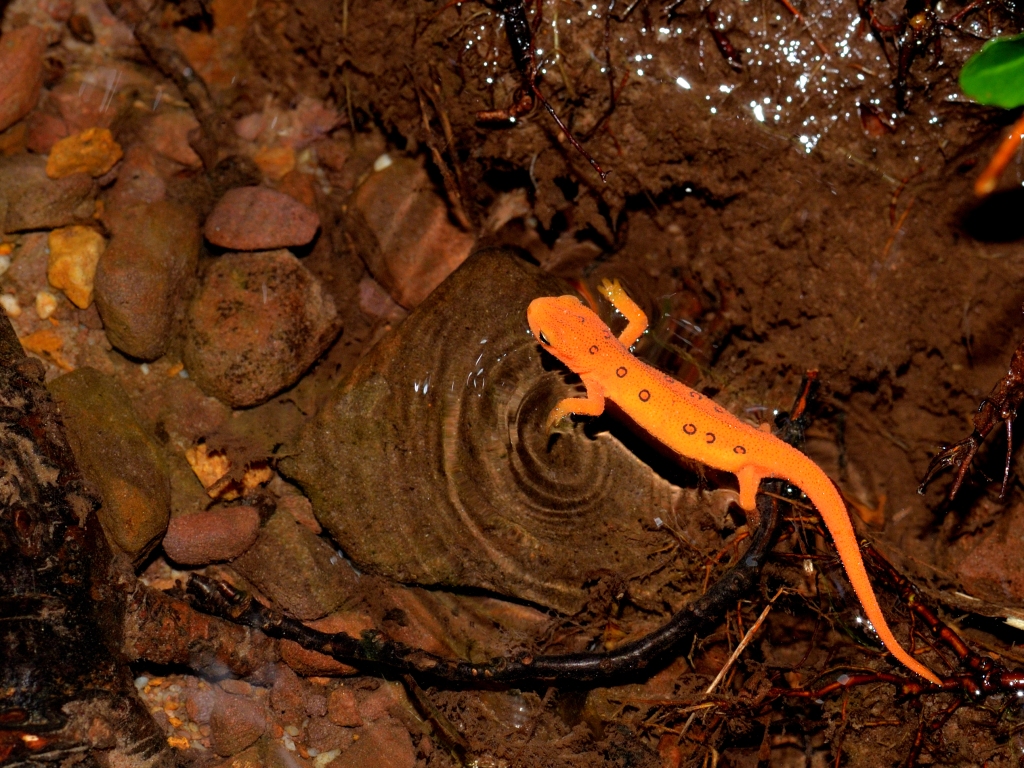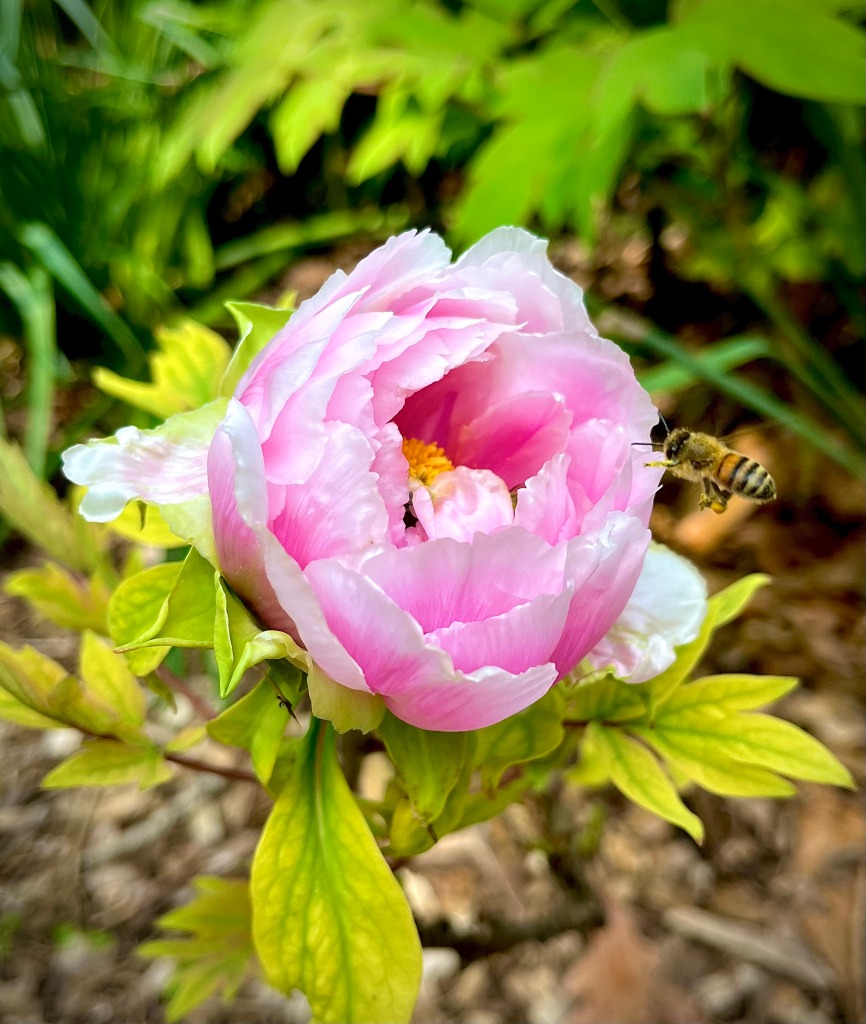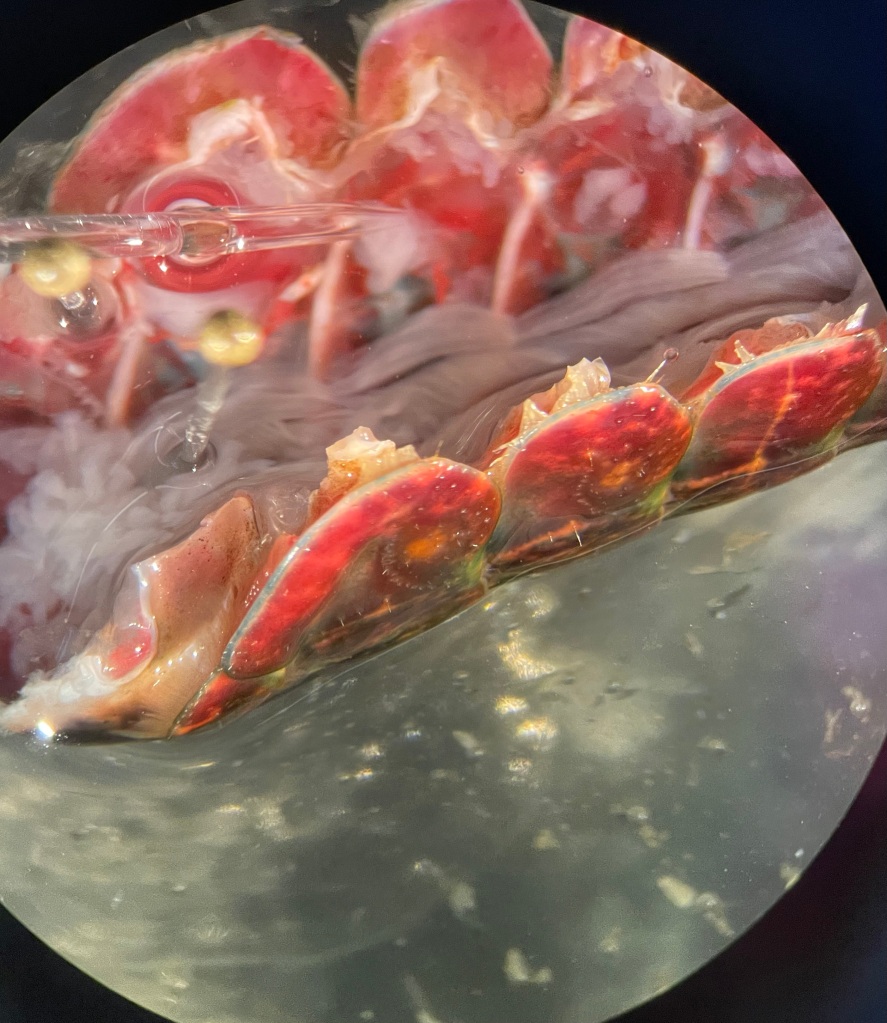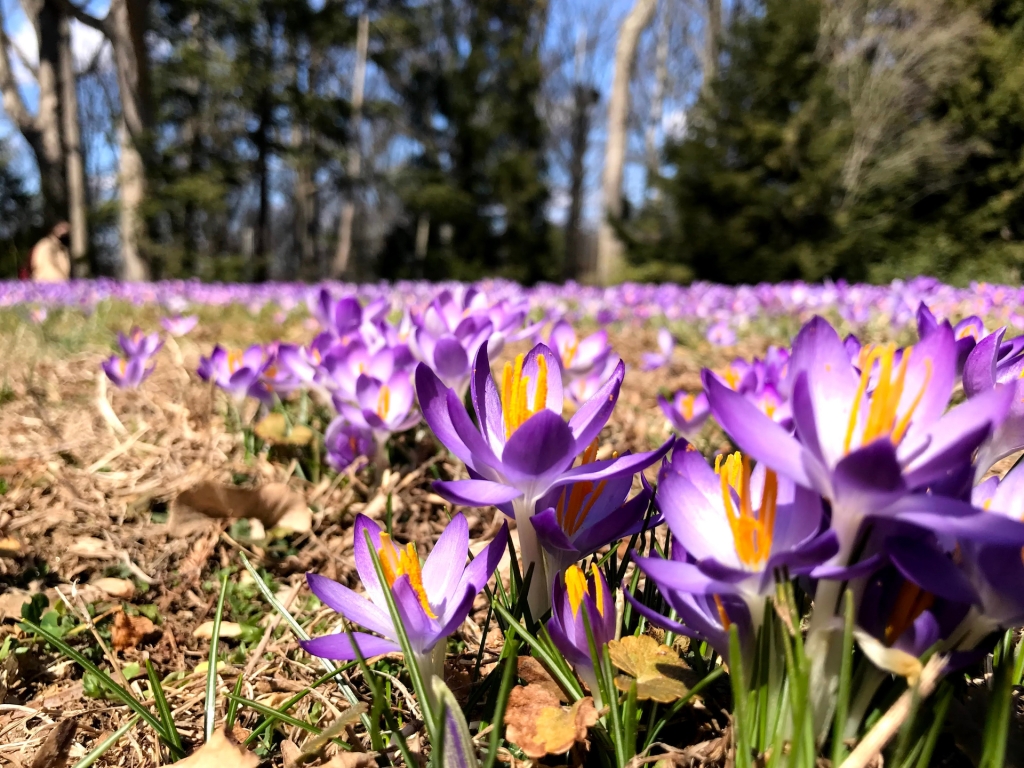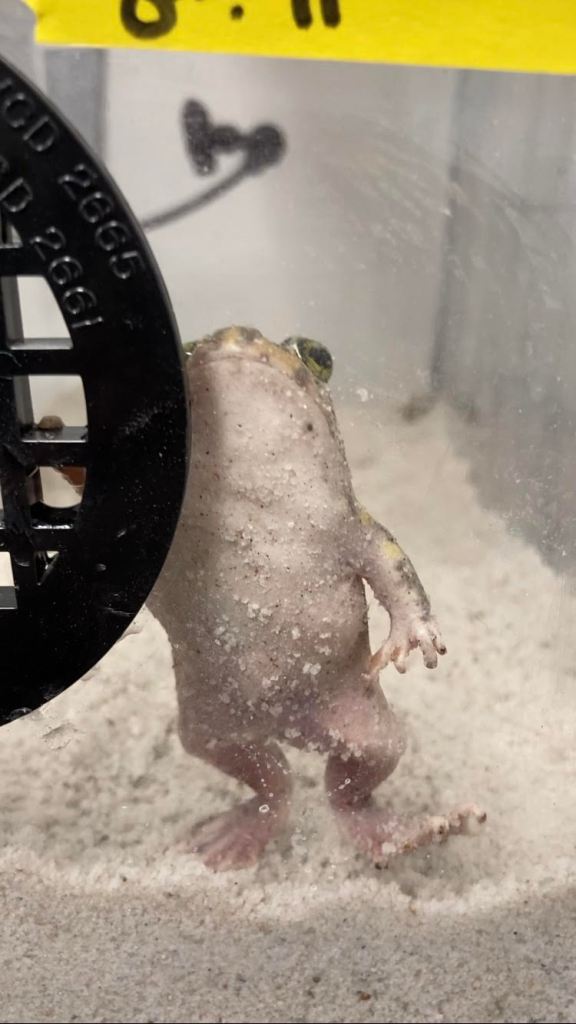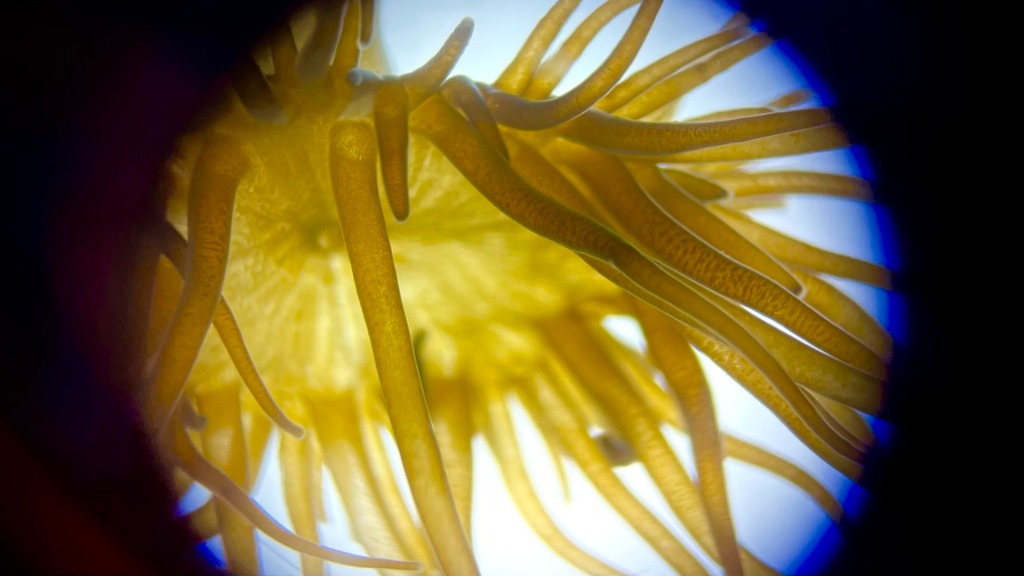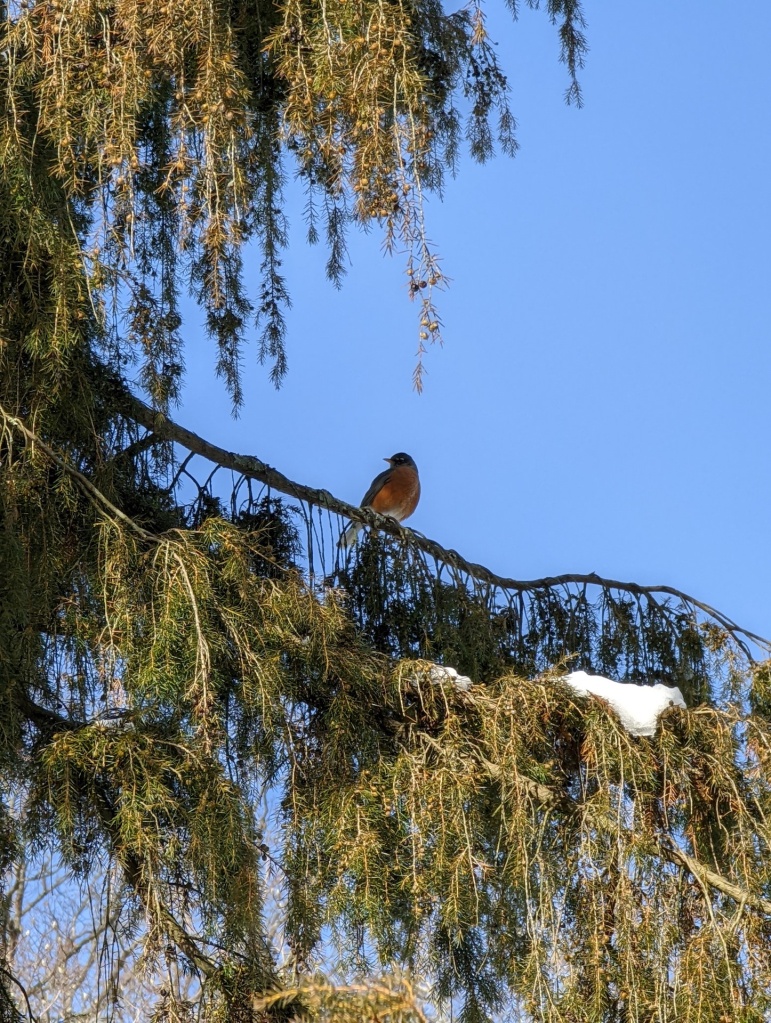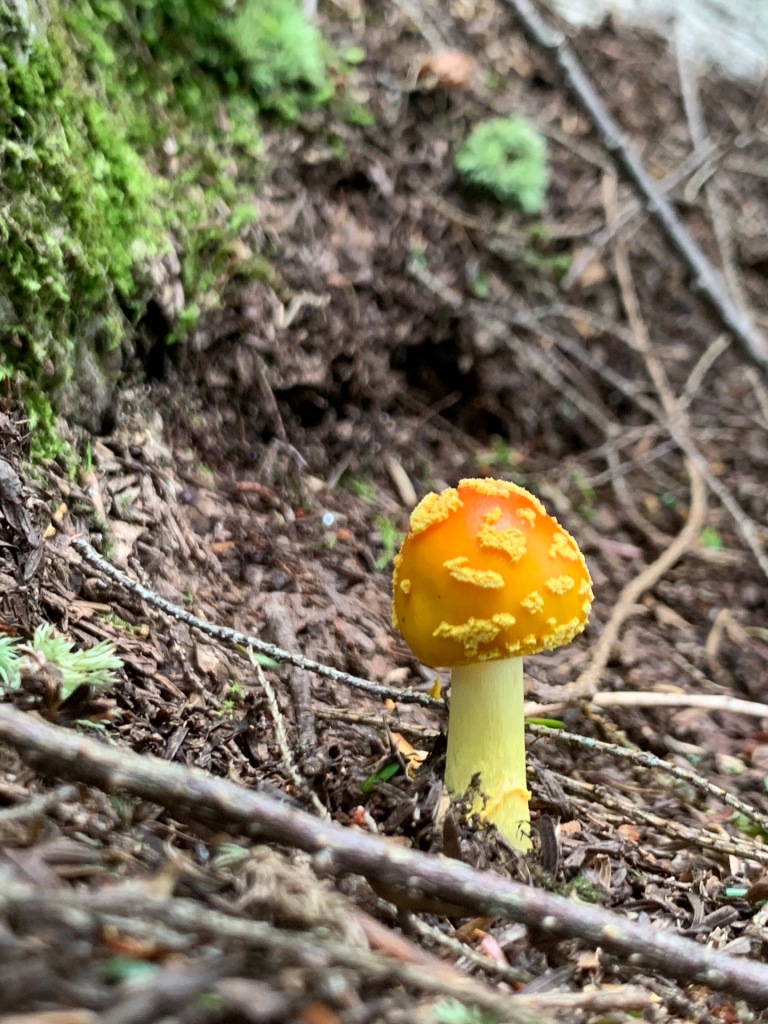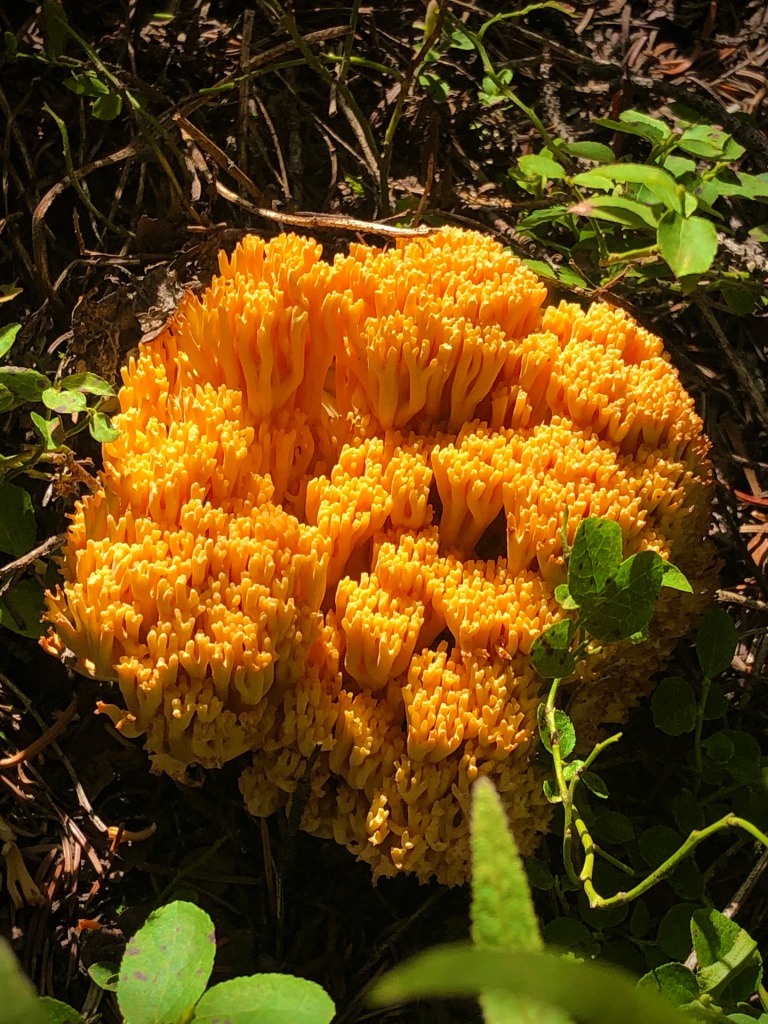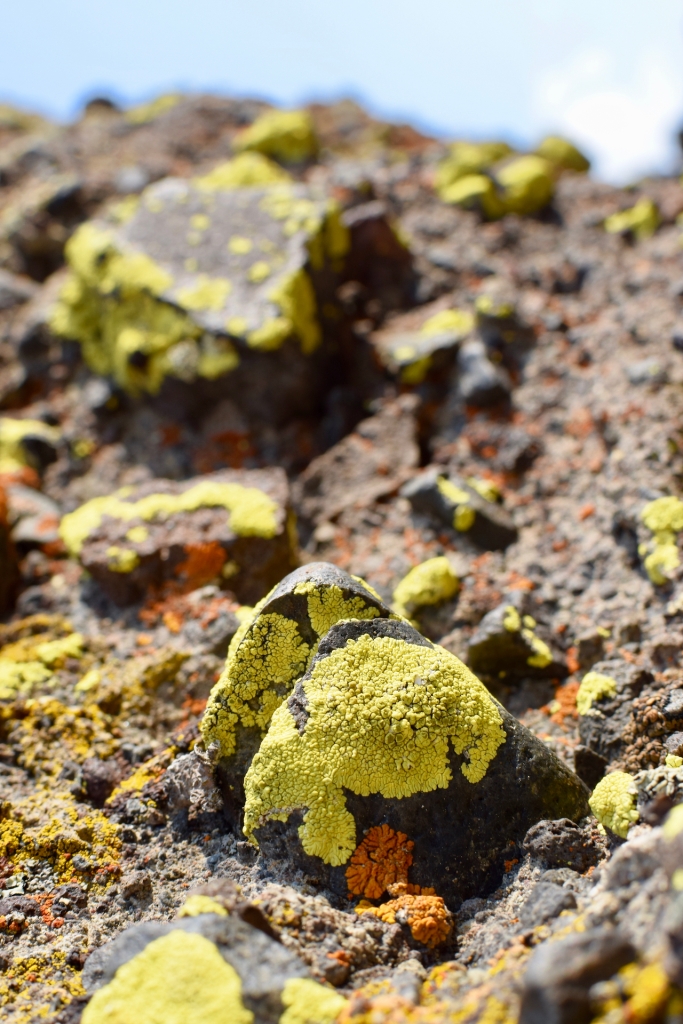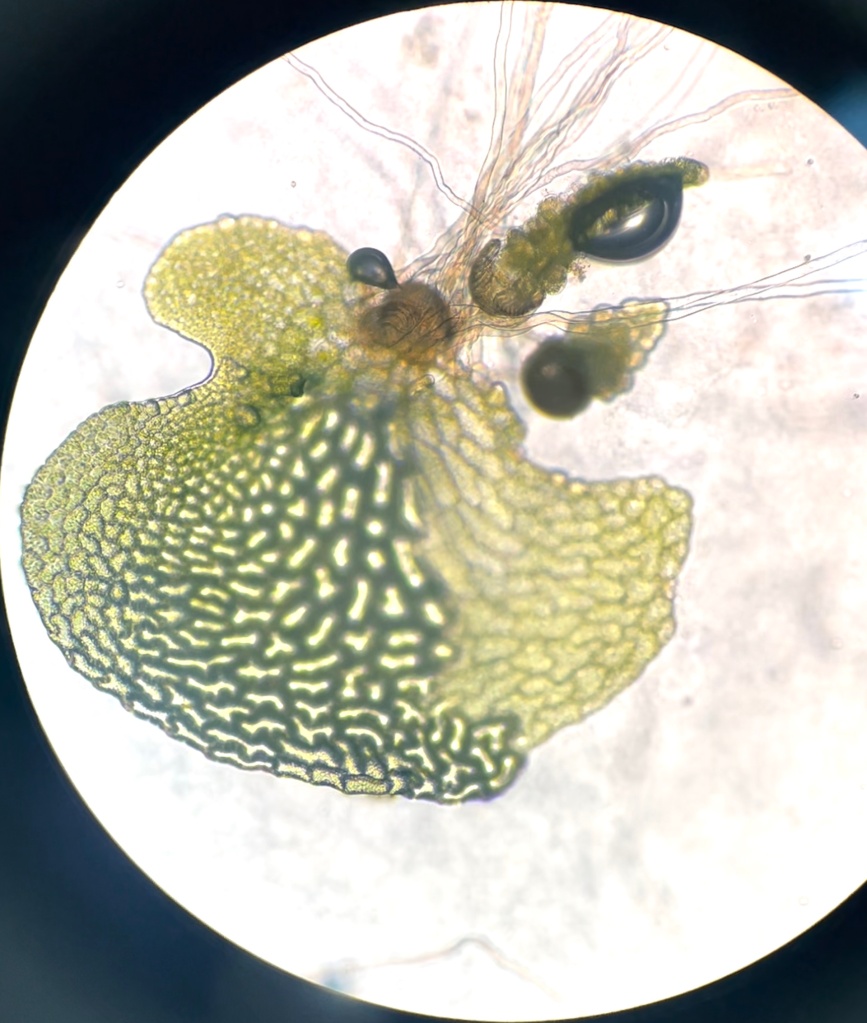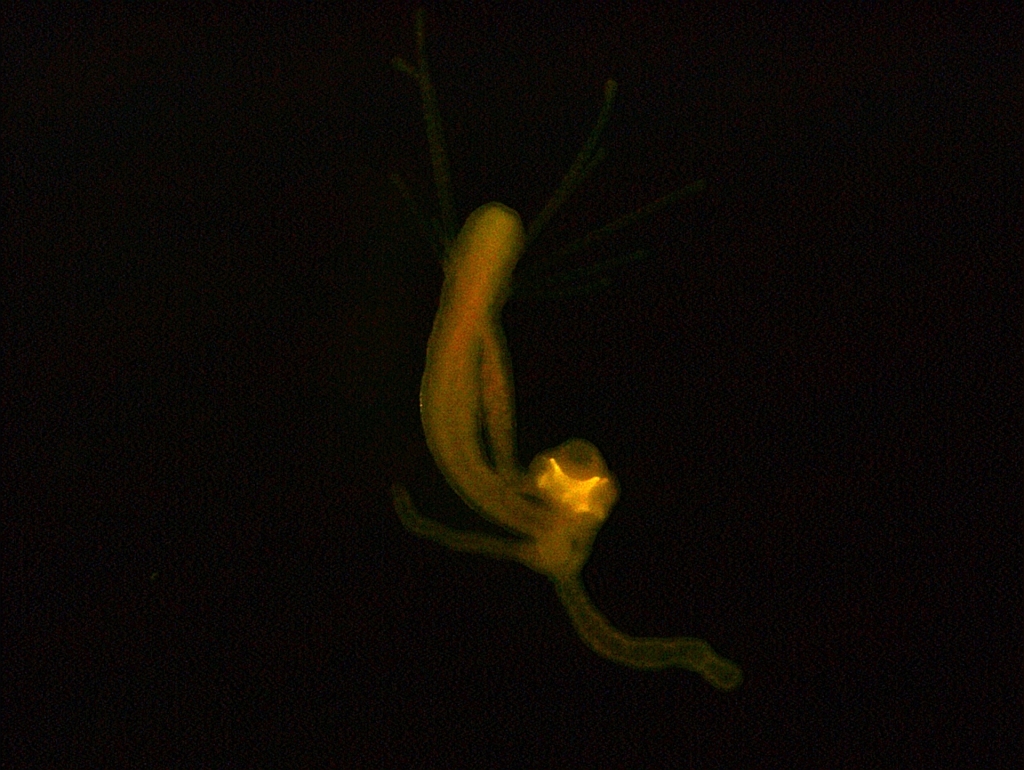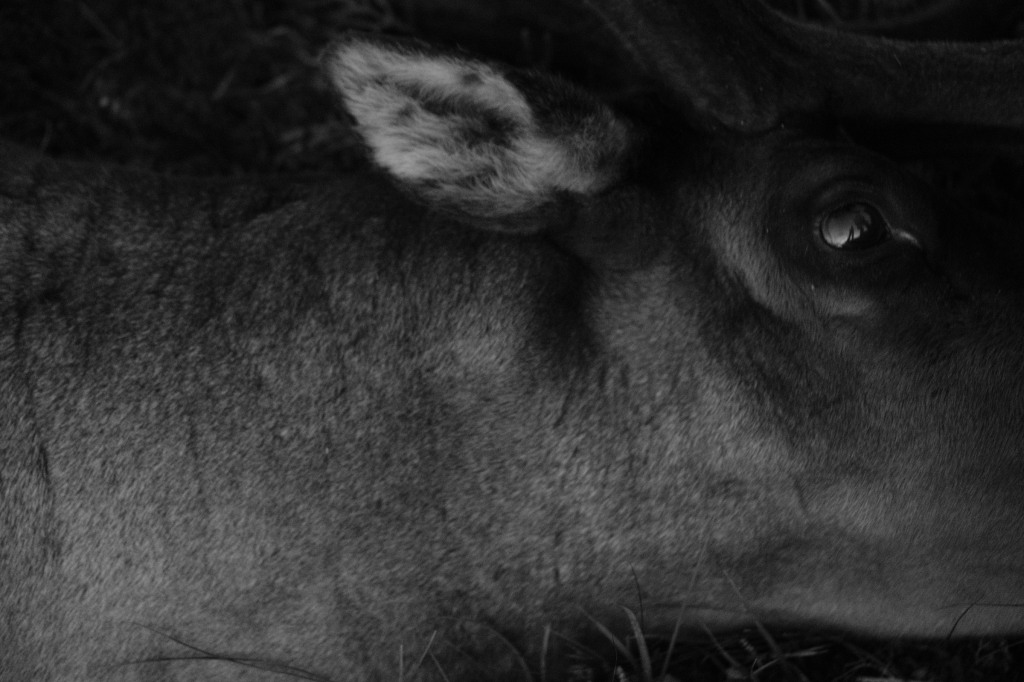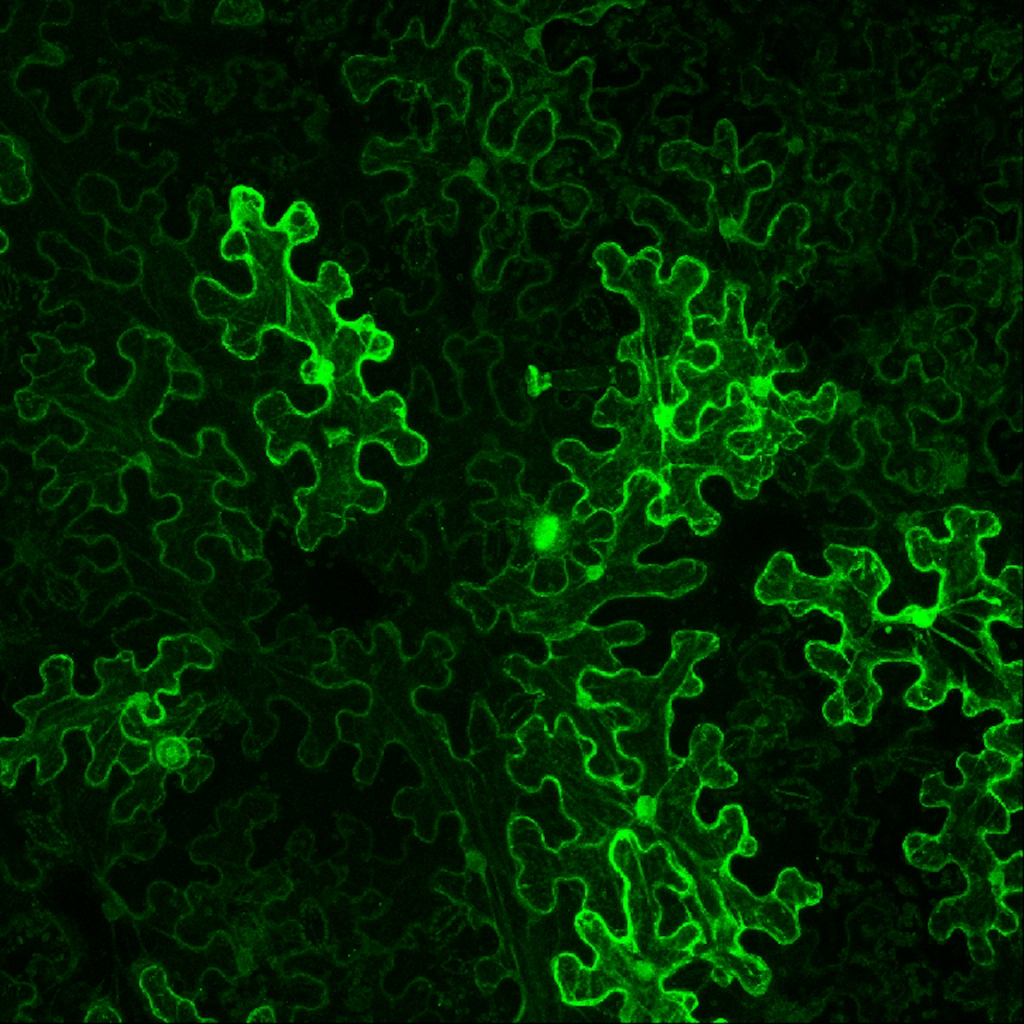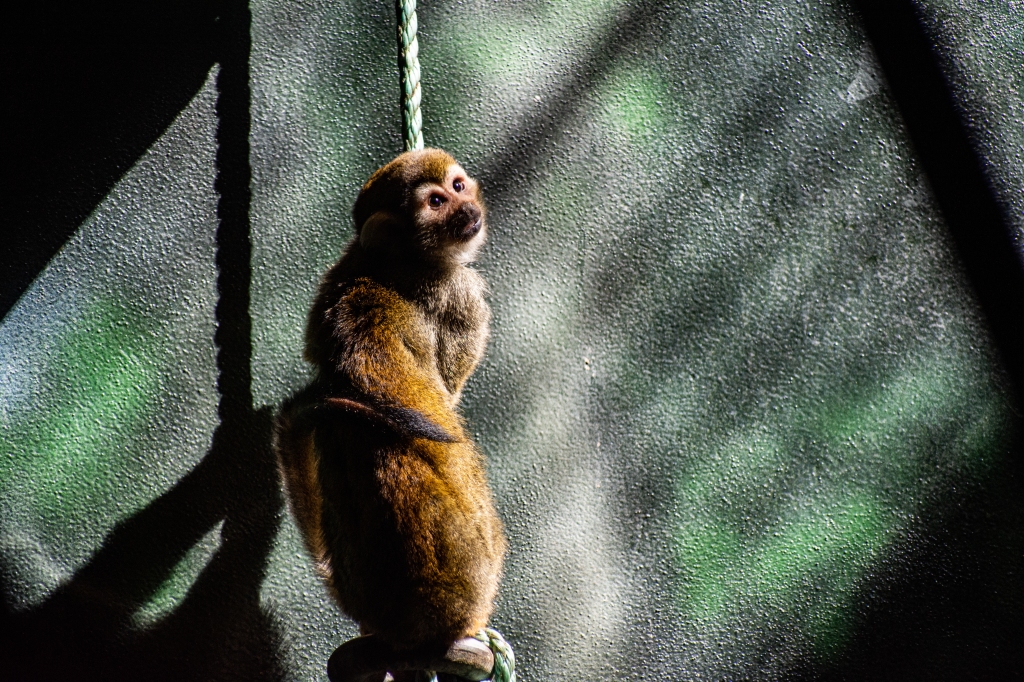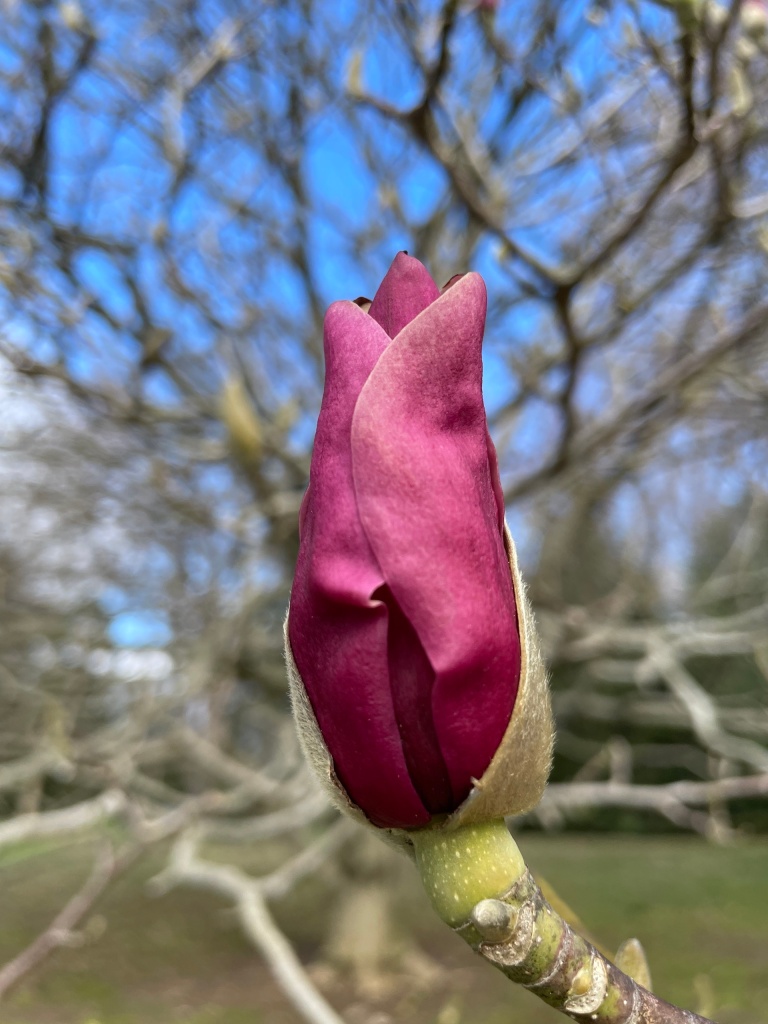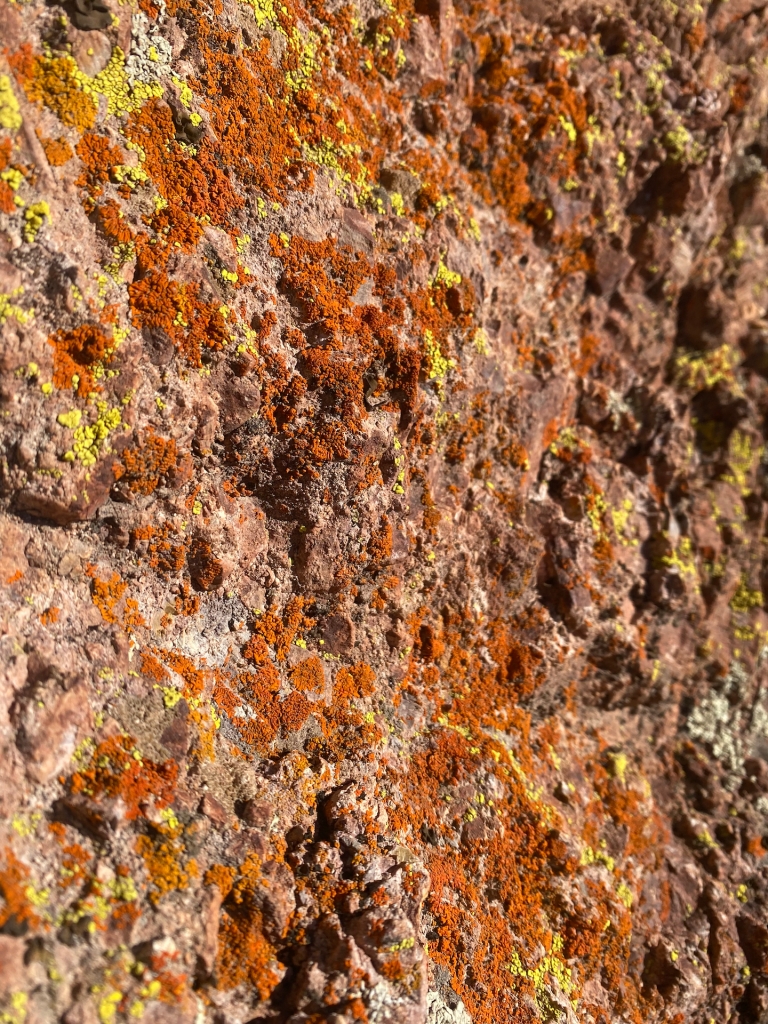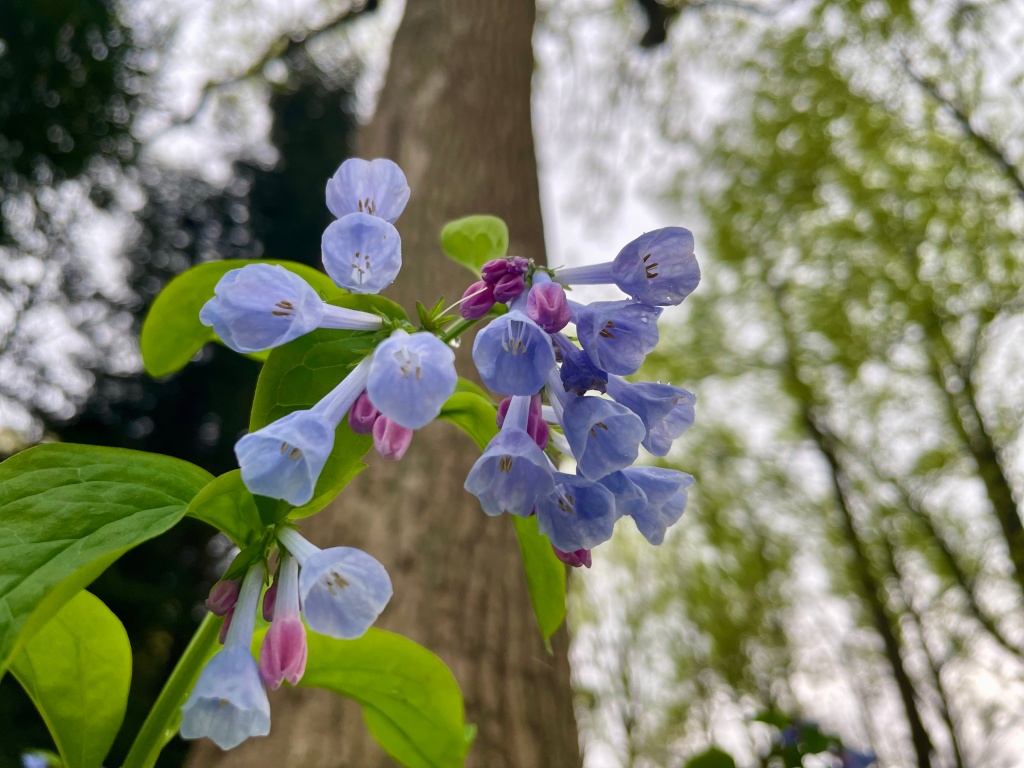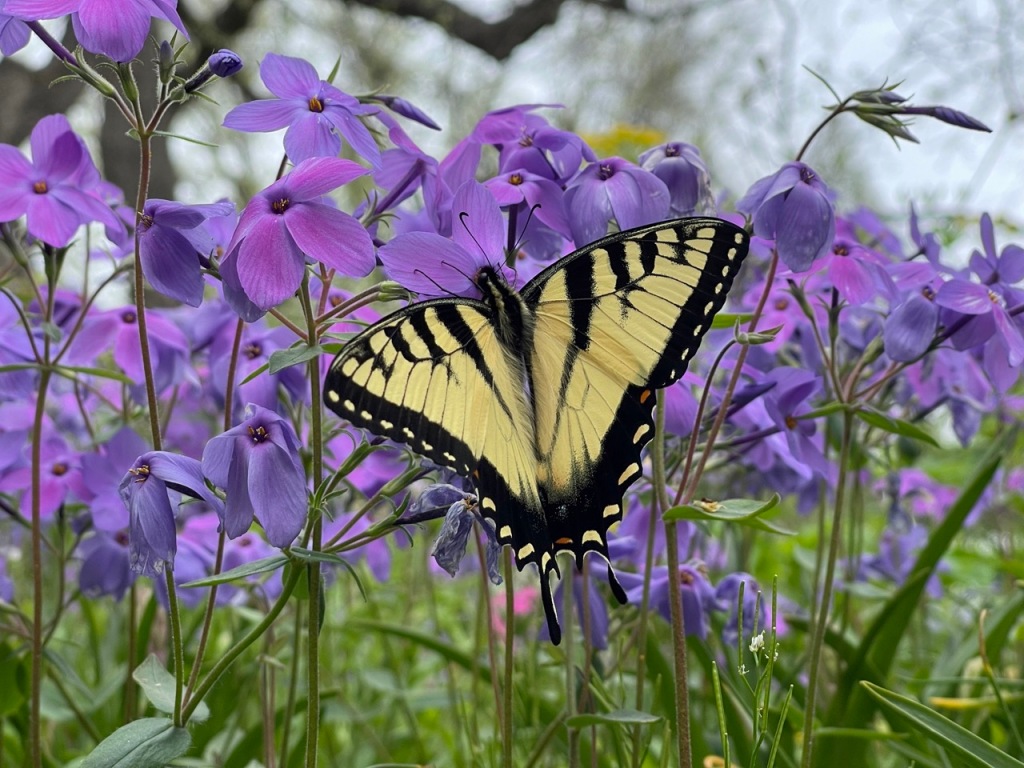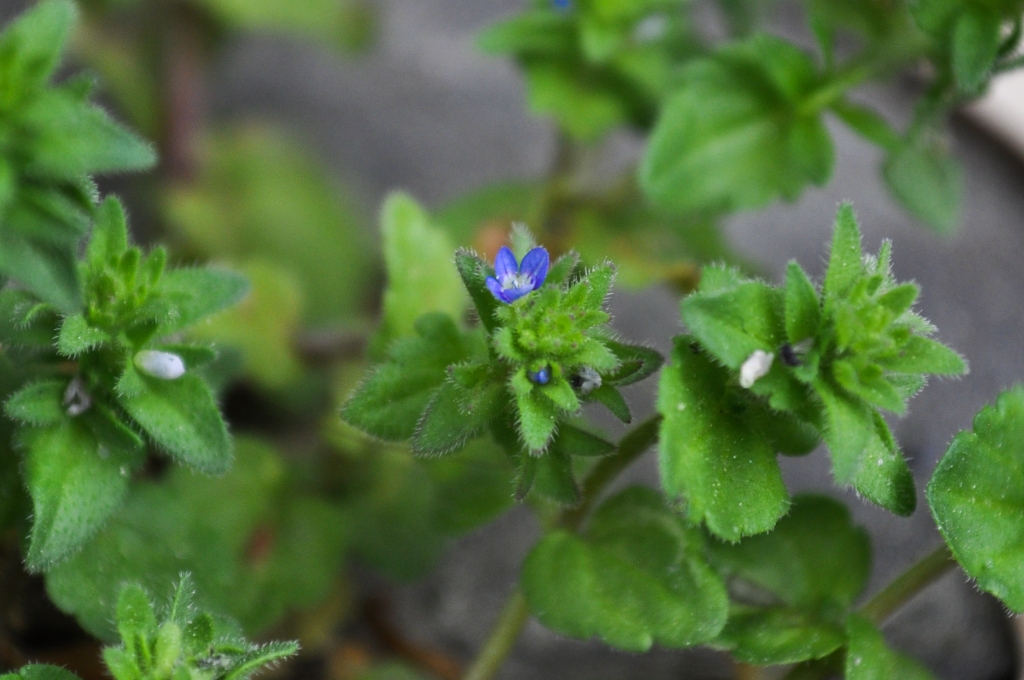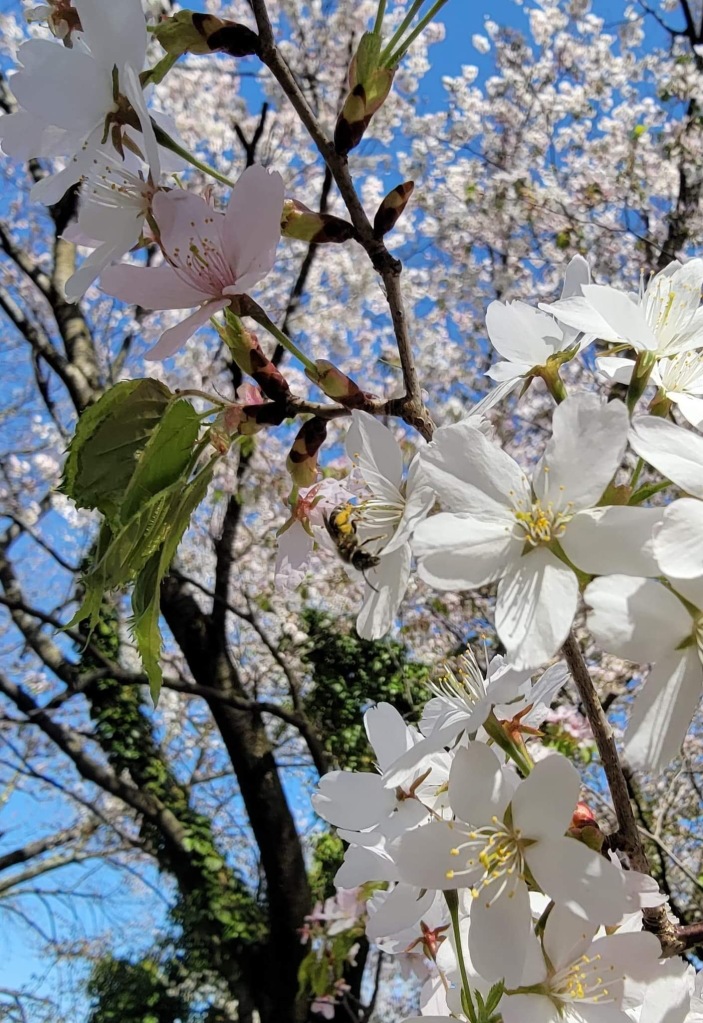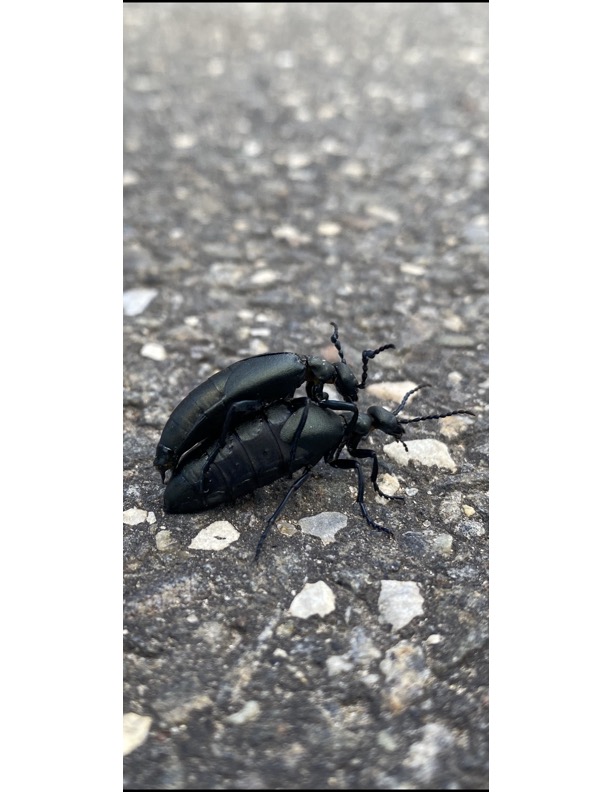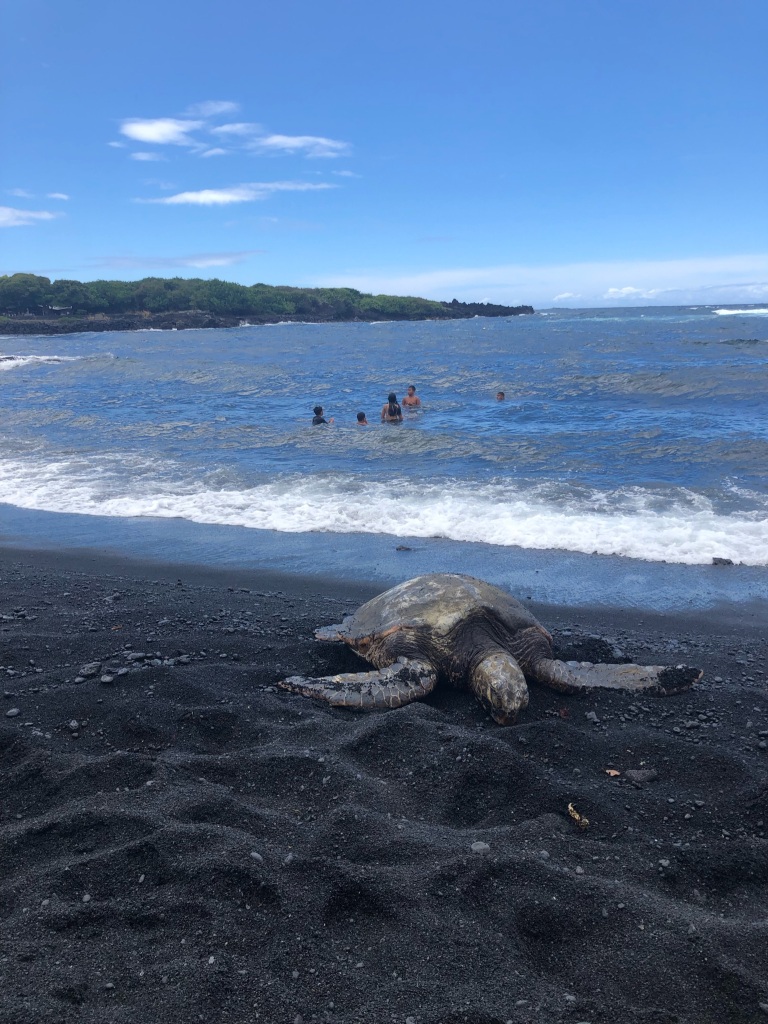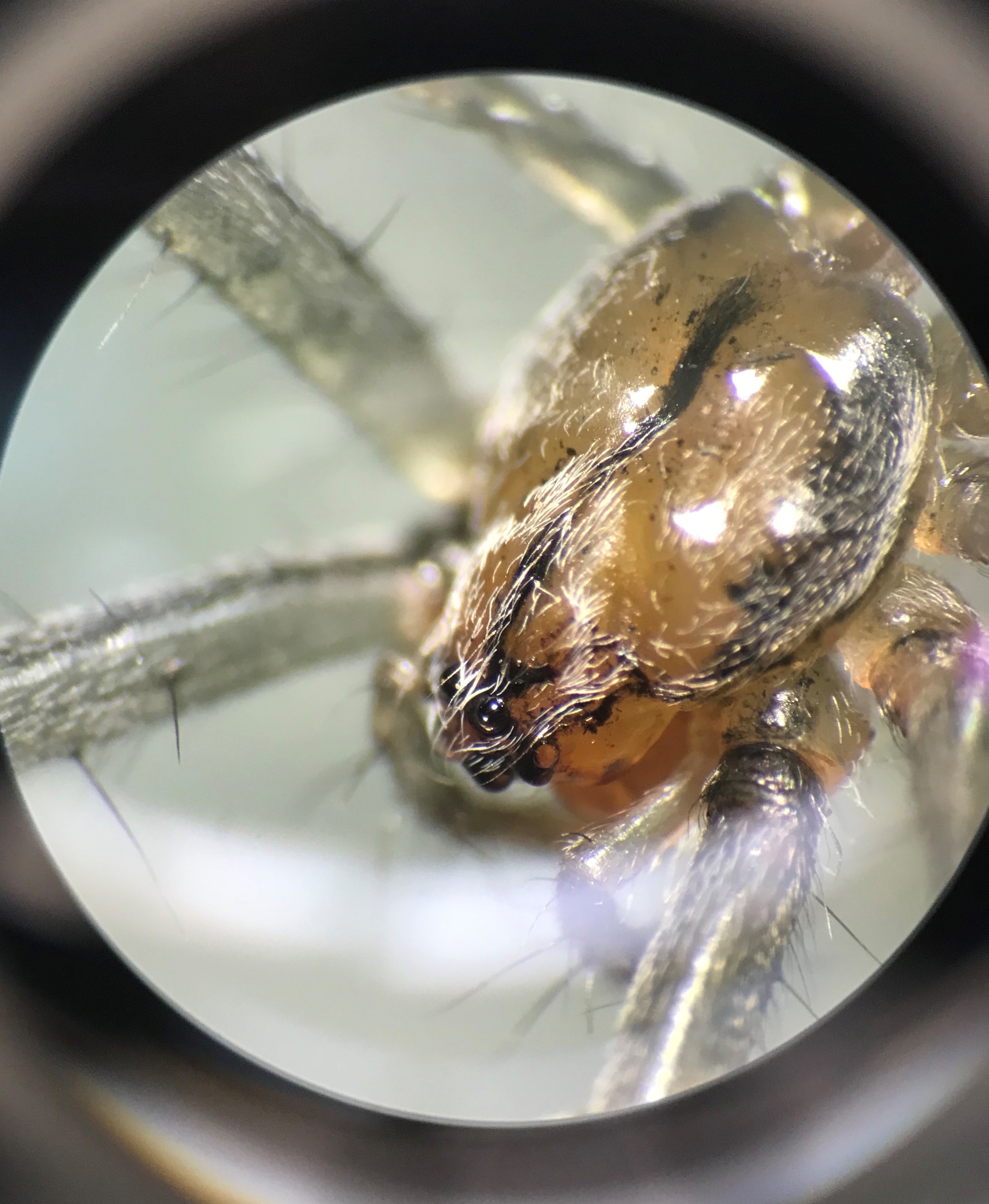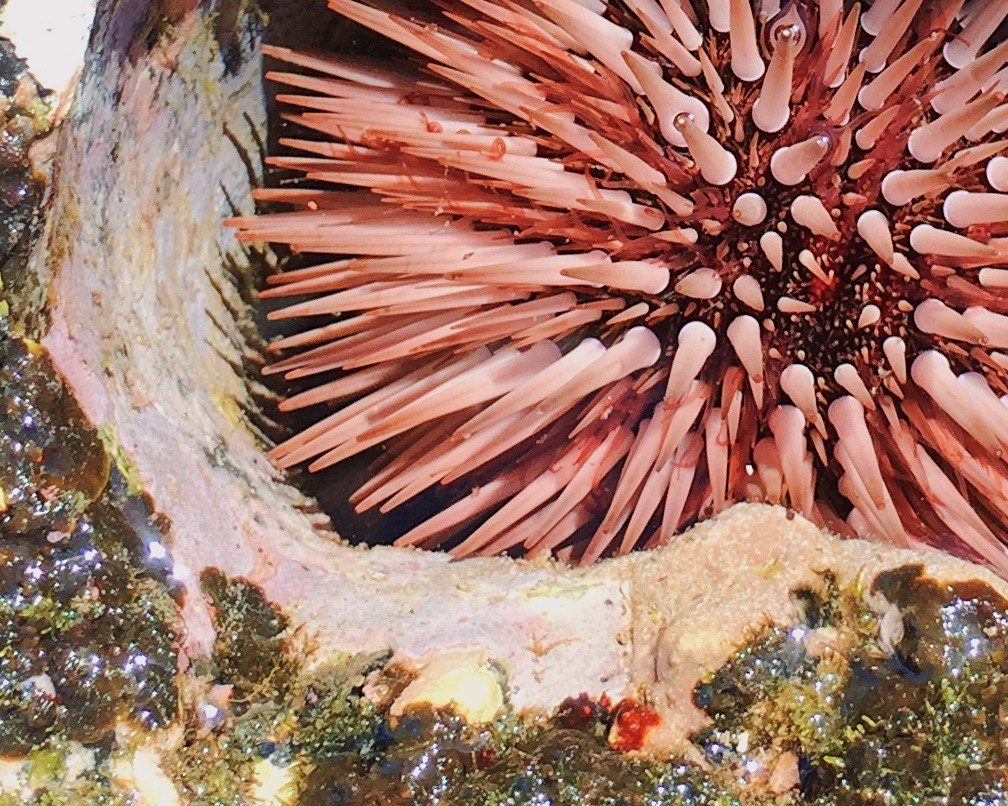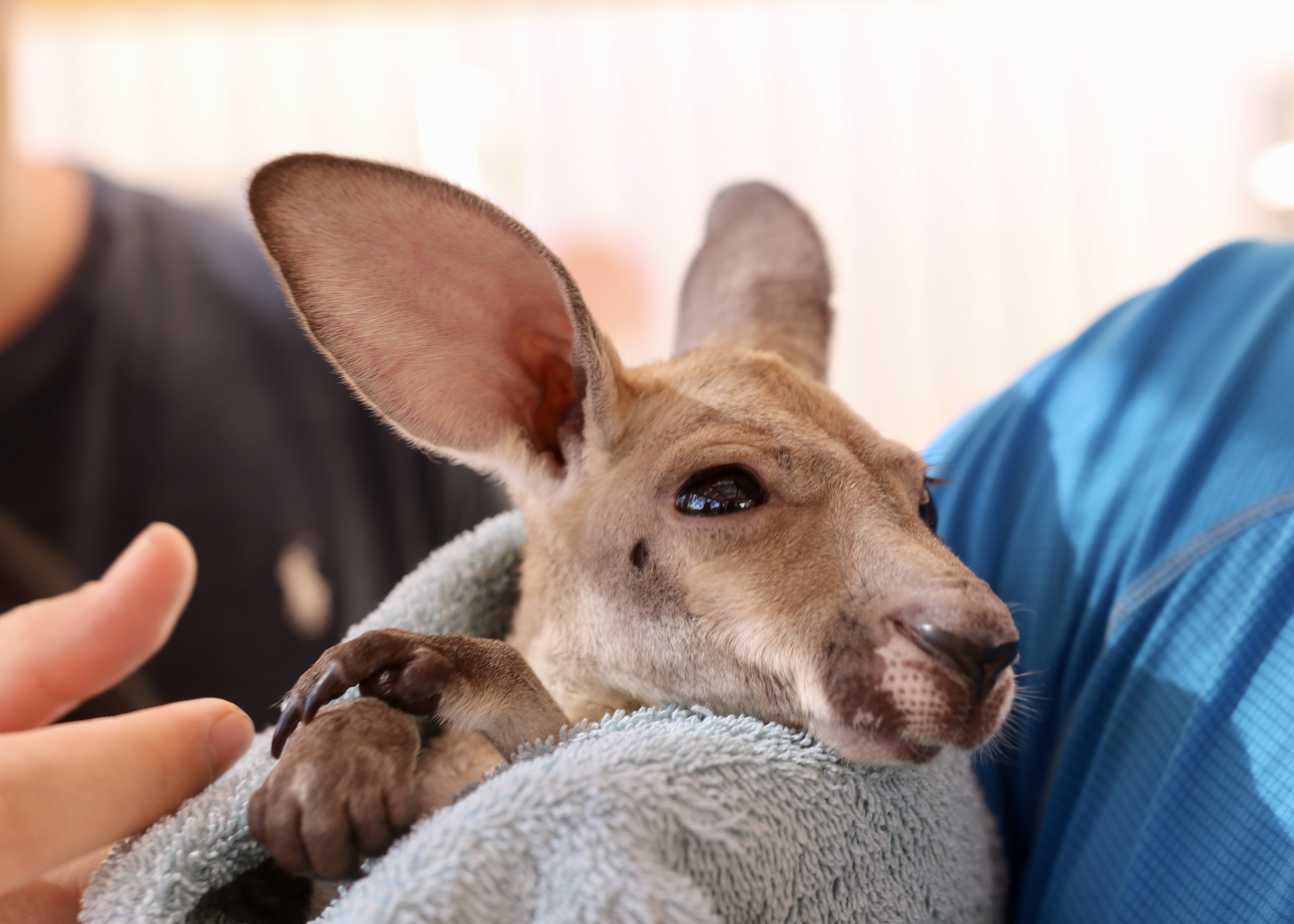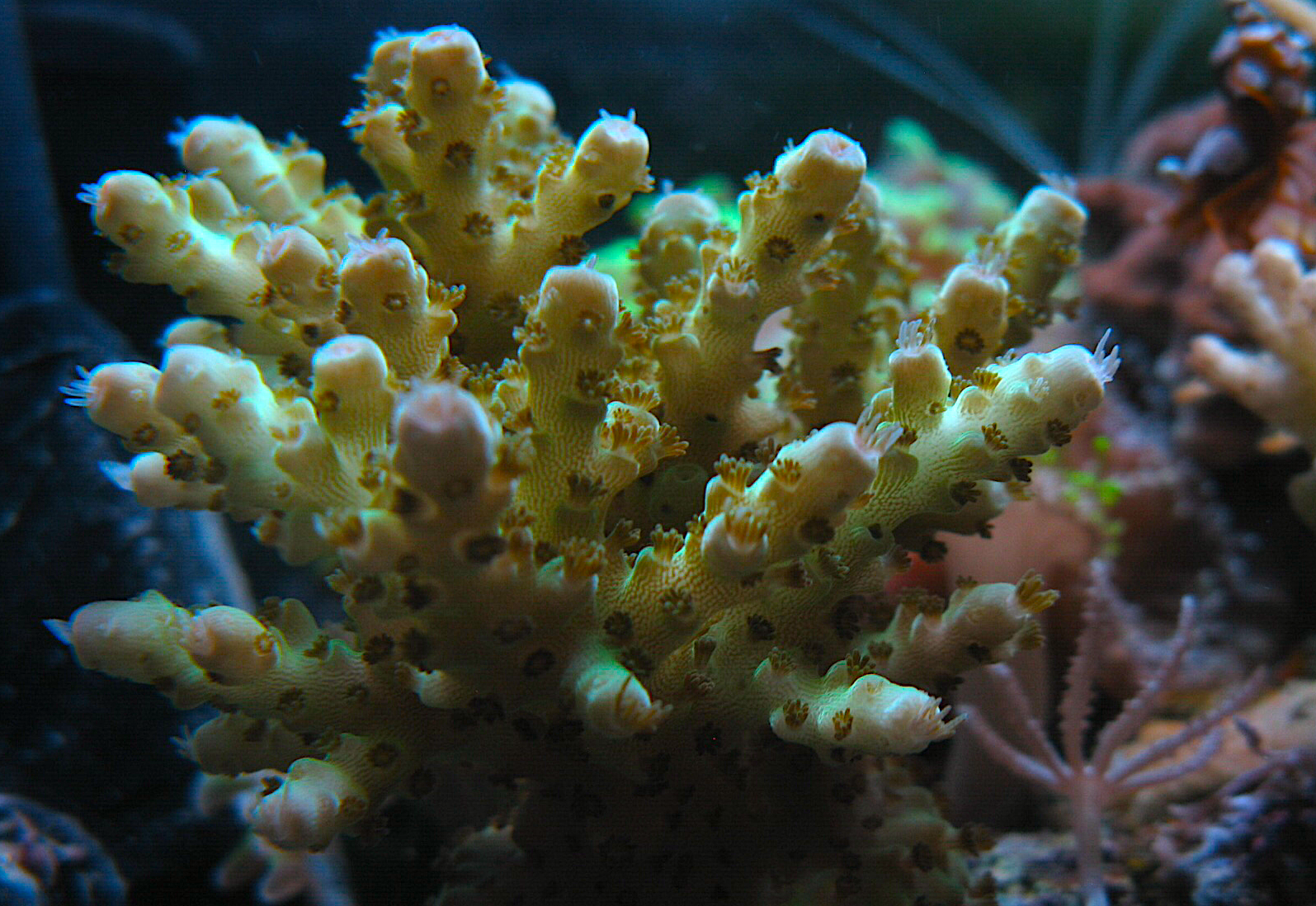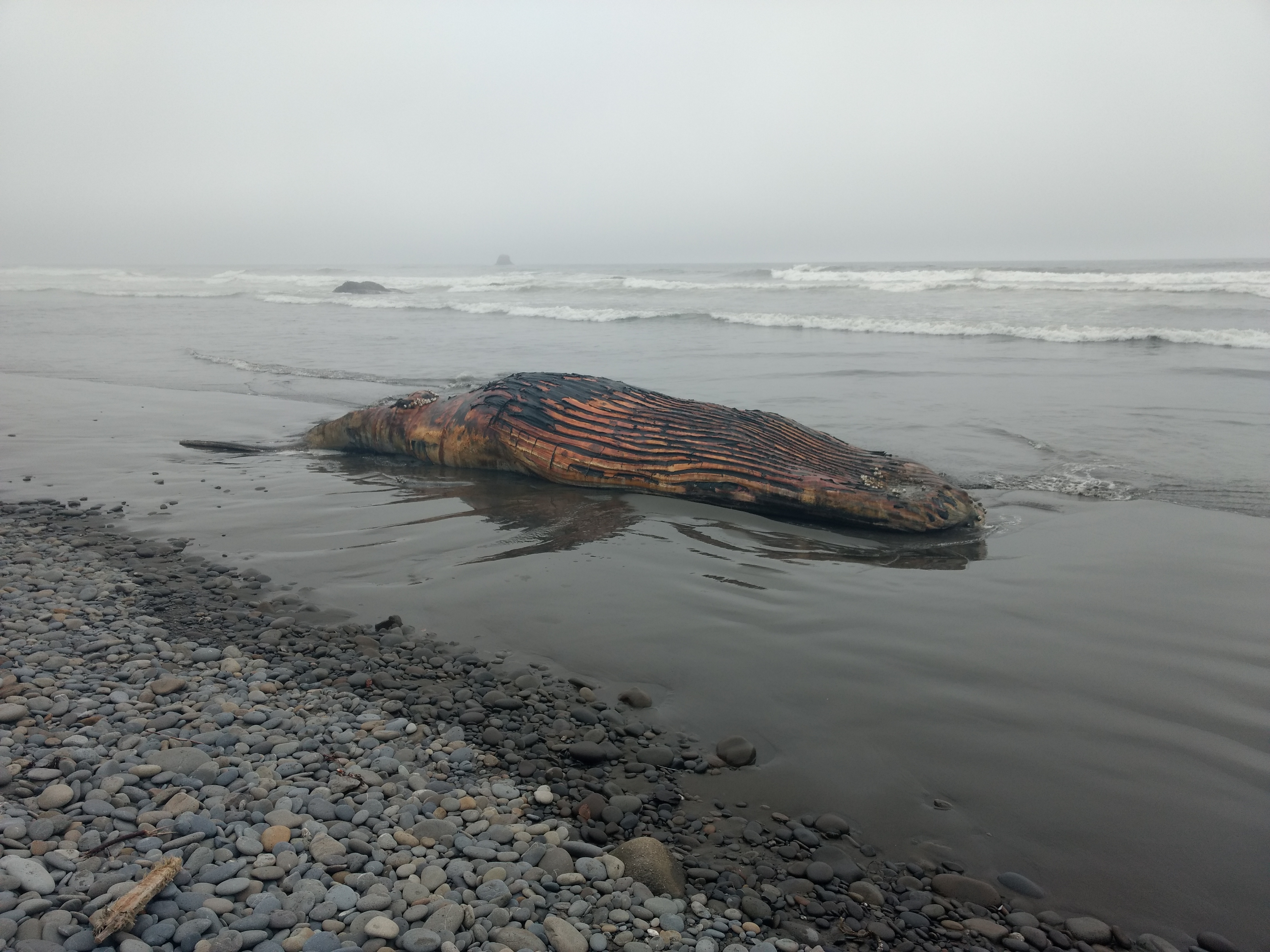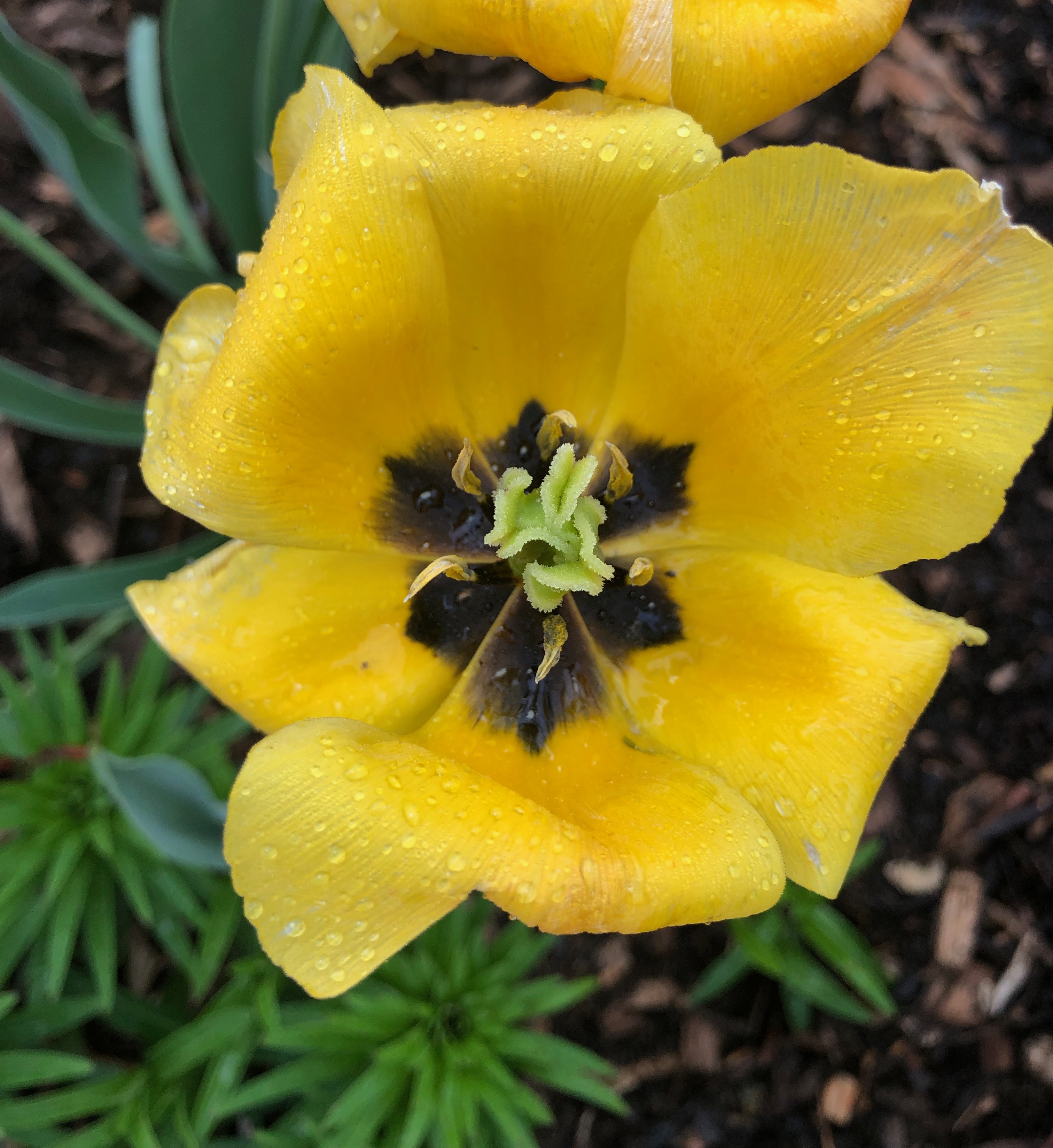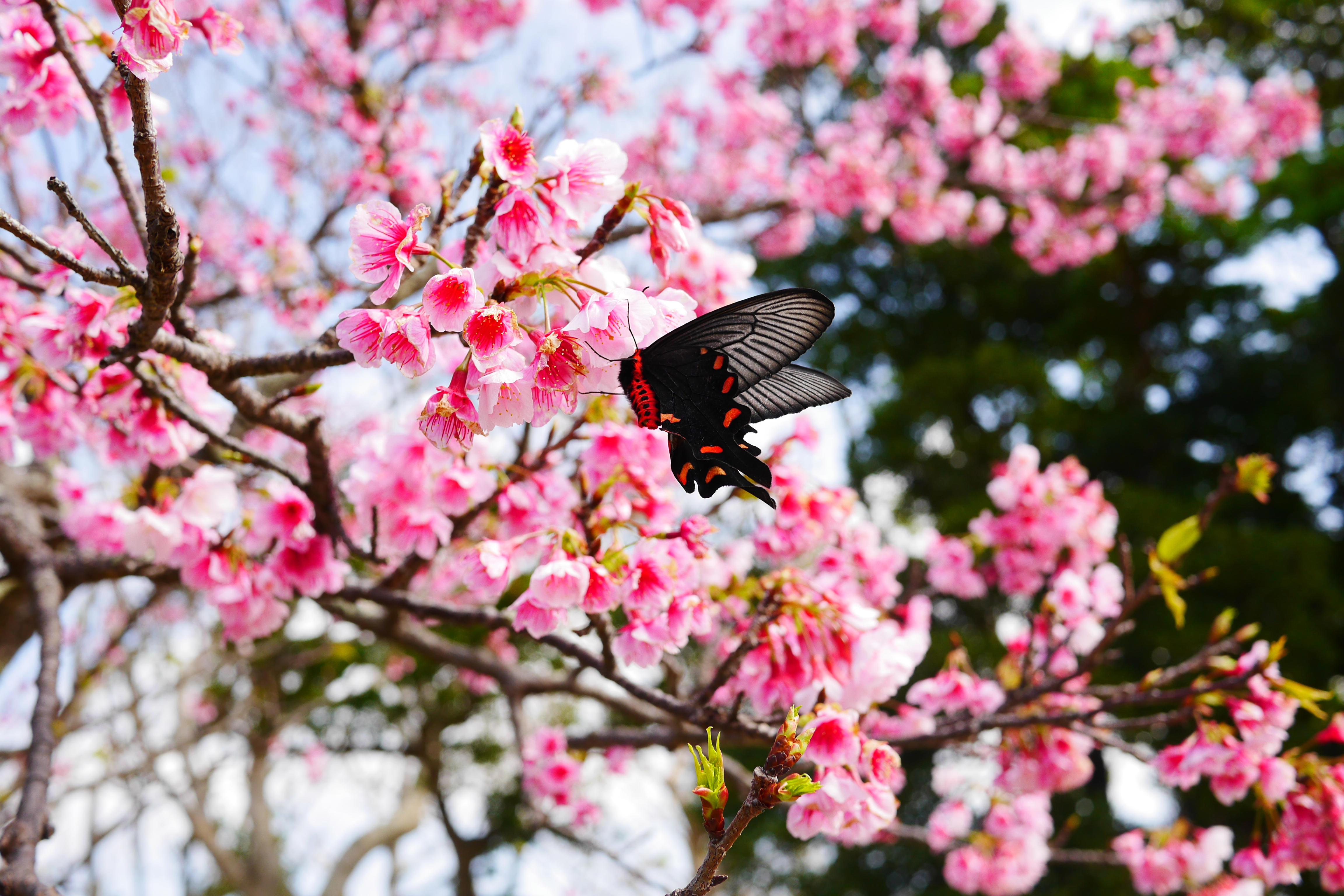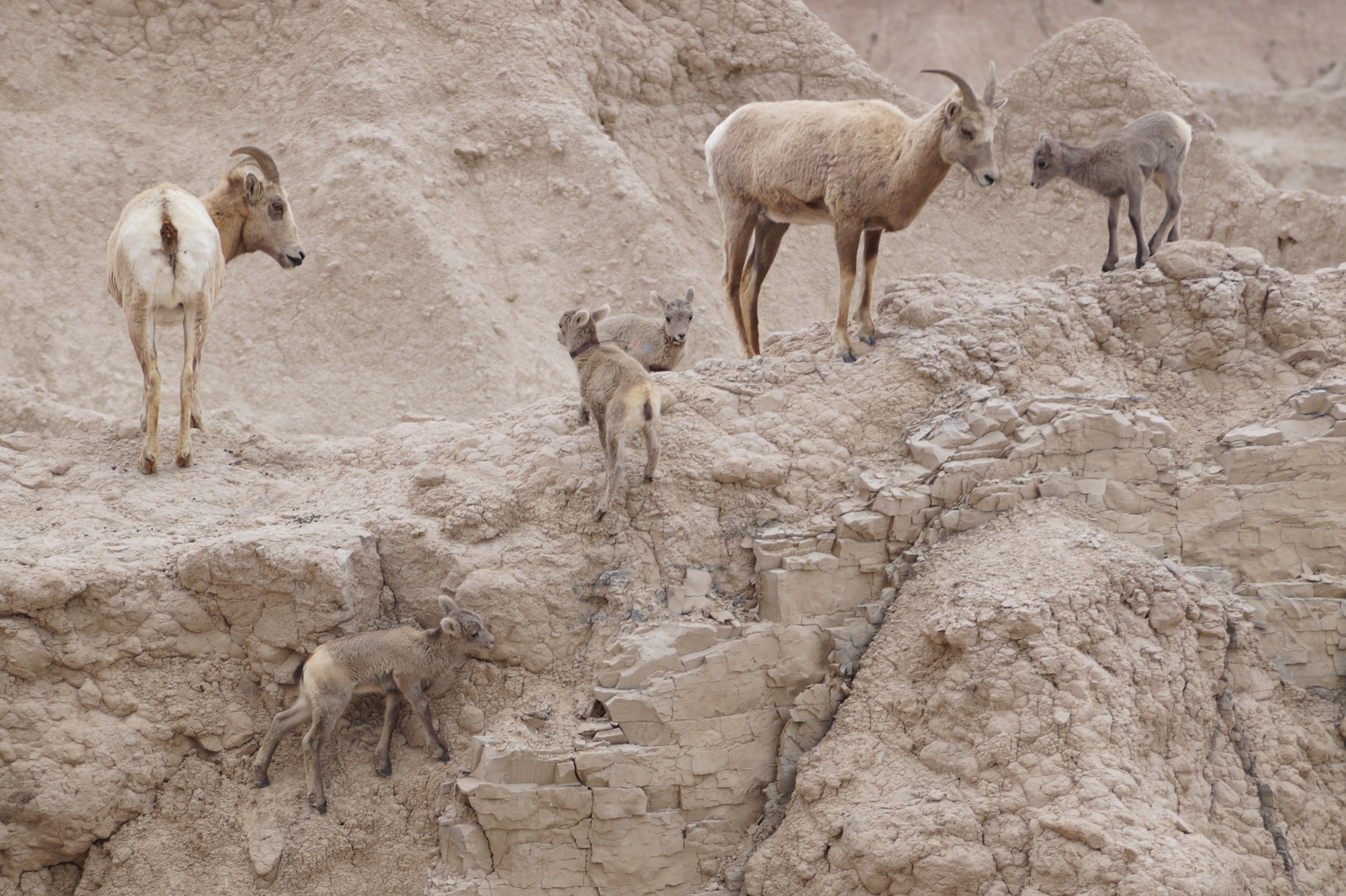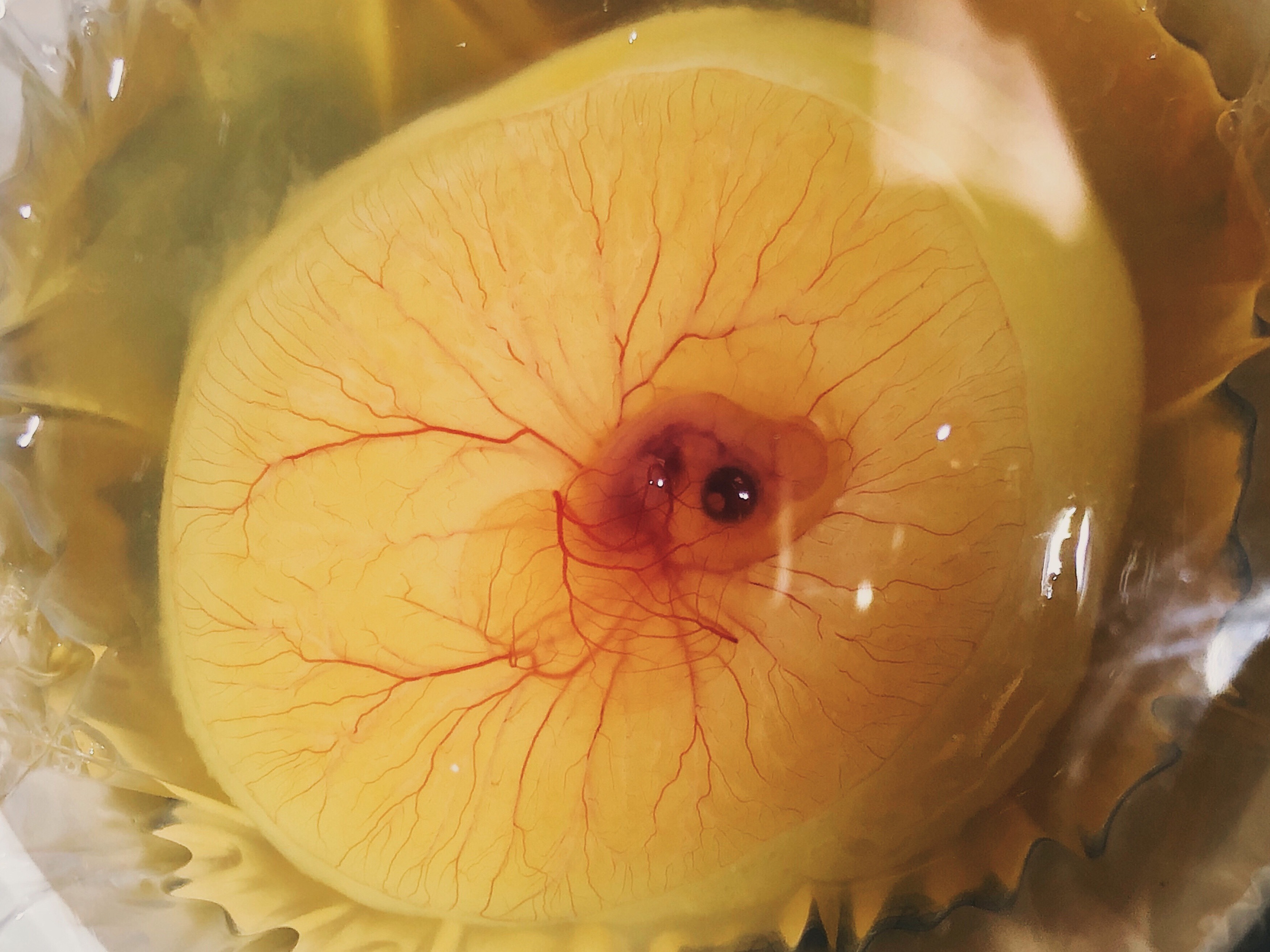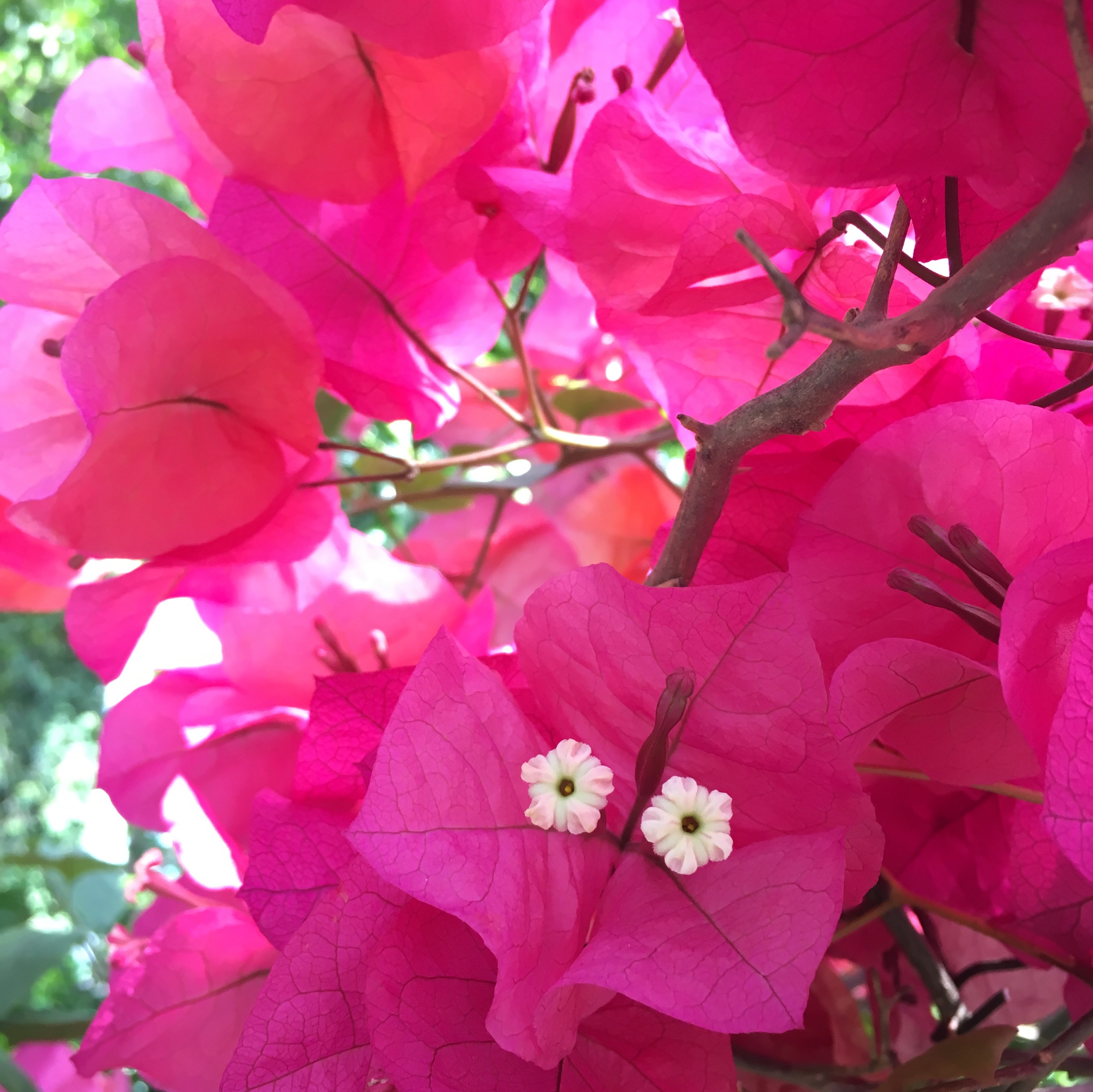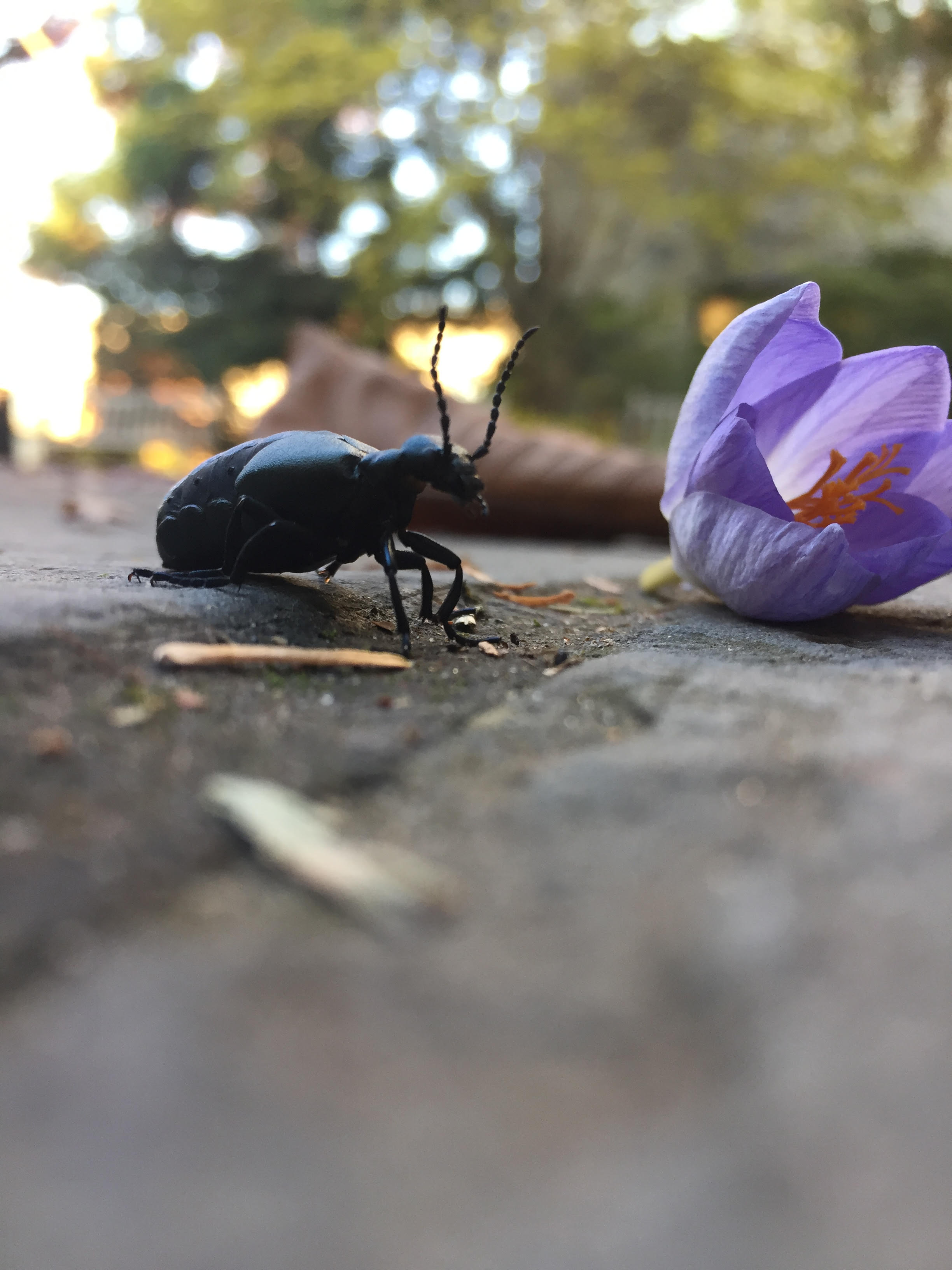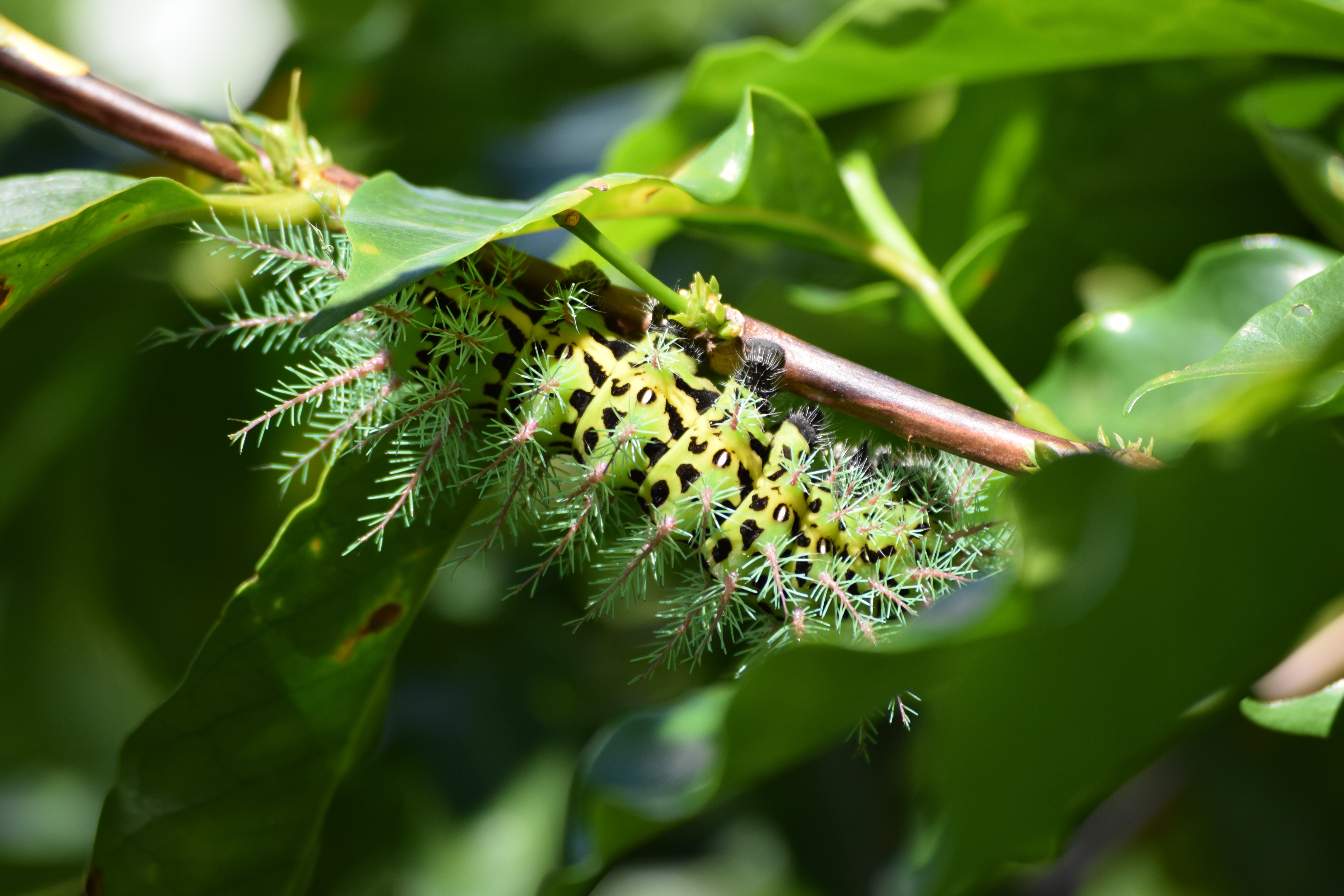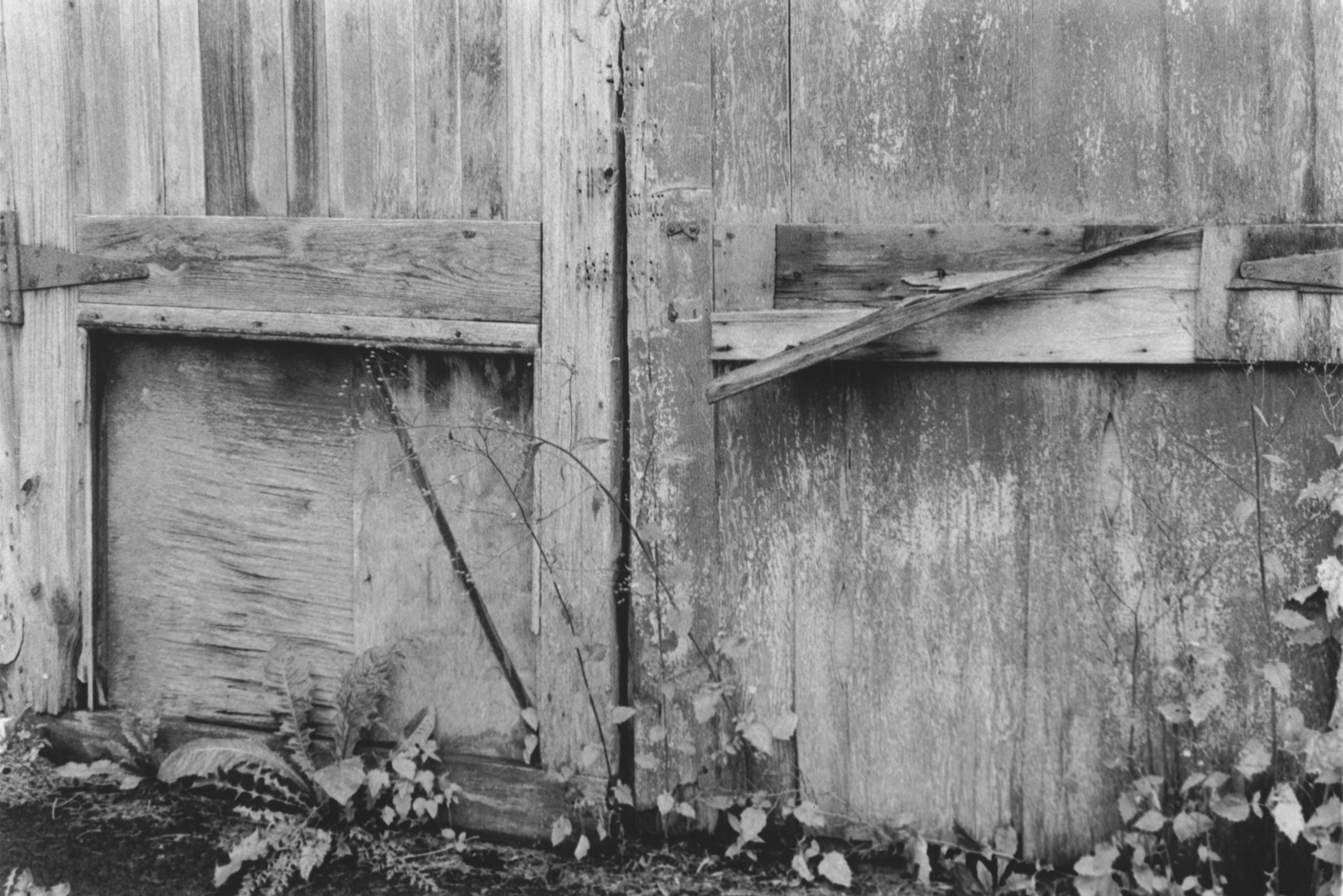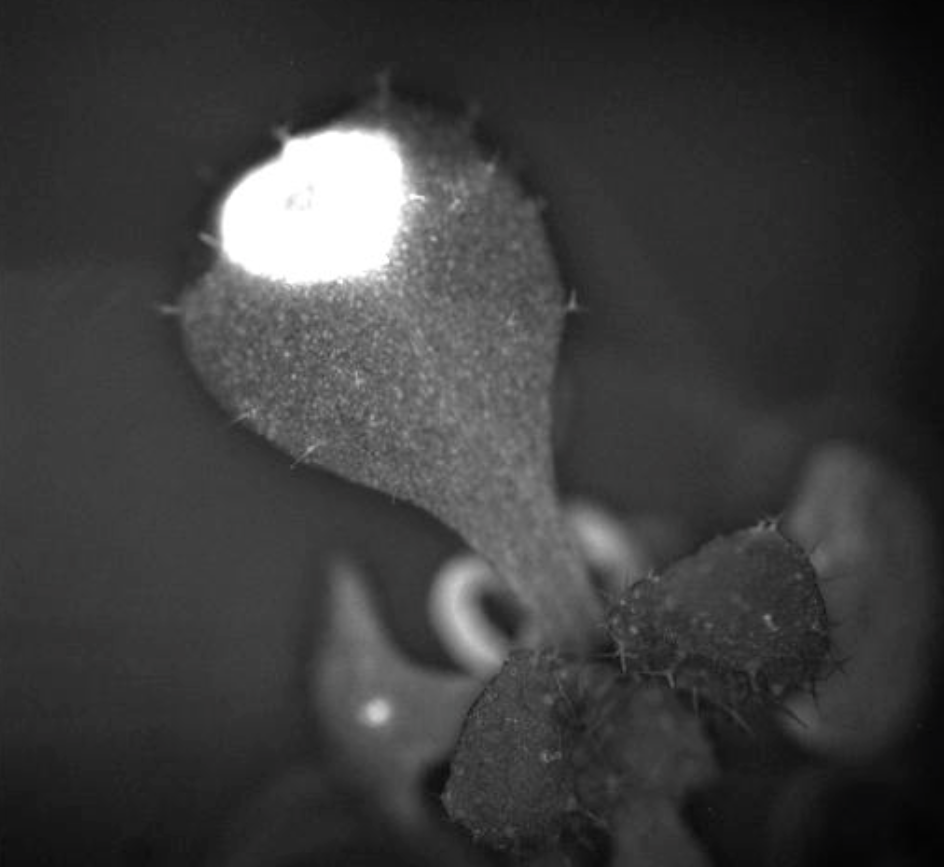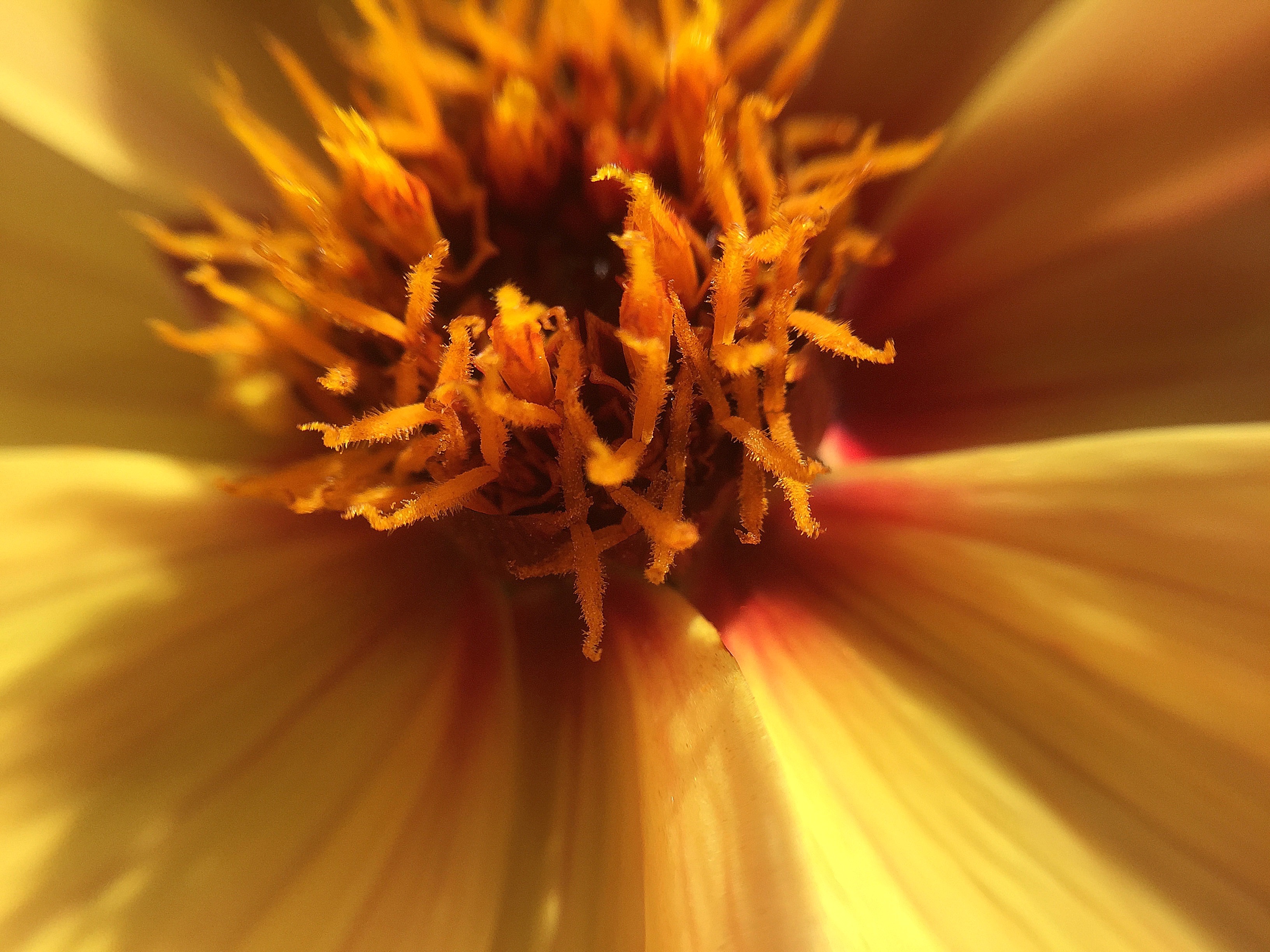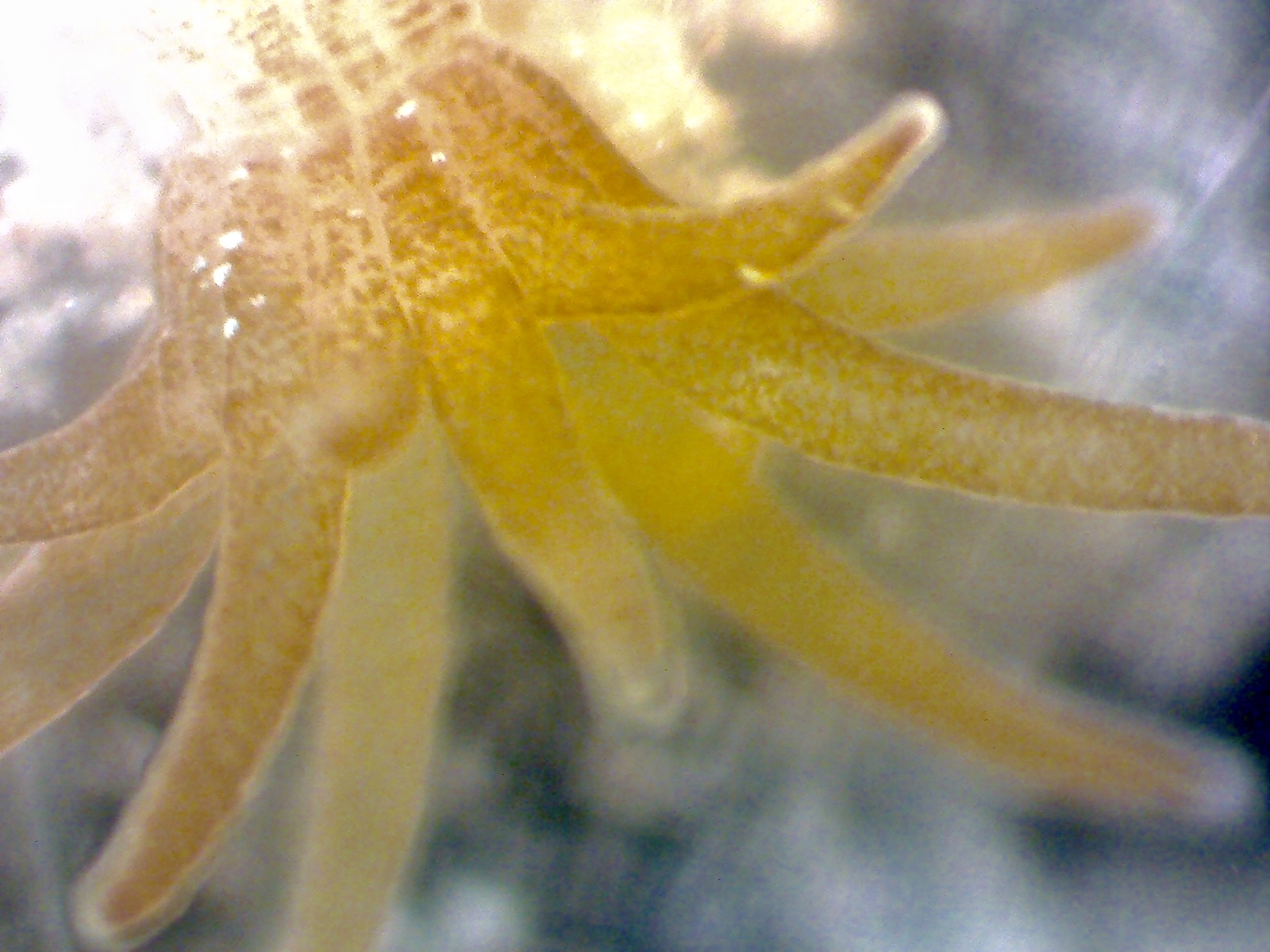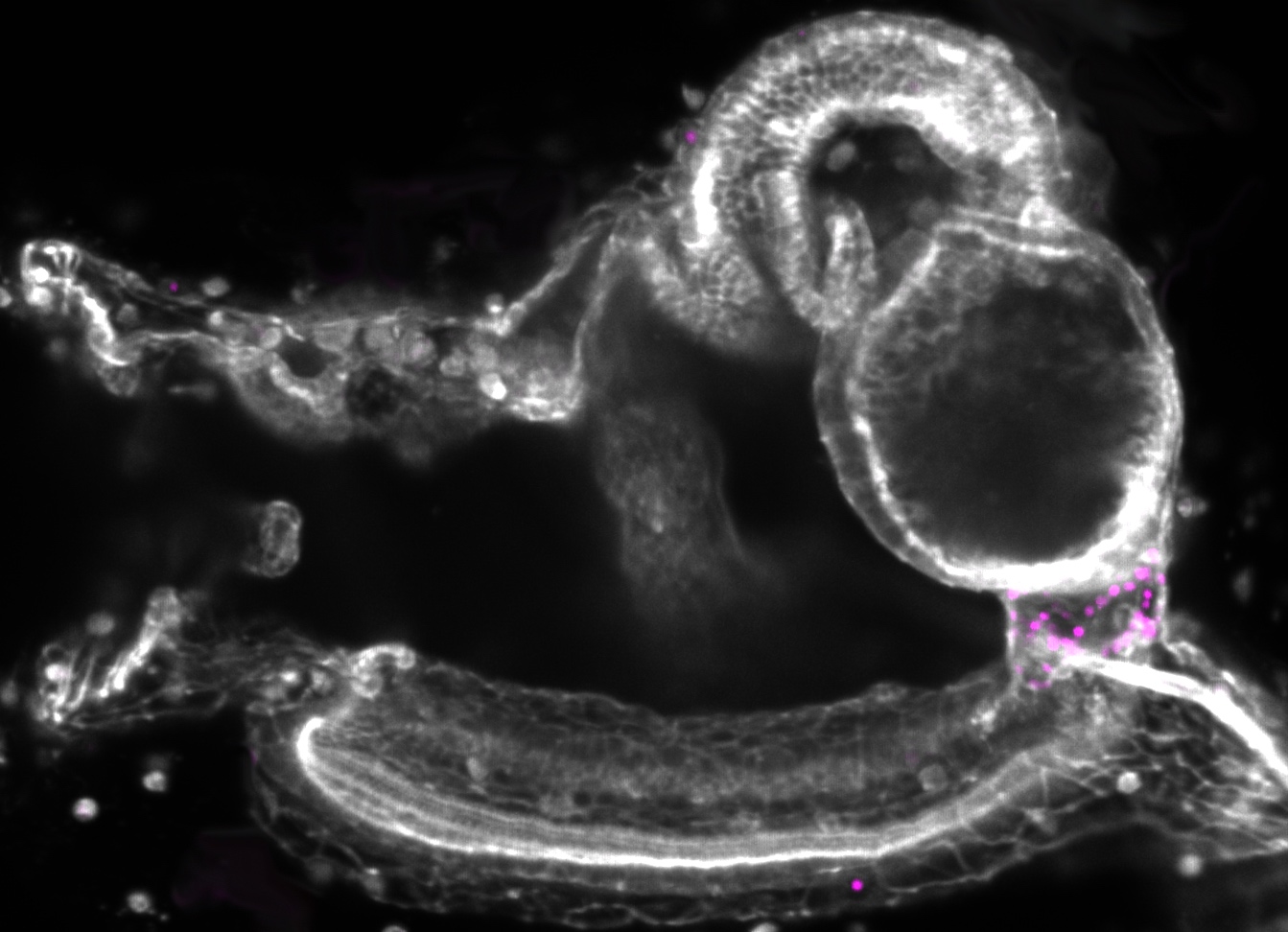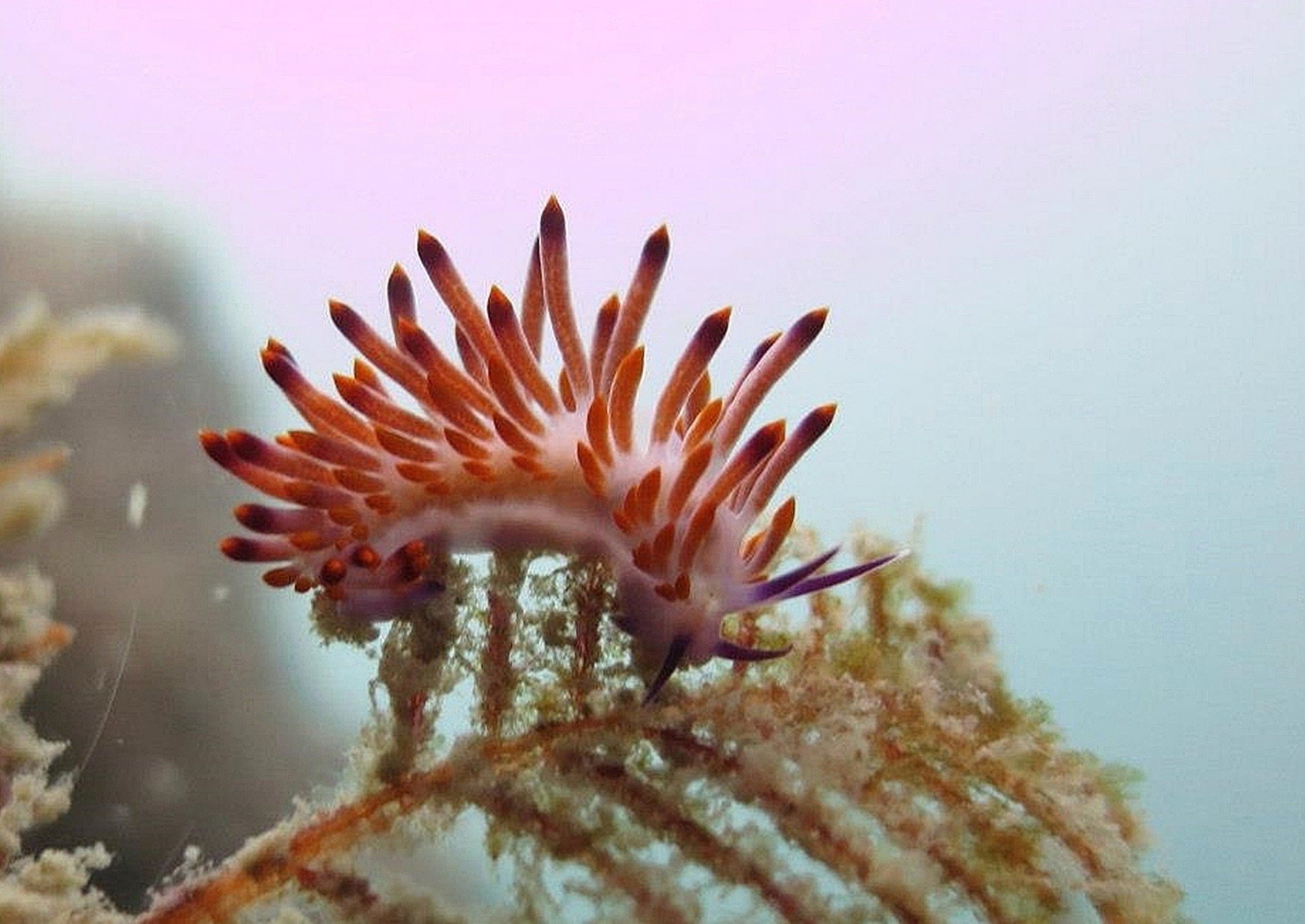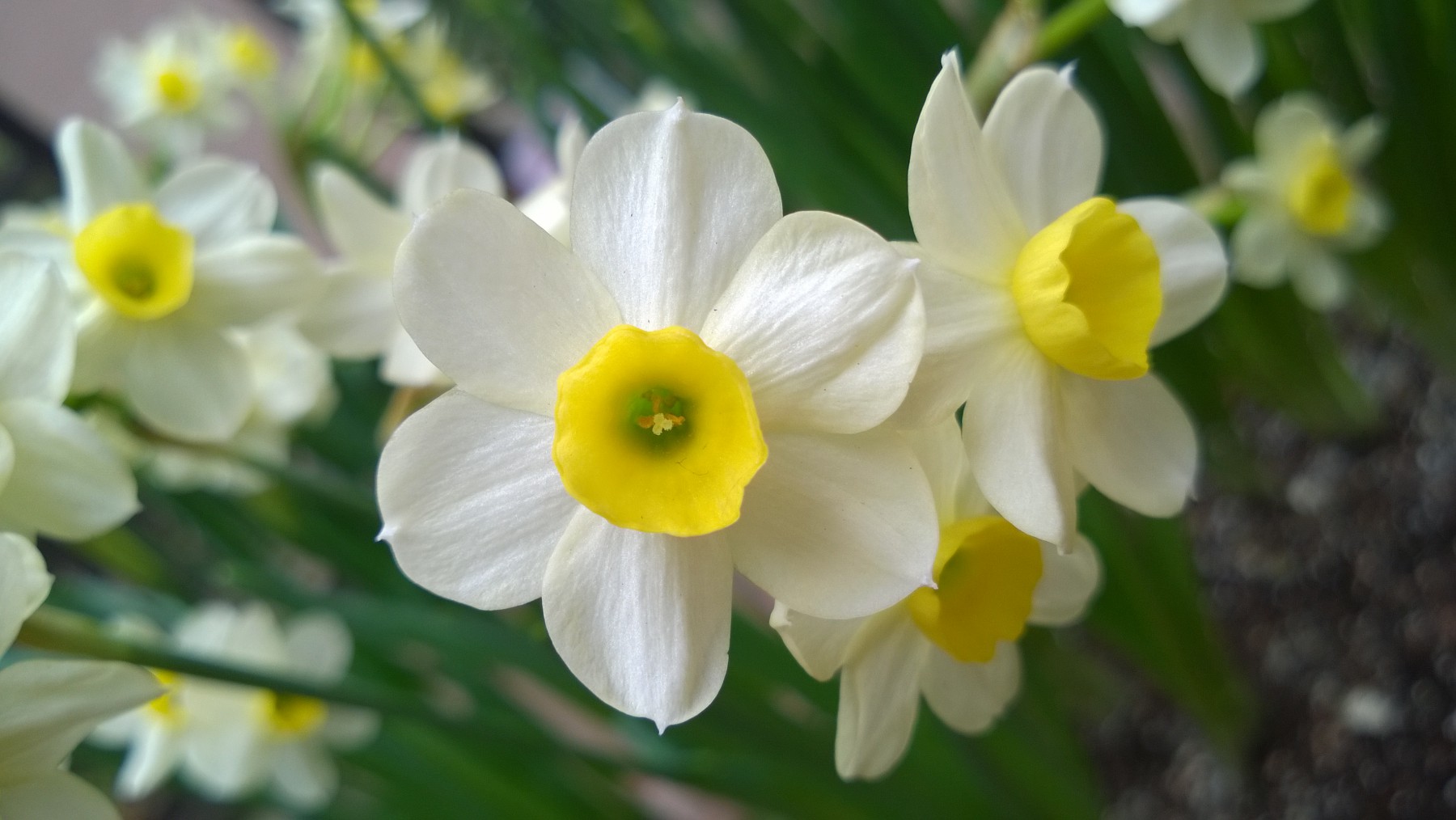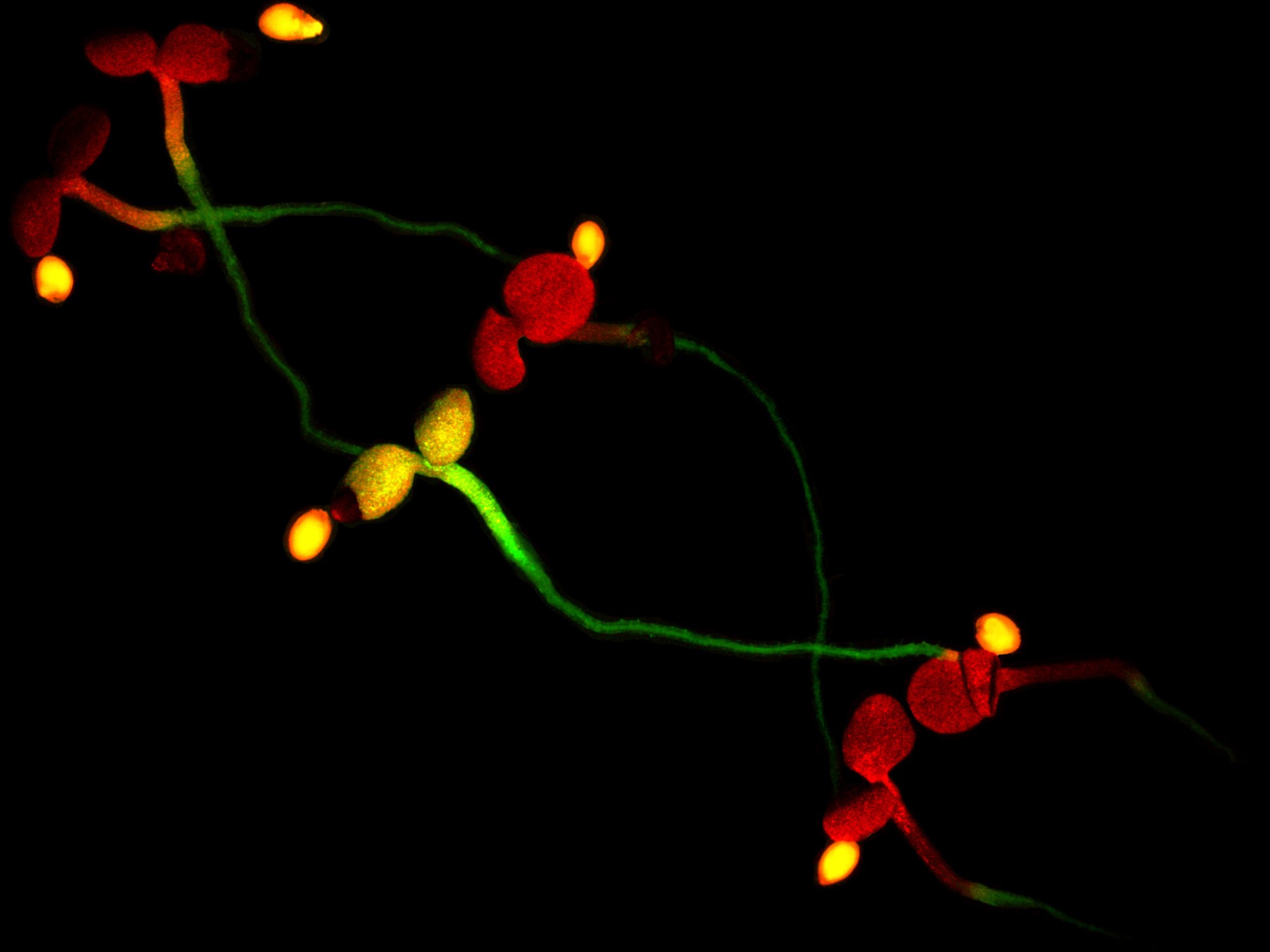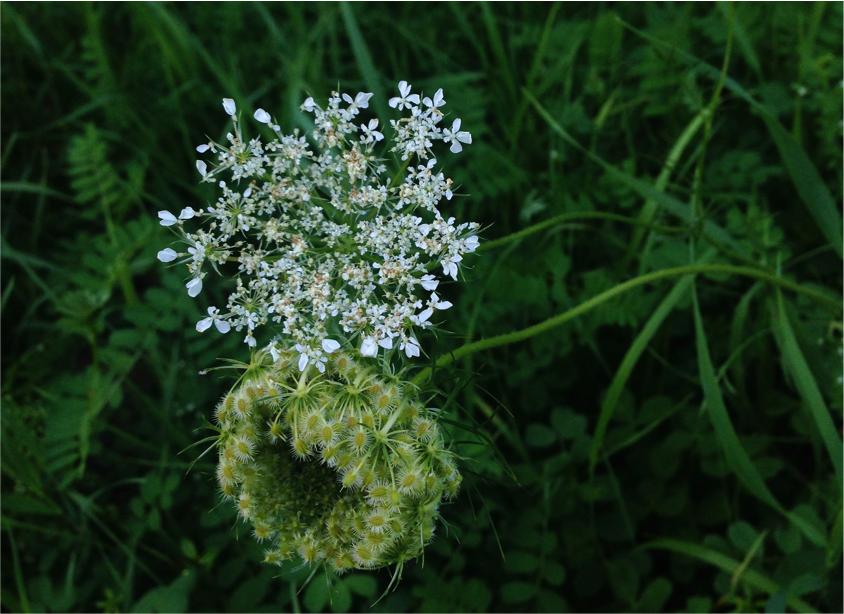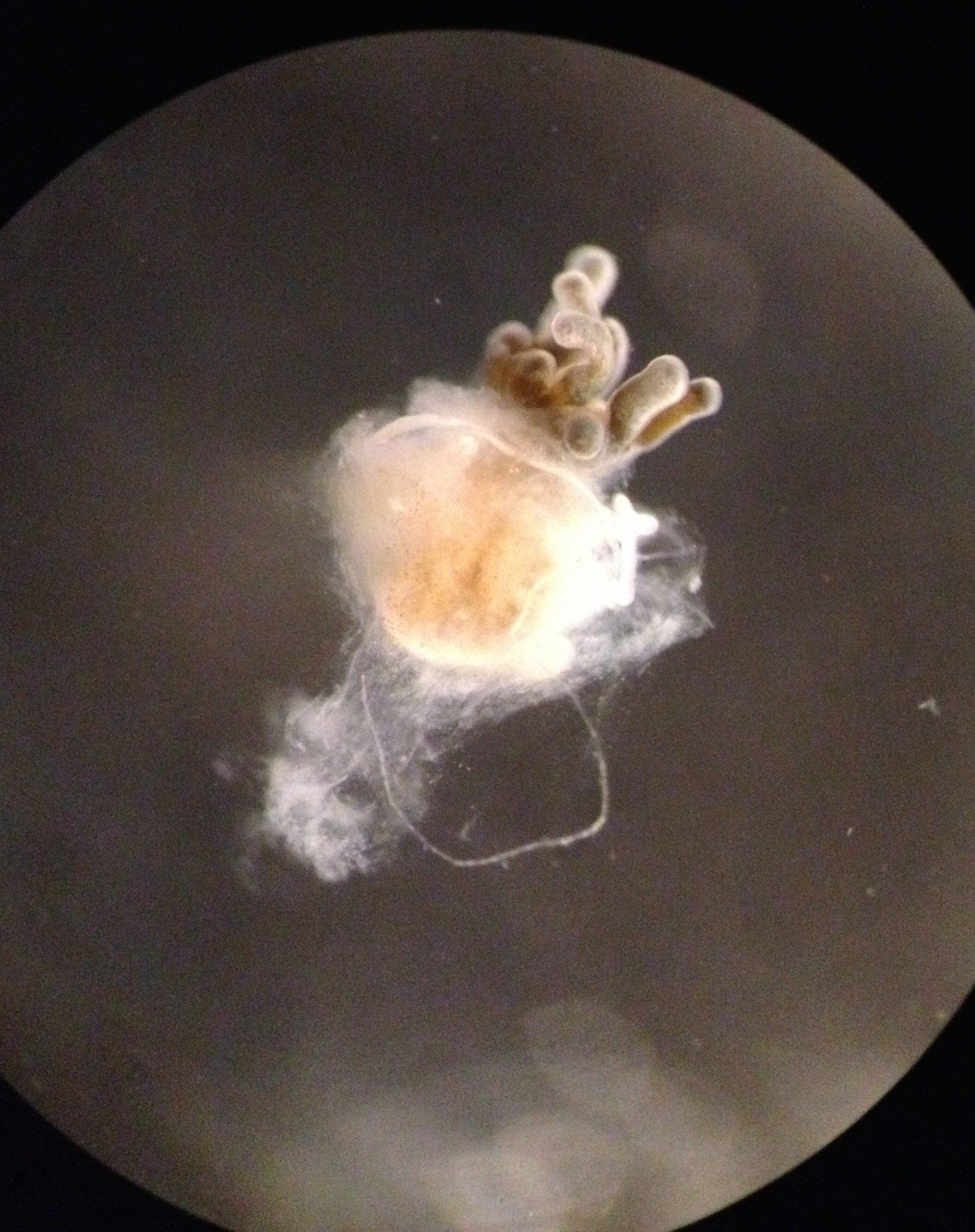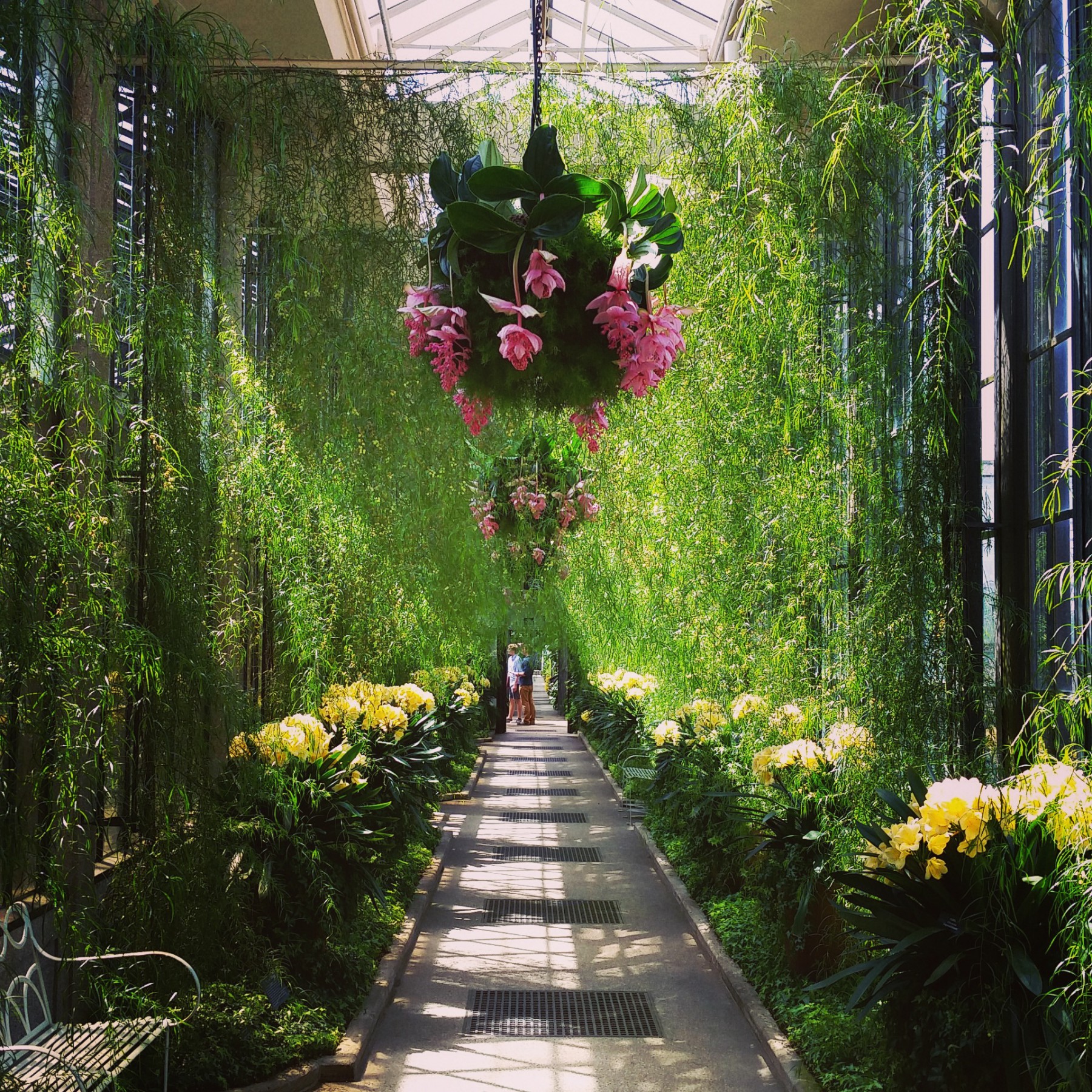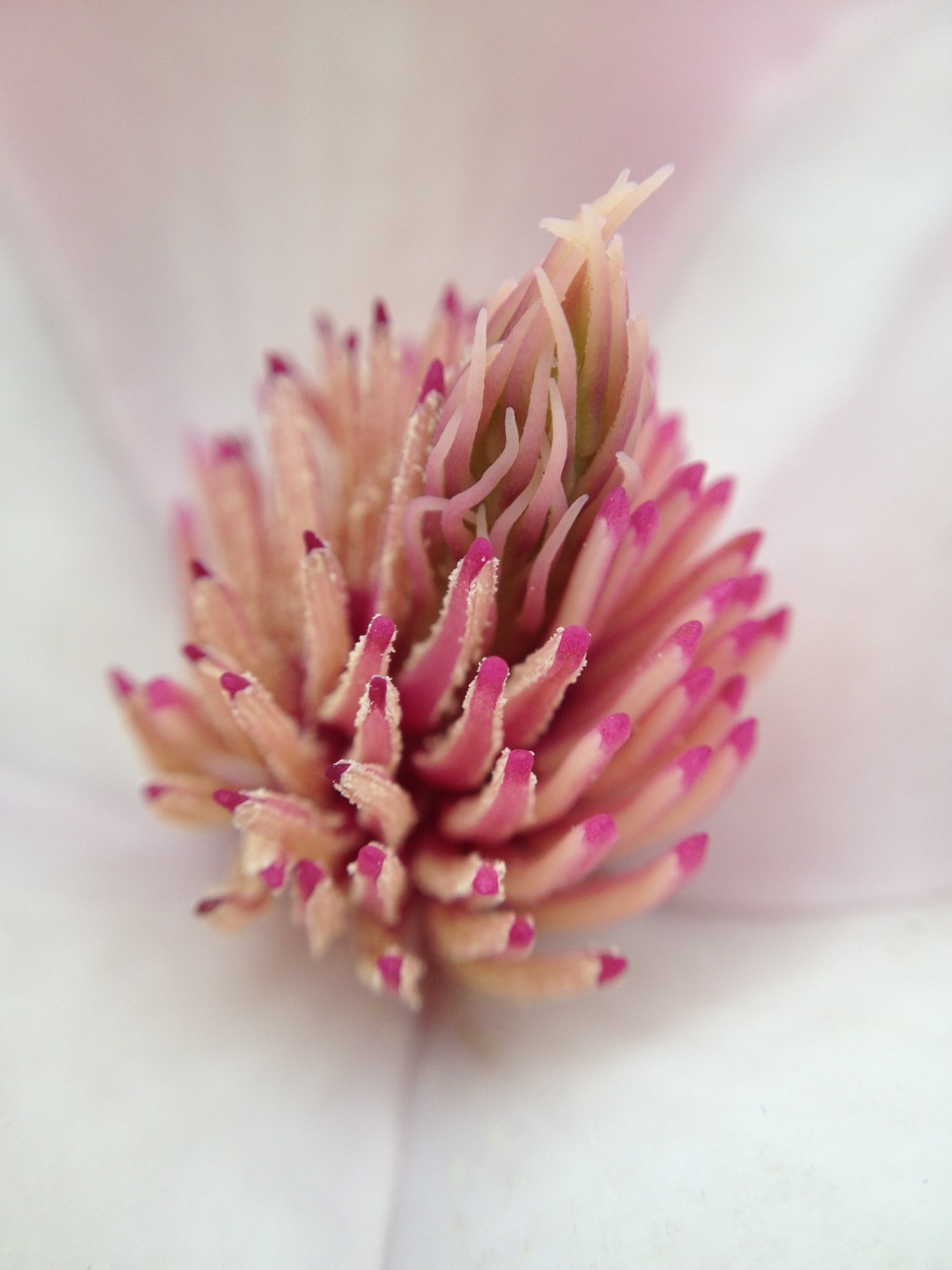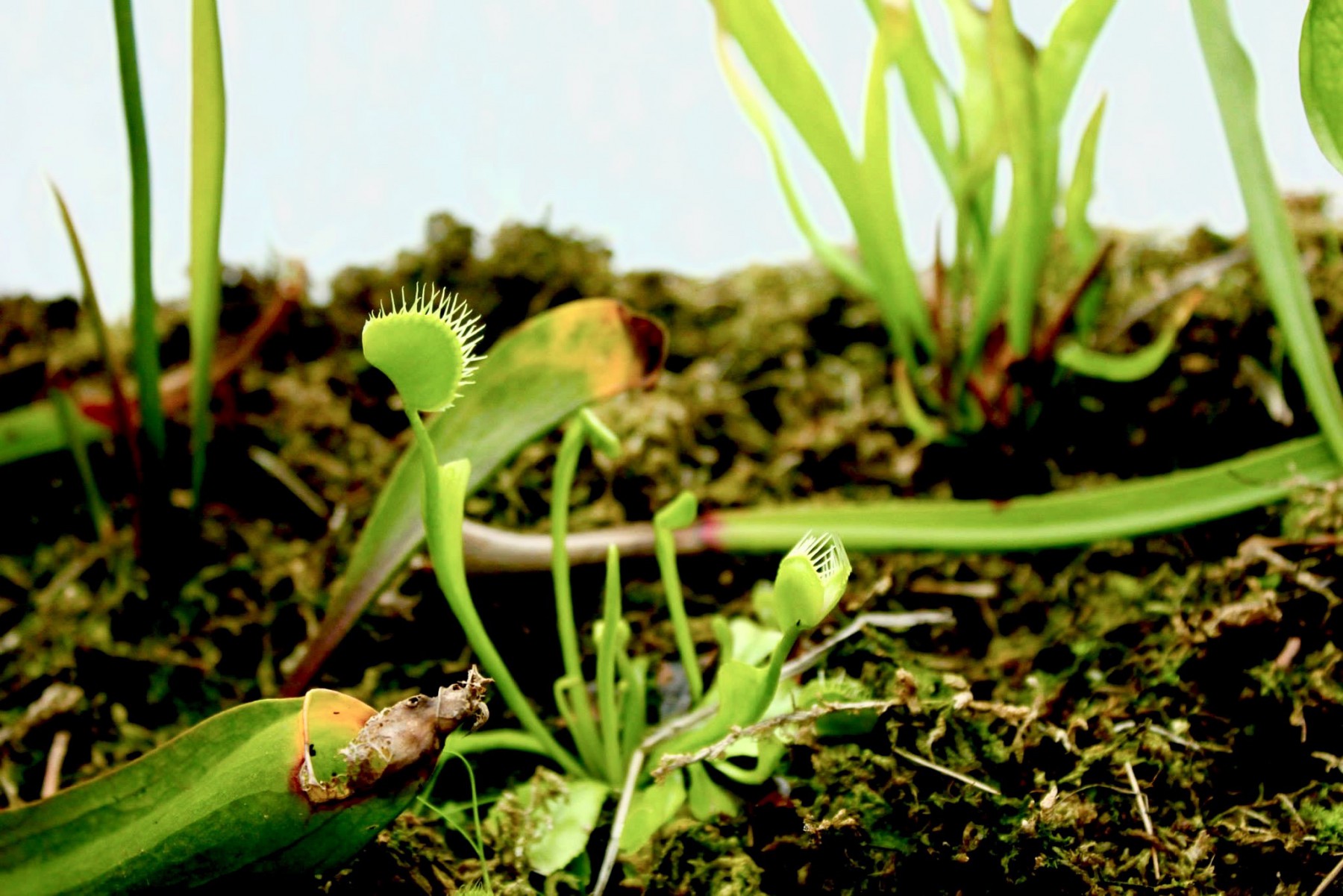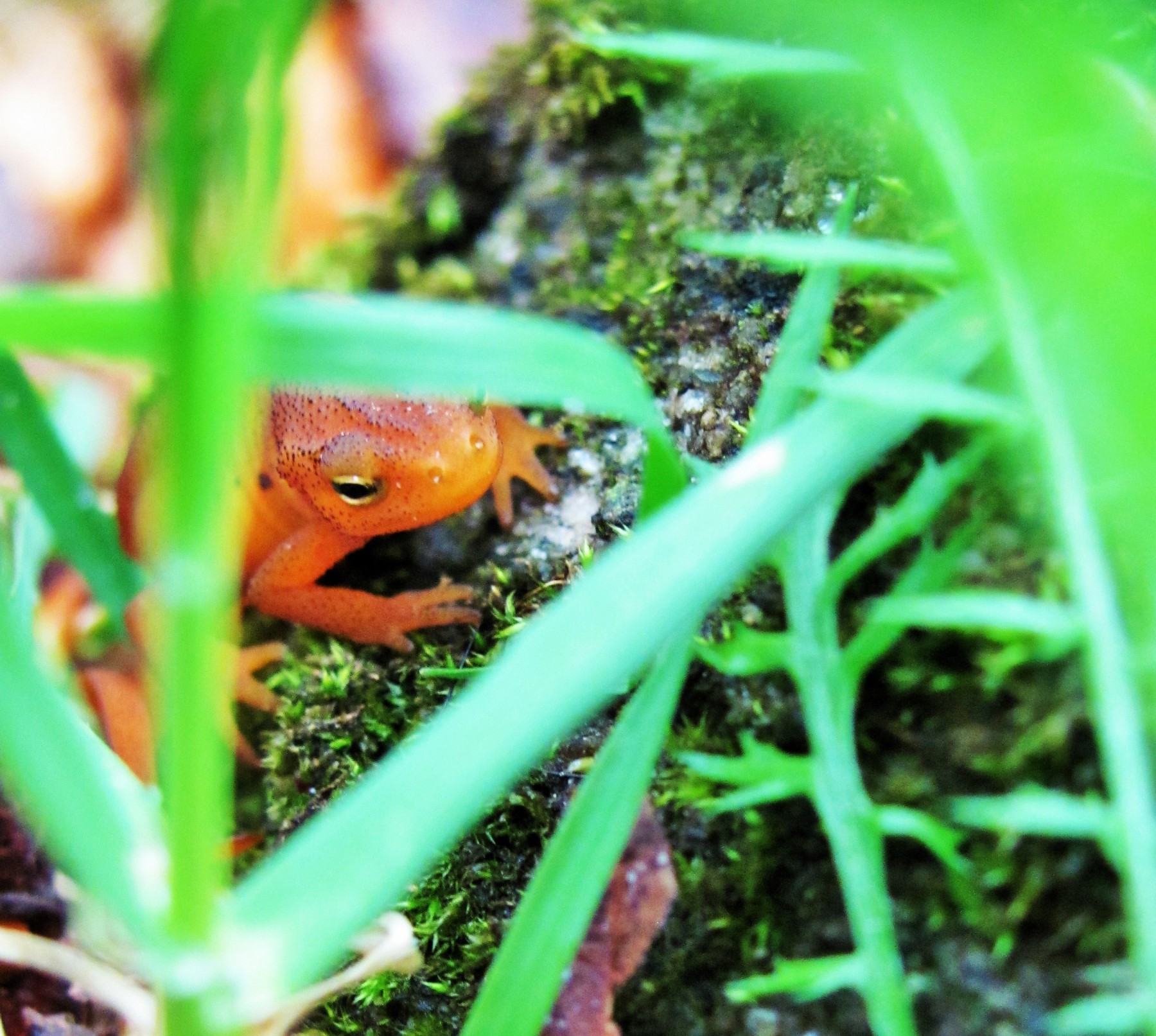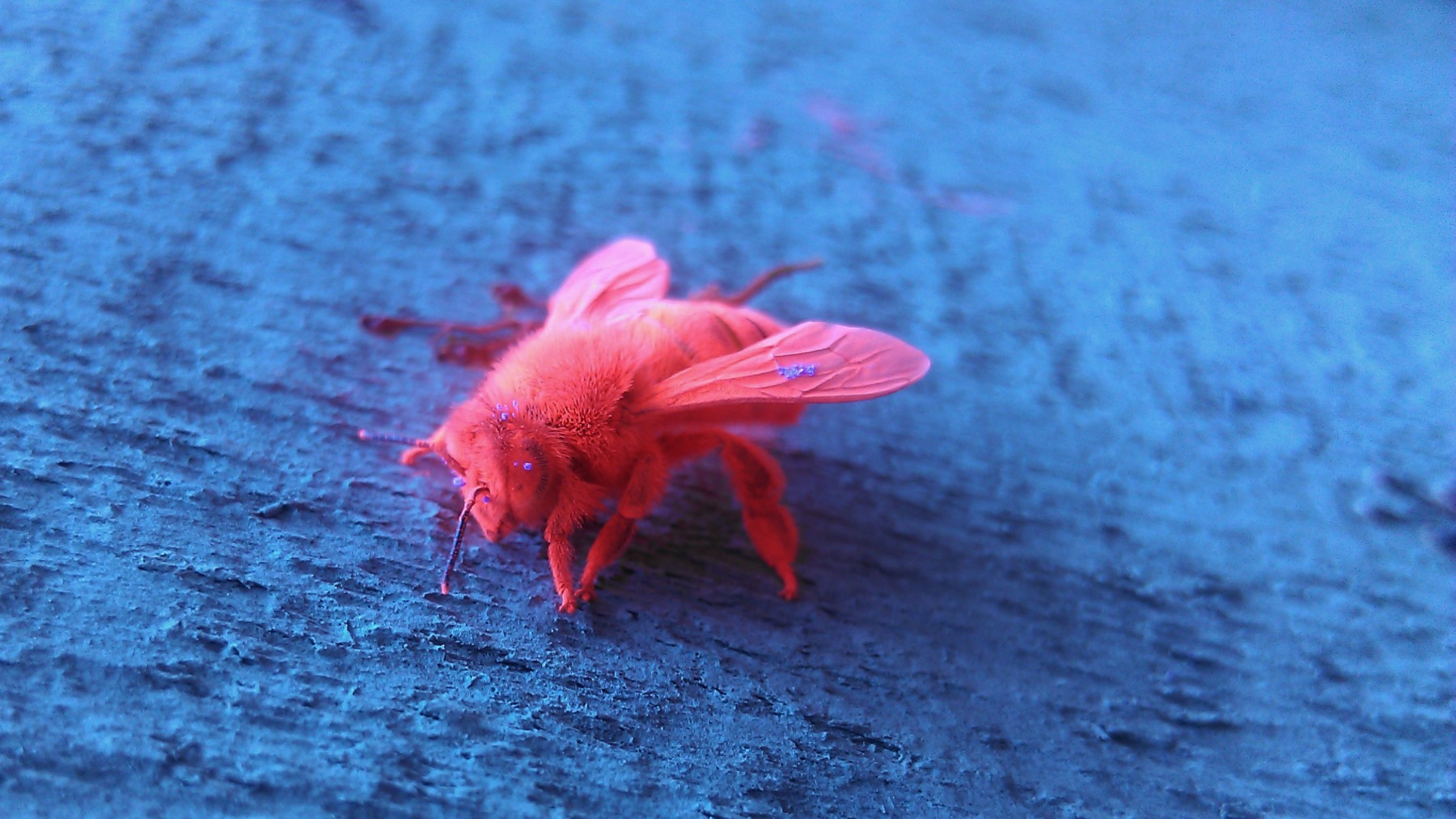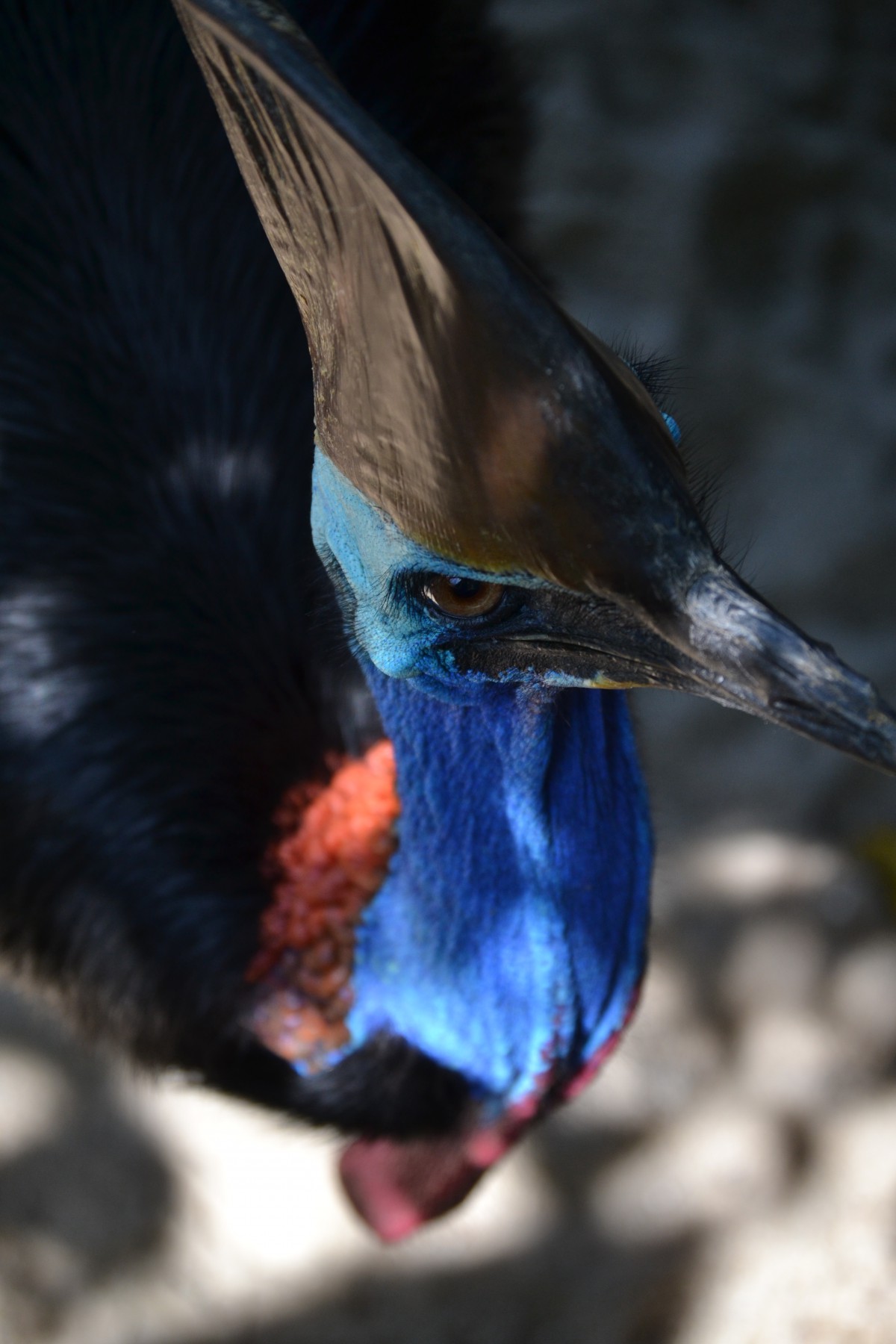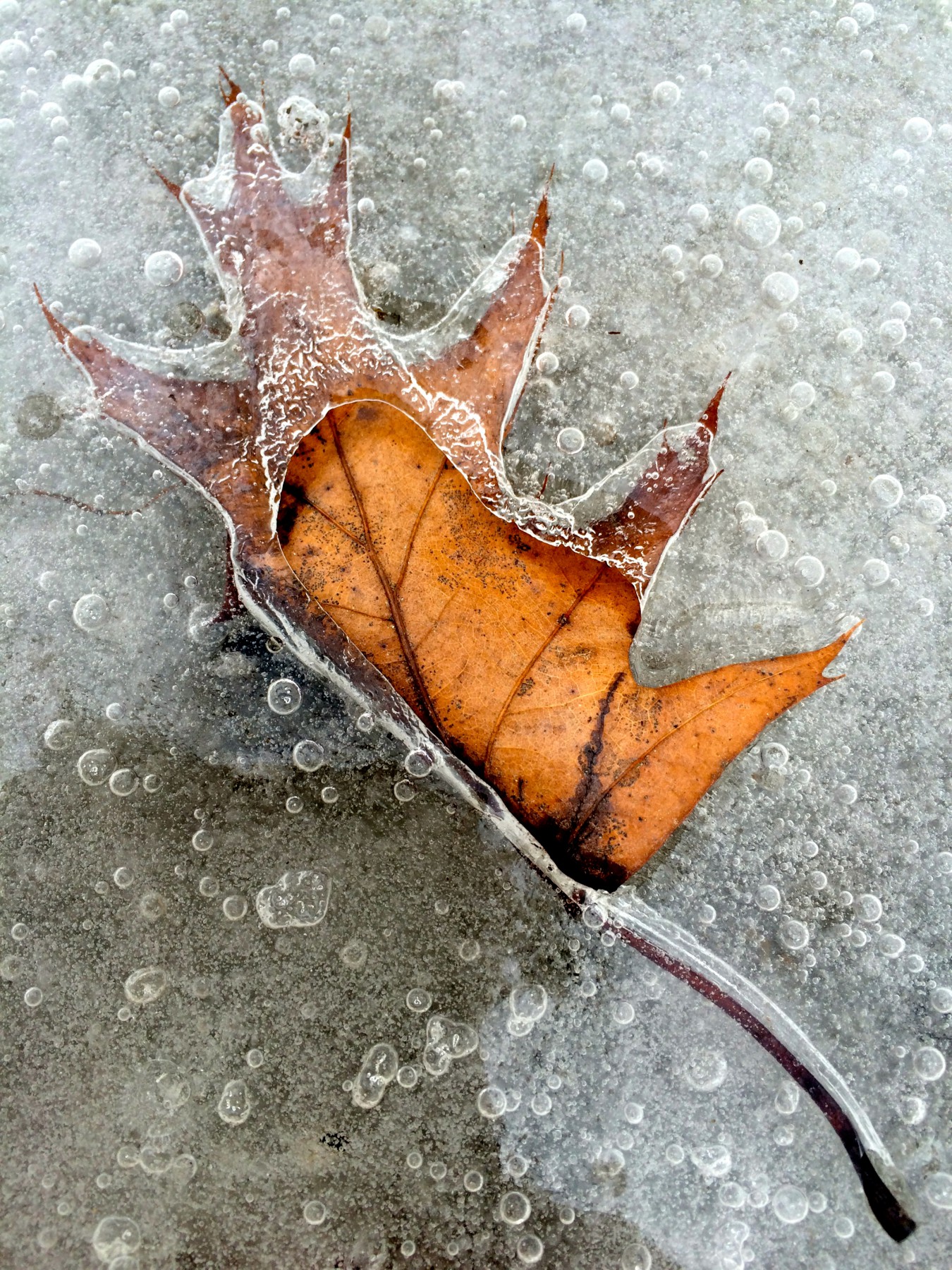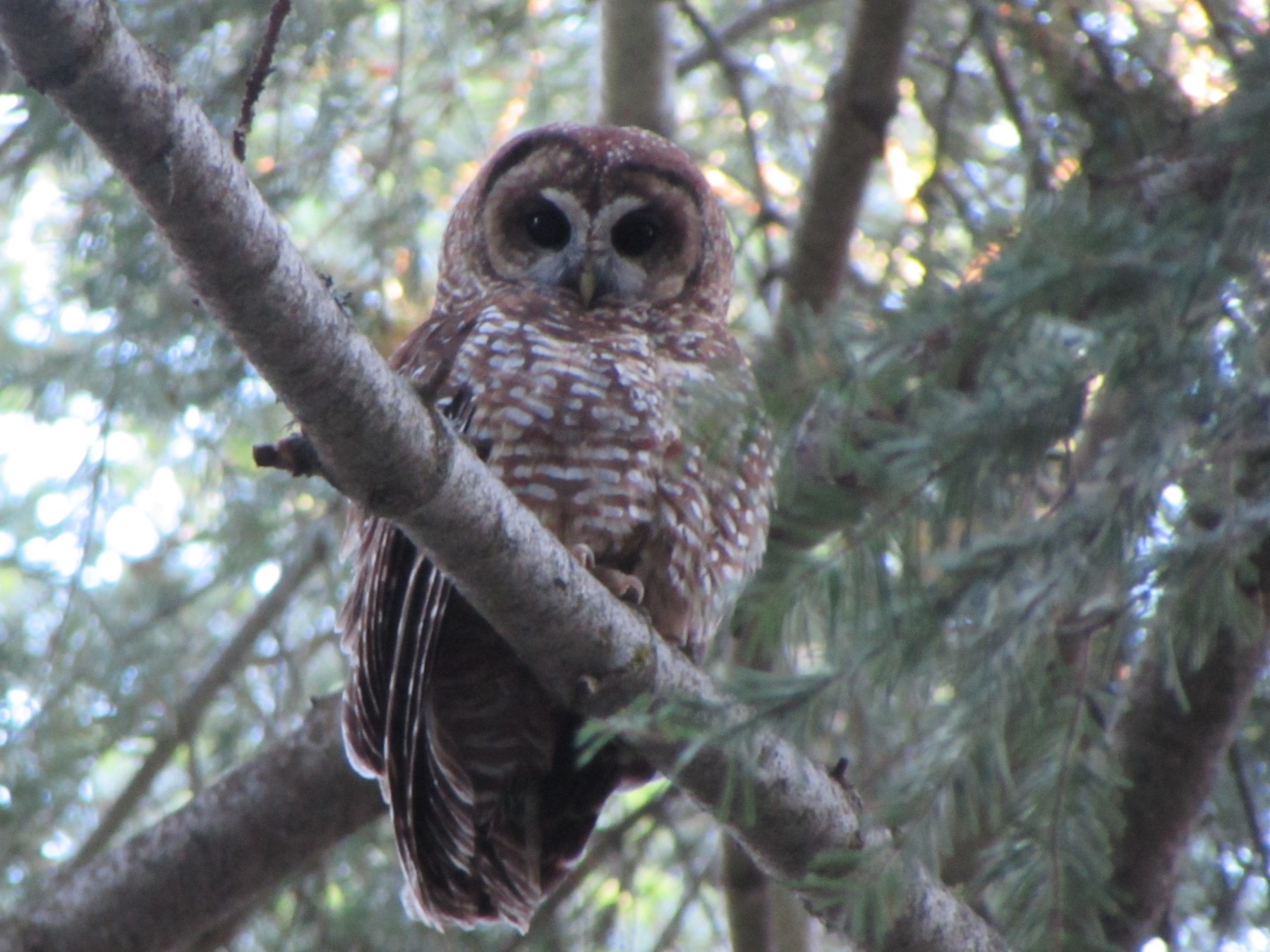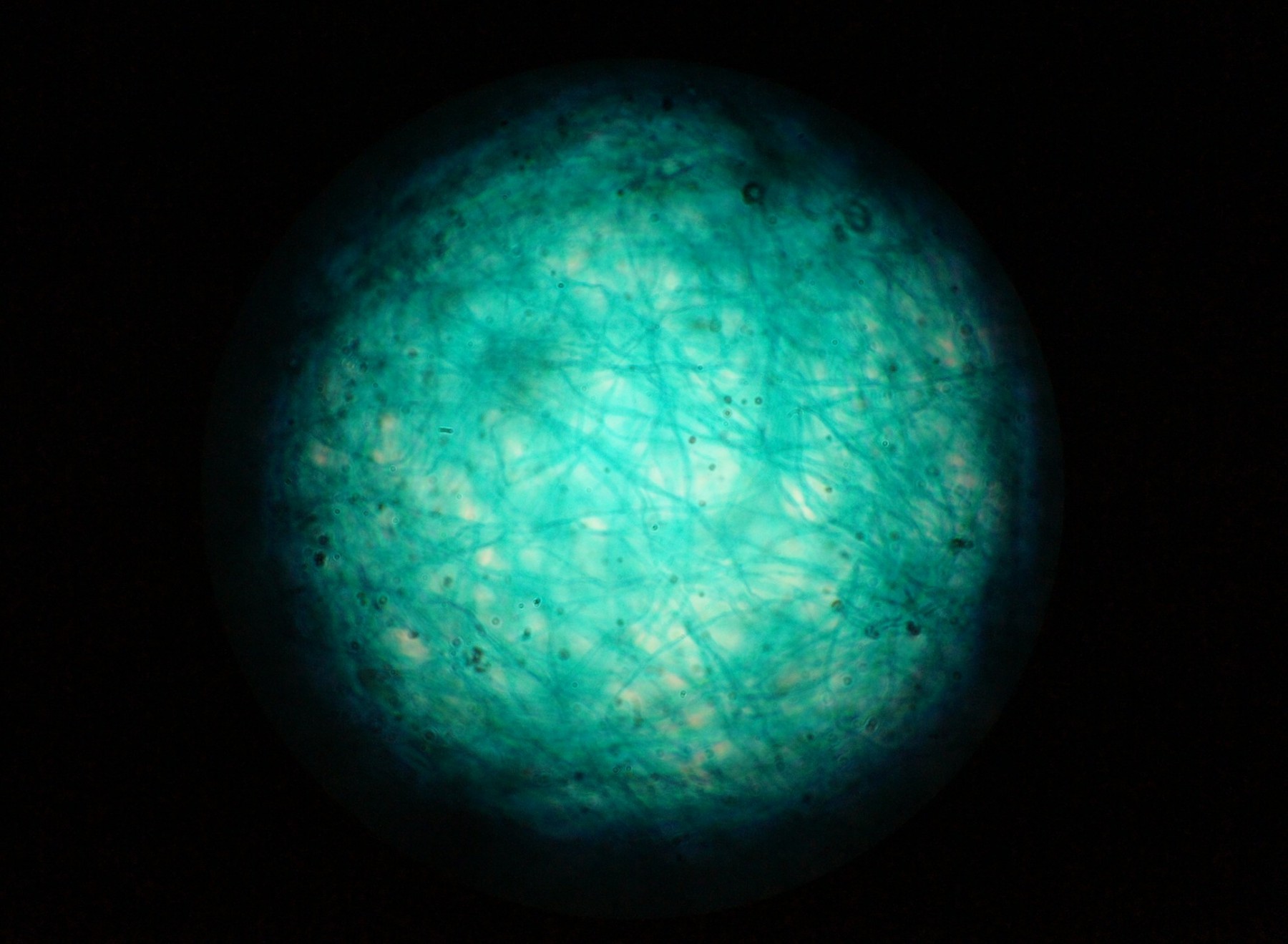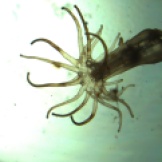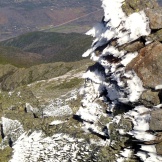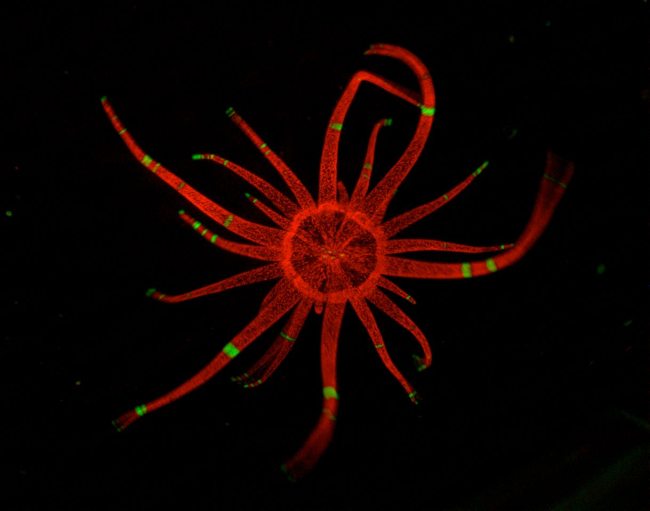
1. Oral disk (~1.5mm diameter) and tentacles of an Aiptasia pallida anemone. A. pallida tissue contains symbiotic algae called zooxanthellae which photosynthesize and provide nutrients for their host anemone. Zooxanthellae autofluoresce when excited, and appear red in this image. Green banding on the tentacles is tissue expressing GFP, fluorescing green here. As the image was taken, the anemone began to wake up from anesthesia and started waving its tentacles around, the motion of which can be seen at the tips of the tentacles. Image taken with with CCD camera attachment to Leica MZ16F fluorescence dissection scope using GFP filter.
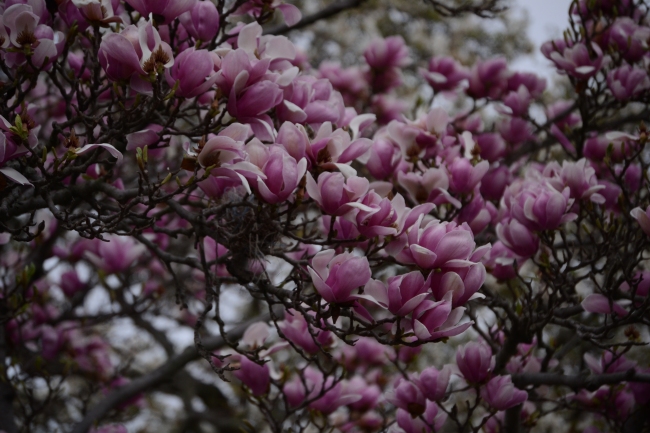
2. This is a photograph of a magnolia tree in the Ben West parking lot, taken on a rainy spring day in 2012.
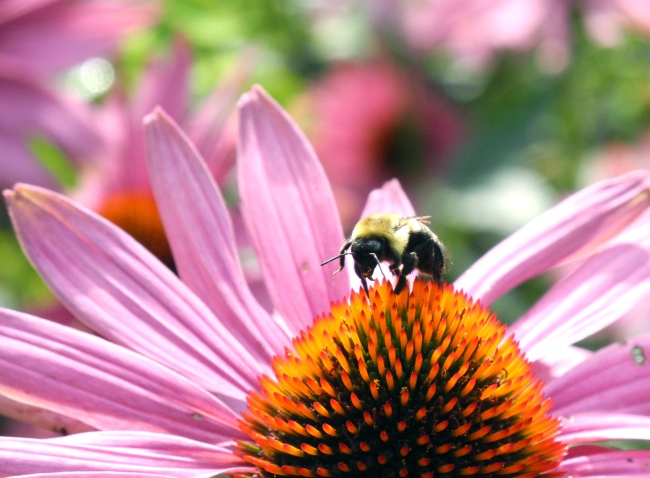
3 This photo was taken with a Nikon P7000 two summers ago during a family vacation at the Thuya Gardens near Northeast Harbor, Maine. The subject is a honey bee pollinating a flower. When the photo was taken, late August, the garden was in full bloom and the air was literally full of honey bees. It took several attempts and a great deal of patience, but I was finally able to get a non-blurry closeup of a bee.
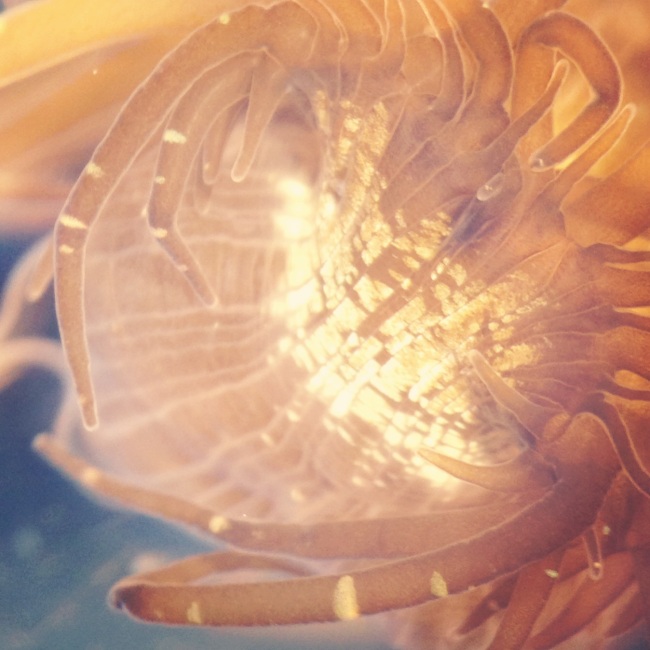
4 I took this photo during a brightfield microscopy session in my cell bio lab. It features an anemone (aiptasia pallida) and its dinoflagellate symbionts.
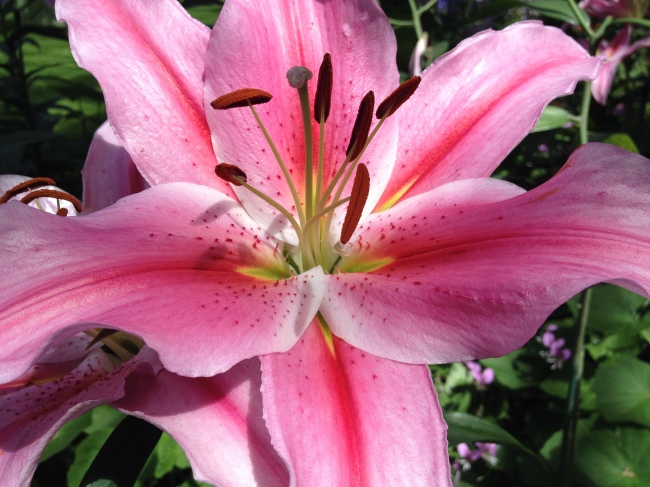
5 This is a Stargazer Lily, a type of oriental hybrid of lily, found at Longwood Gardens. This plant is an angiosperm (flowering plant) and this image shows the stamen, containing pollen, and the stigma, which receives the pollen and leads to the ovaries. These lilies produce a beautiful smell and contain elaborate coloring, likely to attract pollinators to the flower to pollinate the plant.
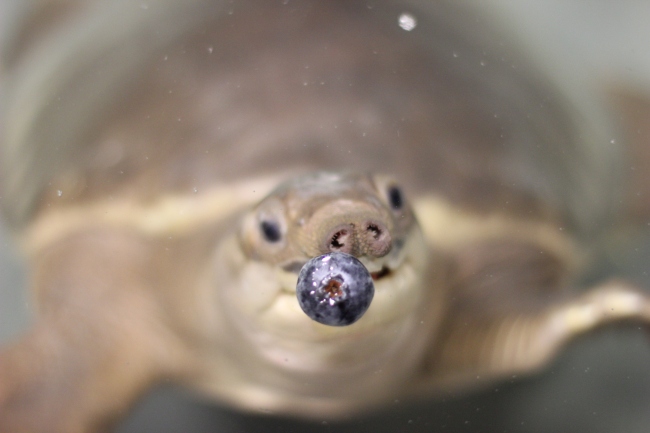
6 An Australian Pig-nosed turtle, Carettochelys insculpta, examines a blue berry. Pig-noses are the last extant members of the genus Carettochelys. Found only in Australia and New Guinea, Pig-noses are very different from other species of turtles. Their name comes from their pig-like nostrils, which act like snorkels for the aquatic turtle and house sensory organs to aid with hunting. The Pig-nosed turtle has full flippers resembling those of sea turtles rather than the webbed feet of its freshwater counterparts and is an agile swimmer. Its carapace is soft and leathery with a skin-covered plastron below.
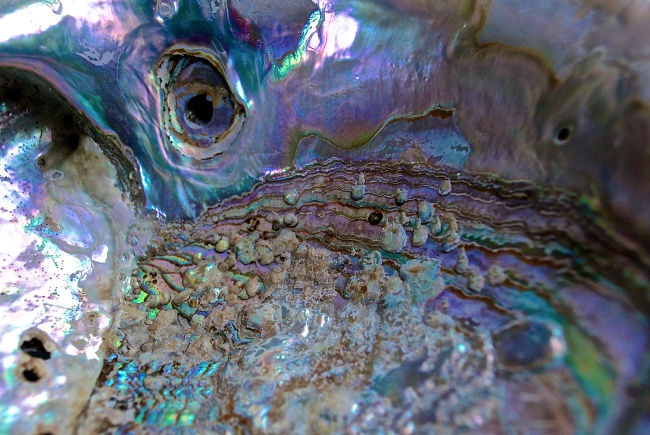
7 This image captures the textural depth and iridescence of the nacre-coated inner shell of Haliotis (Abalone), a marine gastropod mollusk. Colloquially known as “mother of pearl,” nacre is secreted by the Abalone’s epithelial cells and acts as a mechanism of defense, entombing invaders such as parasites and debris in a process called encystation. The iridescence characteristic of nacre stems from light diffraction and interference.
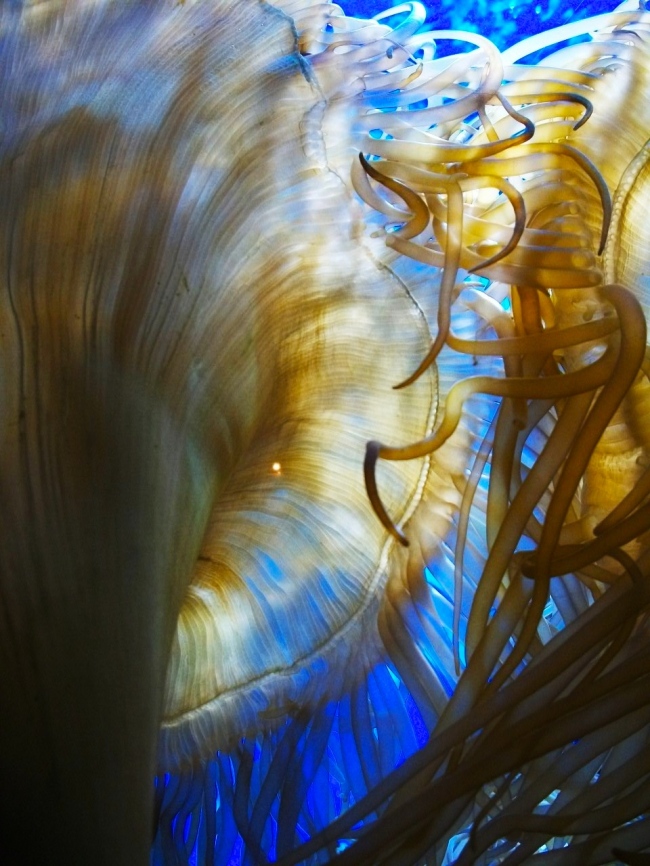
8 A sea anemone specimen, order Actiniaria, at the Birch Aquarium, San Diego, California. Actiniaria lack the medusa phase of many other Cnidarians, but do posses the nematocysts (stinging cells) characteristic of the phylum.
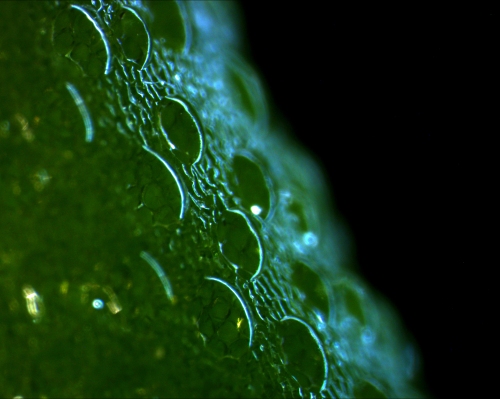
9 The surface of the leaf of a Delosperma floribunda ‘Stardust’ plant, a succulent native to southern Africa. The translucent beads on the surface of the leaf are not drops of water – rather they are small liquid-filled globules that are part of the plant and likely act as lenses to focus light onto the chloroplasts that are visible directly underneath. This image was taken with a brightfield microscope.
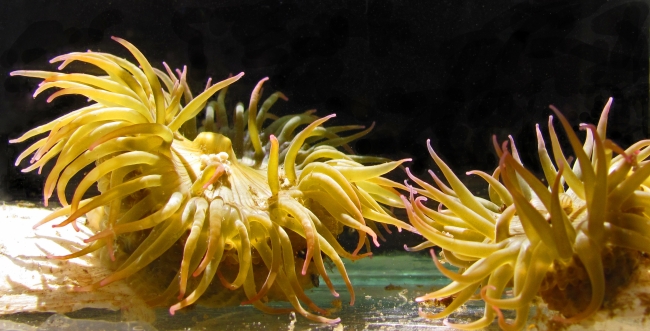
10 This is an image I captured in the summer of 2013 at Friday Harbor Laboratories of two polyps of the sea anemone Anthopleura elegantissima. My research is focused on the aggressive response that this clonal anemone mounts against nonclonemates. In this image, I have placed two nonclonemates together in a small aquarium and we can see their feeding tentacles beginning to touch. This tentacular stimulation can incite an anemone to either retreat or mount an aggressive response by inflating the specialized battle tenatcles, the acrorhagi, that are densely-packed with toxic nematocysts.
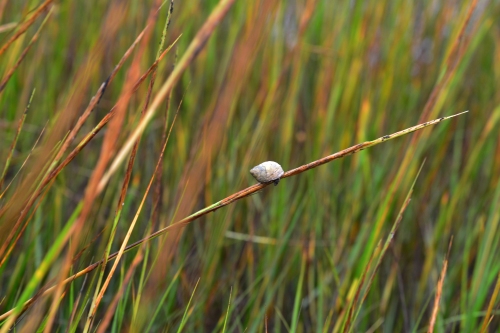
11 Littorina irrorata (marsh periwinkle) on spartina (cord grass) taken on Shackleford Banks, North Carolina. Though quite tiny, this sea snail is fascinating since it is believed to be a fungus farmer. With its radulla, this snail scratches the algae on the plant stem and then defecates in this area, encouraging the growth of fungi. This fungi is the main source of food for littorina.
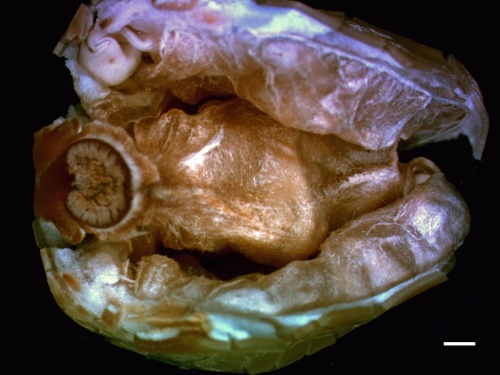
12 This image displays the inside of the opened seed of ipomoea alba, commonly known as the Moon Vine. This garden vine is most well known for its large white flowers which open only in the evening. The seed is marked by its thick seed coat surrounding tightly wrapped cotyledons, which will become the first leaves of the plant. This photo was taken with a dissecting scope. The scale bar marks a length of 1 millimeter.
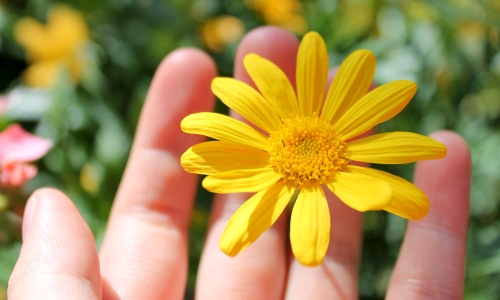
13 This photo depicts a Euryops pectinatus from Longwood Gardens in my palm.
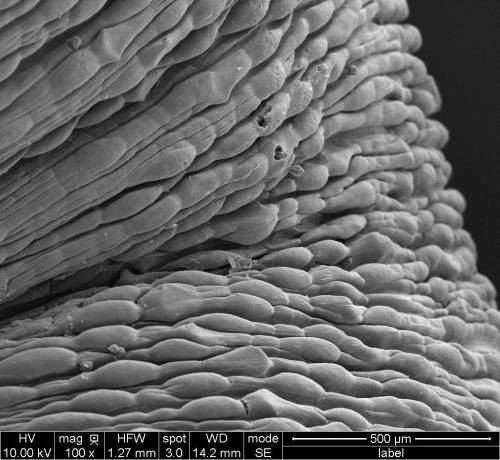
14 This is a picture of the surface of Leptosynapta clarki obtained with a scanning electron microscope. L. clakri is a small burrowing sea cucumber found in False Bay, San Juan Island, Wa. Unlike a typical sea cucumber, L. clarki does not have tube feet and has a smooth body wall, which gives L. clarki a vermiform look.

15 This is a photograph of an Aiptasia pallida anemone, as seen through a compound light microscope. Photo was taken with an iPhone camera.
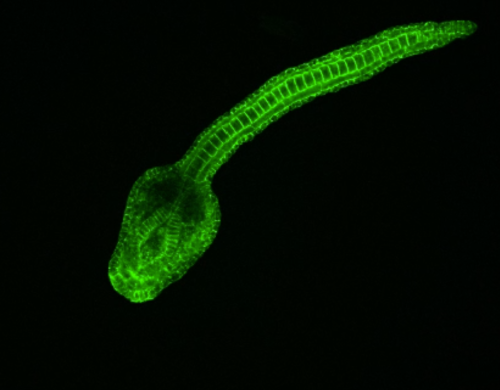
16 VIDEO: A Ciona intestinalis embryo 14 hours after fertilization, stained using a Phalloidin toxin. The embryo and its developing neural structures were viewed using confocal microscopy. (click here for video)
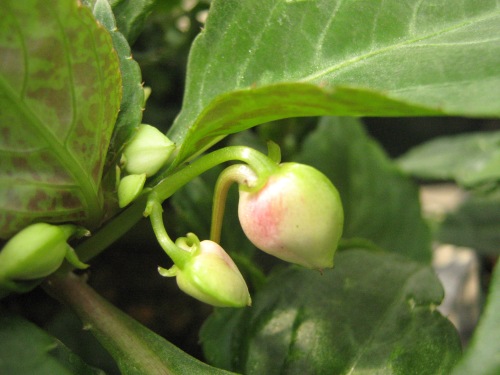
17 This Impatiens walleriana plant was grown as a morphology project for Plant Biology. Its new buds are just beginning to blush pink, foreshadowing the vibrant pink pigment that will accumulate in mature flowers. On the largest bud, the hooked nectary extends downward. It is from this nectary that the flower will secrete excess sugars in the form of sweet sugar water, which may attract pollinators (and pests!). Also visible in the foreground is the violet speckled underside of the Impatiens leaves. This contrasts with the relatively smooth green–interrupted only by a dusting of trichomes–of the top surface of the leaves.
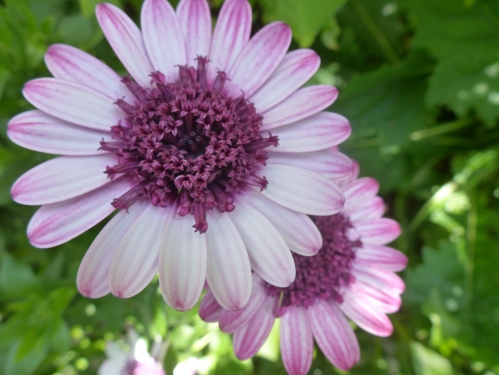
18 I took this picture when visiting Longwood Gardens on the 16th of April 2014 with my Biology 02 class. You can see beautiful little florettes in the middle of this purple and white flower.
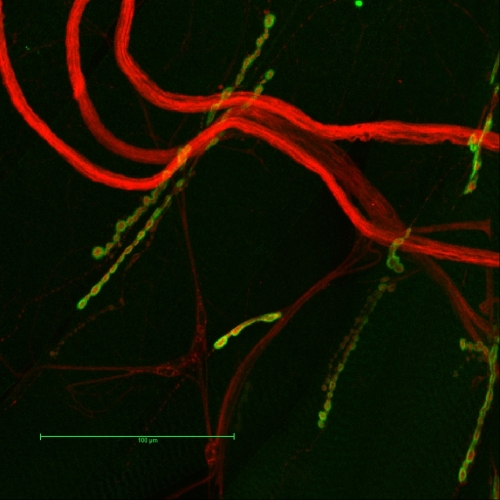
19 Confocal max projection of dorsal-side abdominal musculature treated with fluorescent Cy3 labeled anti-HRP (red), anti-DLG, and fluorescent Alexa488 labeled GAM (green). There appears to be six or seven NMJs labeled in the image, which have similar branching patterns of the presynaptic axon terminals innervating the muscles (appear parallel to one another). The postsynaptic membrane of the muscle envelops the motor neuron terminals, which is shown by the stereotyped “beads-on-a-chain” pattern of boutons. The boutons contain presynaptic neural tissue on the inside (red) with postsynaptic scaffold protein DLG on the outside (green). The boutons, which release glutamate, the primary excitatory transmitter at the larval NMJ, appear to be approximately the same size in each of the NMJs. Image is 20x objective with zoom factor 3. Scale bar = 100 mm.
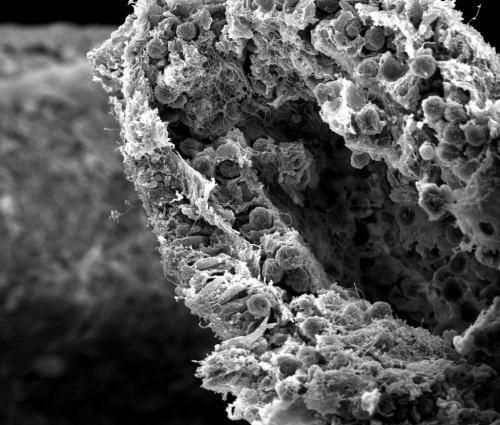
20 Cross section of a tentacle from Aiptasia pallida captured with electron microscopy. This image clearly shows the two dermal layers, the ectoderm and the endoderm, being separated by the mesoglea, a layer of extracellular matrix, along with the anemone’s endosymbiont, Symbiodinium.
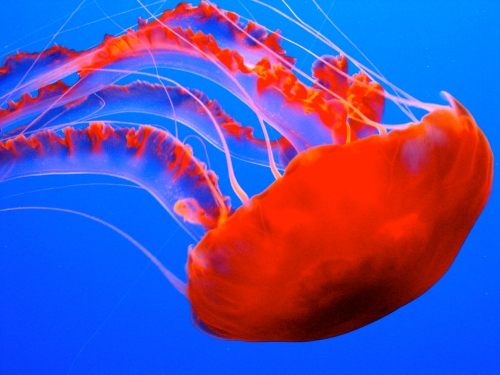
21 Sea Nettles (Chrysaora fuscescens) are native to the East Pacific Ocean, from Canada to Mexico. These jellyfish can grow to be 1 meter across, but they tend to remain smaller than 50cm. This photo was taken at the Monterey Bay Aquarium in California.
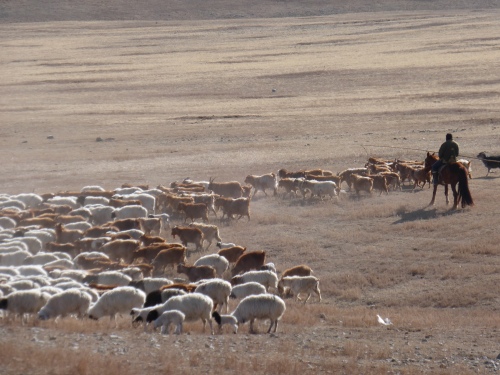
22 Symbiotic Relationships on the Steppe. My host father, a nomadic herder from Bayankhongor Aimag, uses an uurga to herd his sheep and goats in April. Mongolia’s continental climate poses a unique challenge to both nomads (who constitute roughly 30% of the country’s population) and herd animals with extreme high and low temperatures, as well as frequent droughts and dzuds (intense winter conditions). According to my host father, a changing climate is responsible for decreased precipitation, desertification, and the disappearance of many streams in his soum (county).
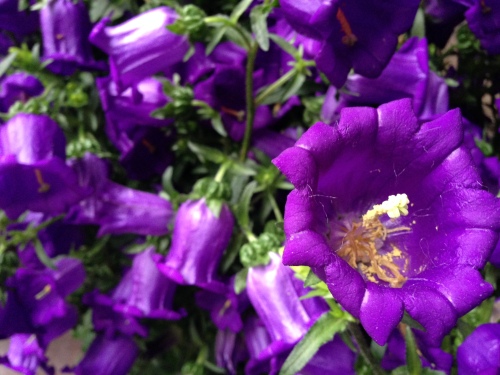
23 These are purple bell flowers taken by my iPhone 5.
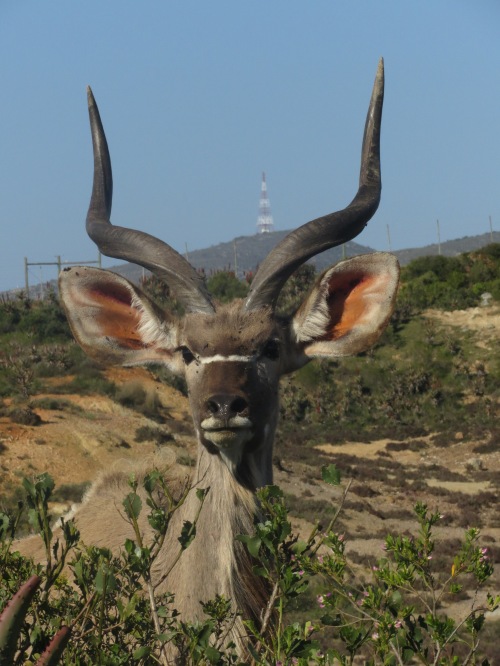
24 Male greater kudu (Tragelaphus strepsiceros)taken at the Garden Route Game Lodge in Albertinia, South Africa. The greater kudu is a species of woodland antelope found throughout Eastern and Southern Africa.
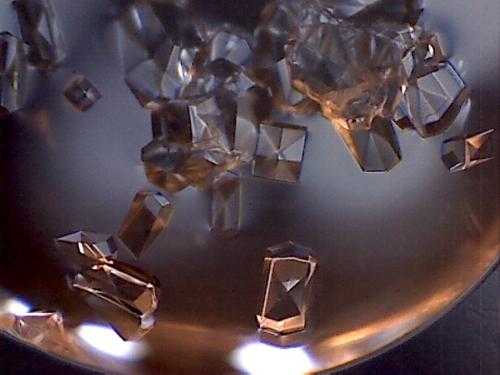
25 The image is a close up of CaCl2 salt crystals found in a single lysozyme drop. The crystals were synthesized using the hanging drop and vapor diffusion method, then photgraphed in the Biochemistry Lab of Swarthmore College using a digital QX5 microscope.
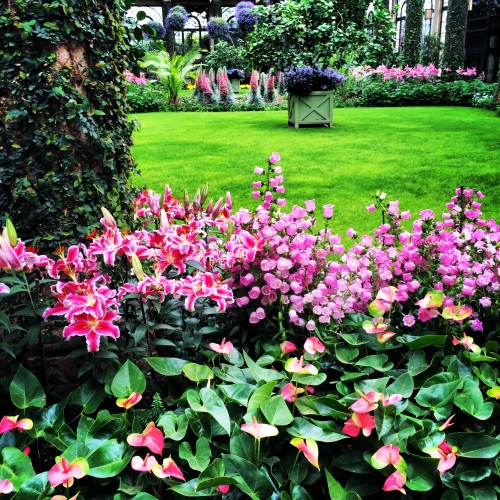
26 Green is good for the eyes, and a flower is a jubilant surprise.
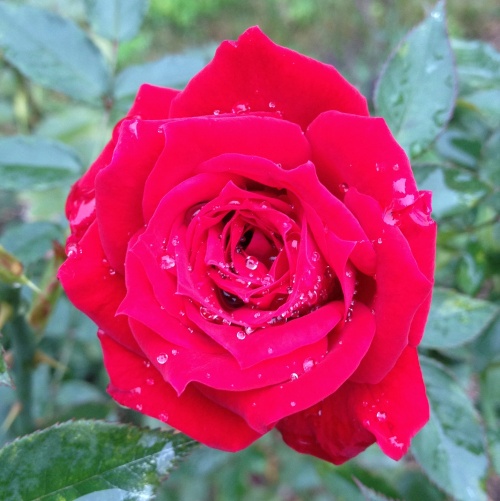
27 a rose from our rose garden here at Swarthmore. I took it the morning
after a rain and thought it looked good. I realize it isn’t the most scientific or biological
picture but I thought it wouldn’t hurt to submit it anyway.

28 A 5µm section of the symbiotic anemone Aiptasia pallida. The specimen has been paraffin embedded, sectioned, and stained with Masson’s Trichrome Stain. The collagen is stained blue, the cytoplasm and muscle pink, and the nuclei black. The extracellular matrix, or mesoglea, is stained blue between the two cell layers, the ectoderm and gatroderm. In this particular section the hollow body column is filled with acontia, the threadlike defensive organs filled with explosive cnidocyte cells. The stained section was visualized using bright field microscopy.
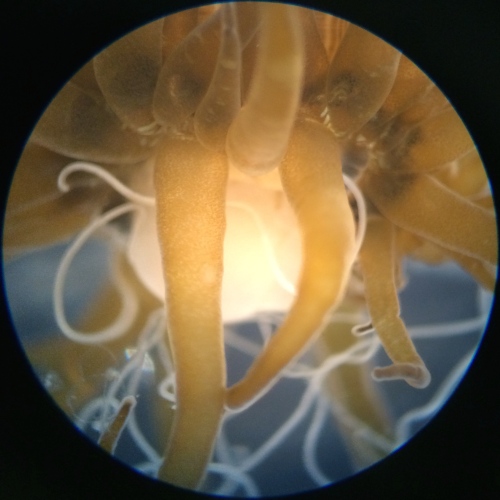
29 a photo I took of a sea anemone through the microscope!
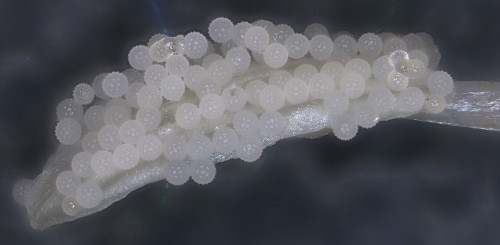
30 This is an anther from an Ipomoea purpurea (Morning Glory) flower of the ‘President Tyler’ variety in full bloom. This image was taken with an extended depth-of-field microscope on a glass slide.
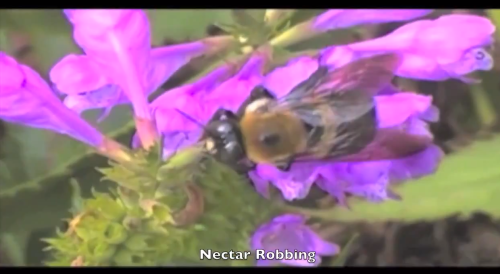
31 VIDEO: Captured here are two species of bees collecting nectar. Some of these bees are true pollinators–they feed through the natural opening of the flower and potentially gather or unload pollen. Other bees pictured are “nectar robbers”, and instead extract nectar from a hole they poke in the base of the flower. This can allow them to feed on a wider variety of flowers, but generally does not result in pollination. (click here for video)

32 Three Italian honey bees drinking honey water. The picture was taken inside one of the Environmental Studies research project bee hives.
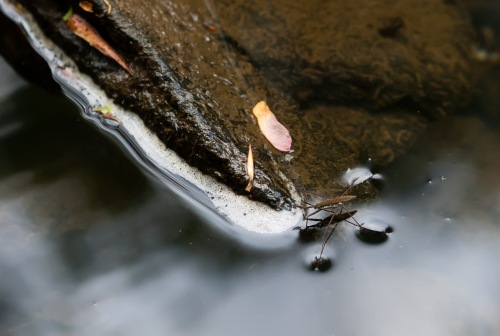
33 This is a member of the Gerridae family of bugs, more commonly known as water striders or water bugs. These bugs have more than one thousand hydrophobic microhairs per mm on their body, protecting them from splashes of water and giving them their namesake ability to walk on water. This one was found during springtime in the Crum.
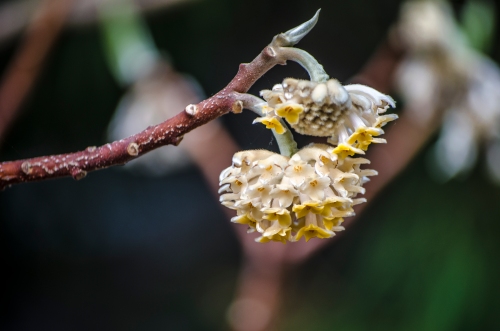
34 Oriental paperbush (Edgeworthia chrysantha) photographed on Swarthmore College’s campus. The plant’s bark is a source of high quality paper which gives the plant its English name, paper bush.
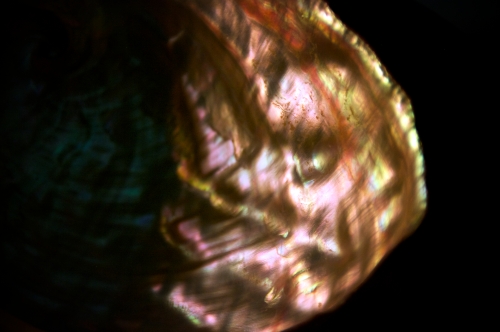
35 Shown here is a detail of the interior of an Abalone shell. The iridescent pattern is produced by the nacre, an organo-mineral composite comprised primarily of alternating layers of aragonite pseudohexagonal tablets and organic matrix secreted by the epithelial cells of the mantle tissue. Nacre coats the interior shell of bivalves, gastropods, and cephalopods and serves as a defense against parasites and debris.
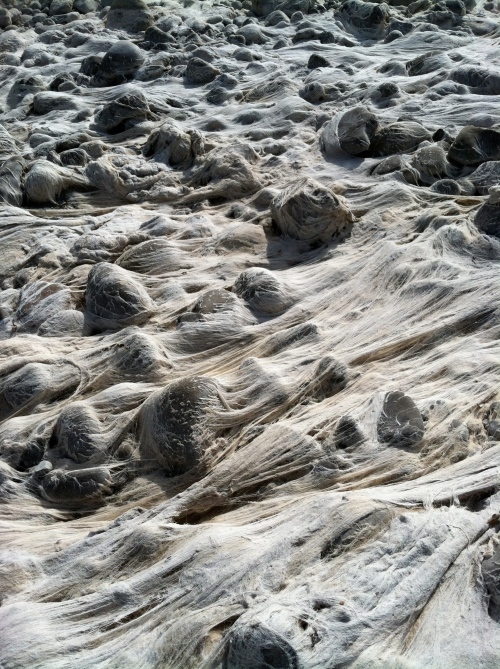
36 California is depleting its water sources at an unsustainable rate.” The most piercing, motivating thing can become dull when you hear it over and over. We still have to prompt ourselves, in a different vocabulary. This image was taken during a river clean-up effort of the Ventura River over spring break 2014, in a place where the rapid current once incessantly pulled at the now ghostly algae threaded around the rocks.
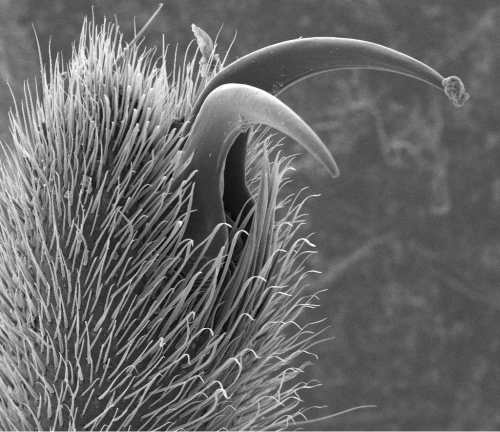
37 The front leg of a water strider from Crum Creek. Water striders are slender, dark colored insects of the family Gerridae, that can be seen on the surfaces of ponds, streams, and marshes throughout the Northern Hemisphere. Water striders’ hairy legs increase the total amount of displaced fluid by increasing the surface area that makes contact with the water. The claws of the front legs, shown in this picture, allow the water strider to dig into the water and pull themselves across the surface. This picture was taken with a scanning electron microscope at 120x magnification.

38 Hsp17.6 expression in 37°C heat shocked Arabidopsis root. The RootScope, an automated fluorescent microscope built by the Kaplinsky lab, was used to collect images and quantitate Hsp17.6p:GFP response in Arabidopsis seedlings to measure heat shock response over time.
